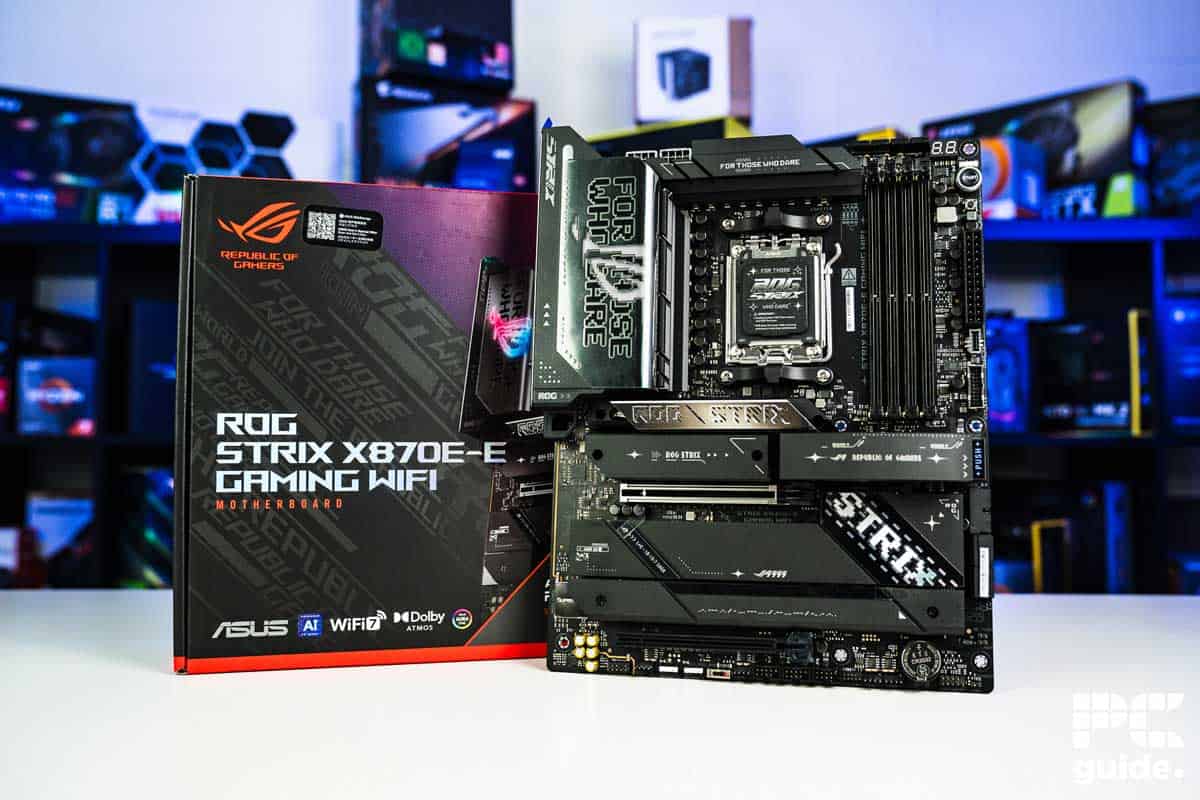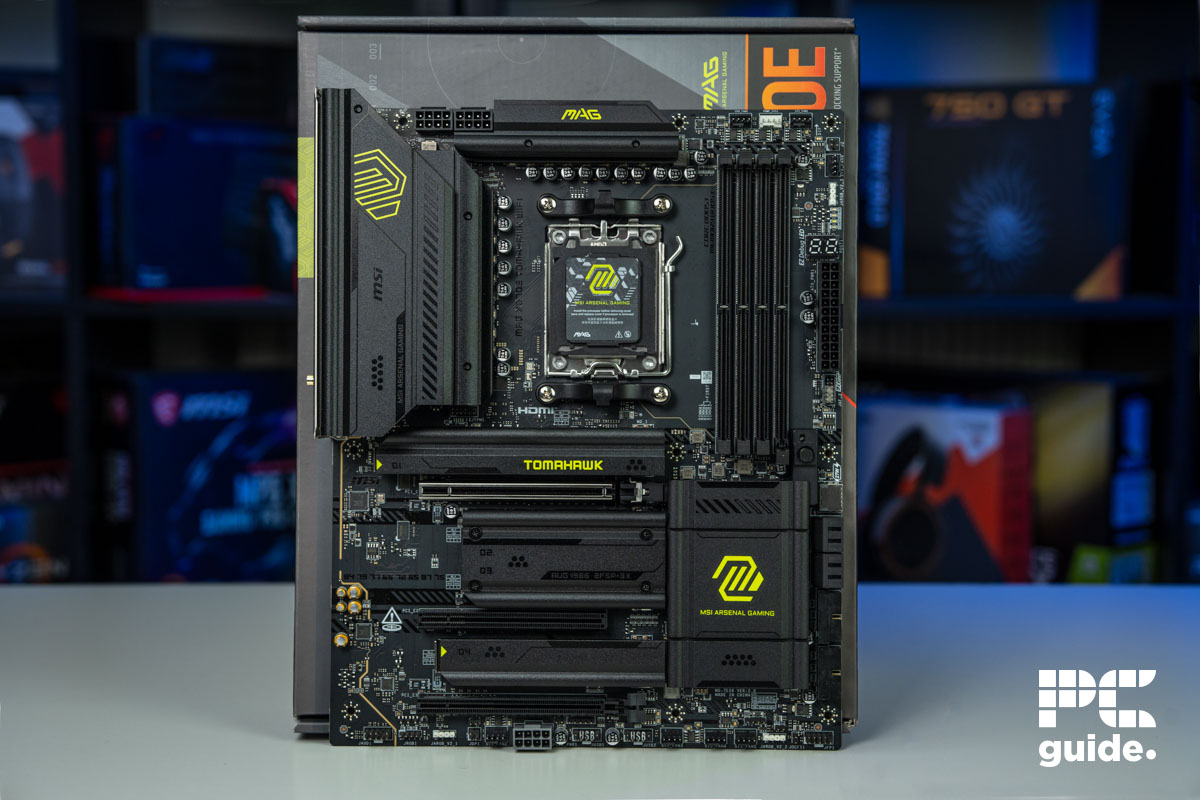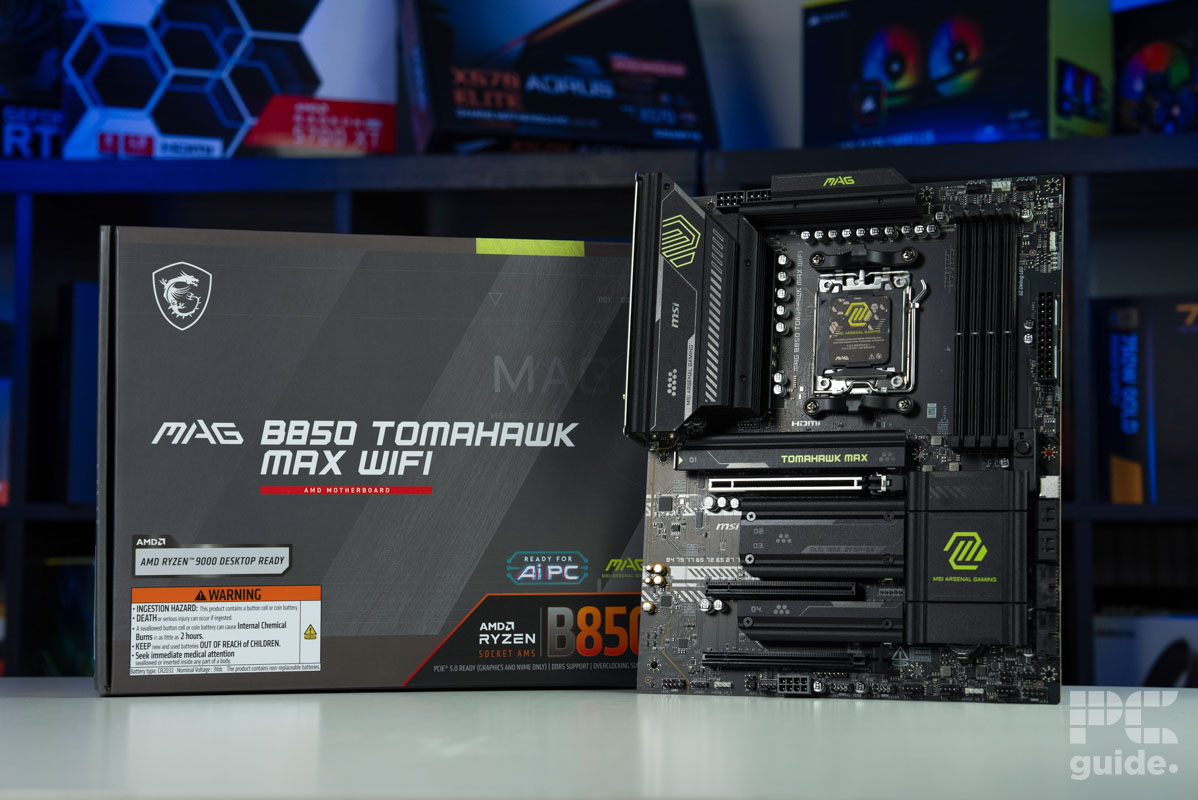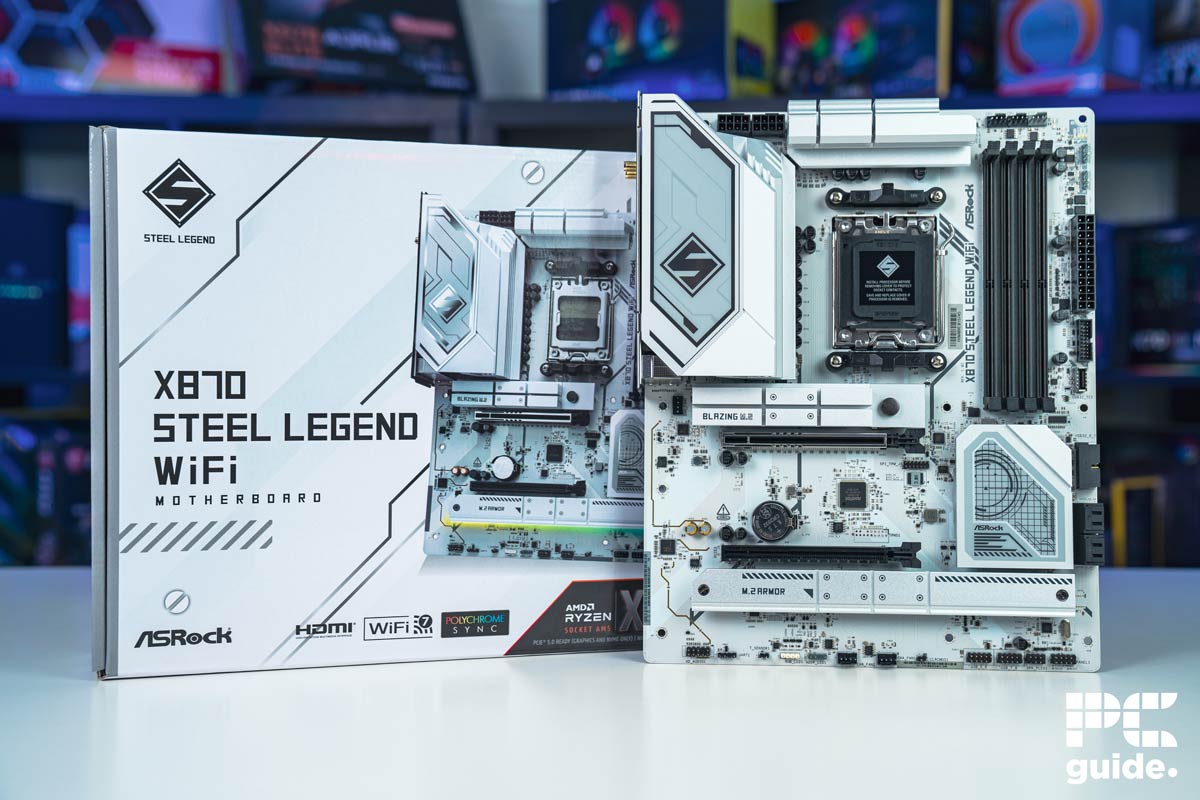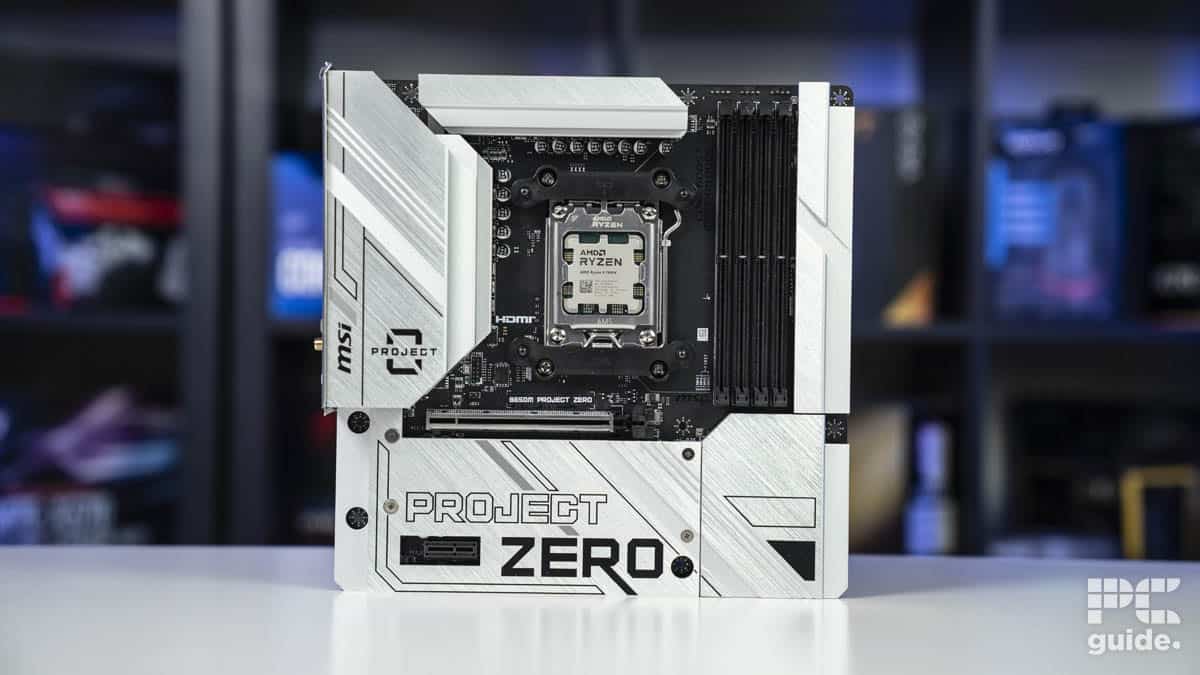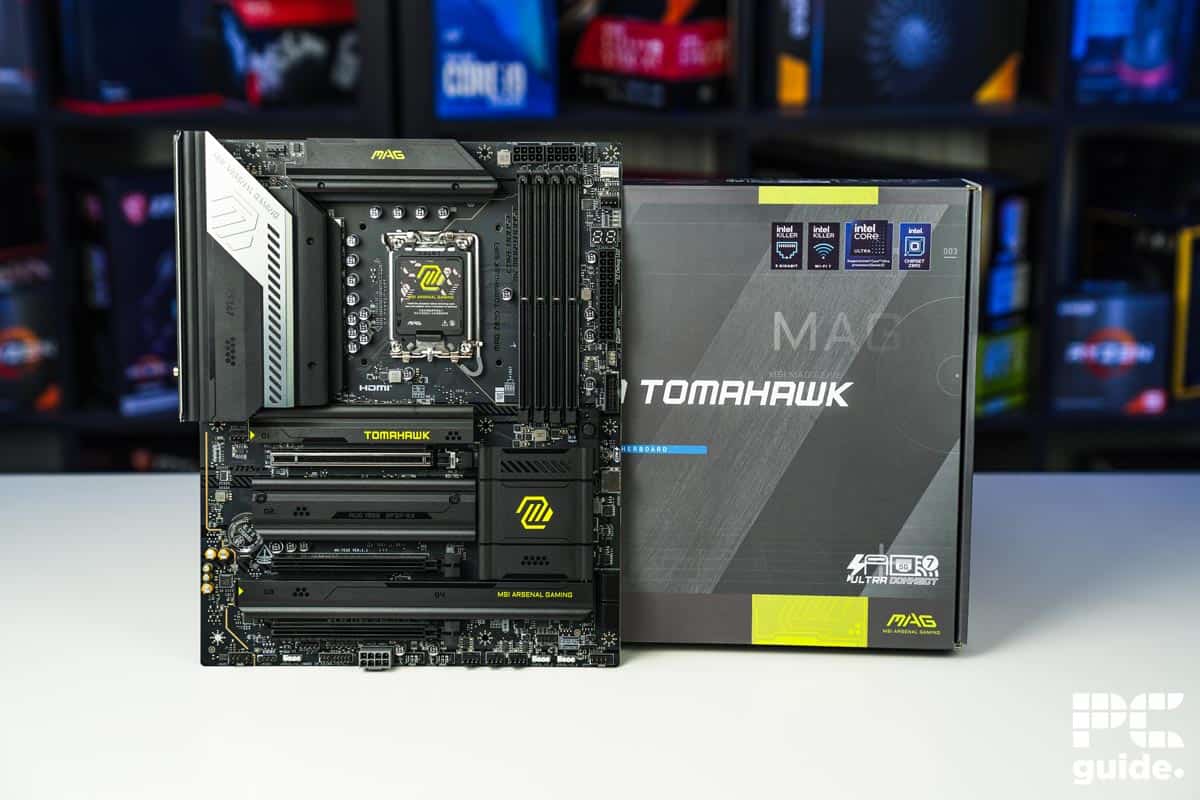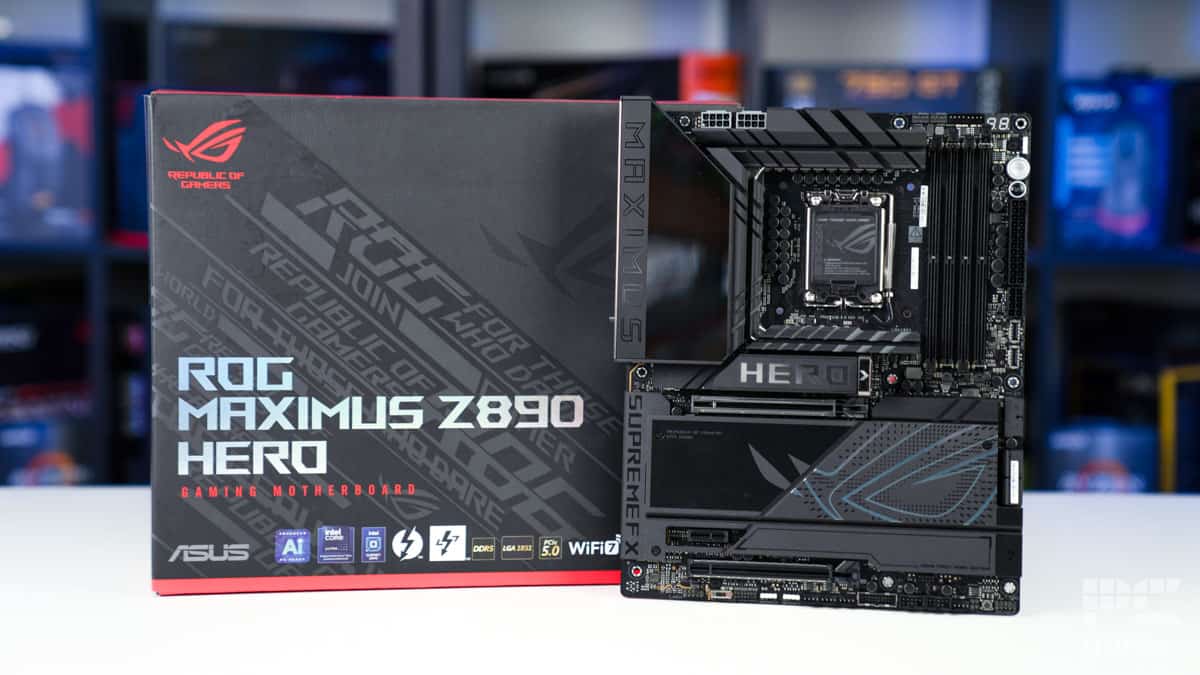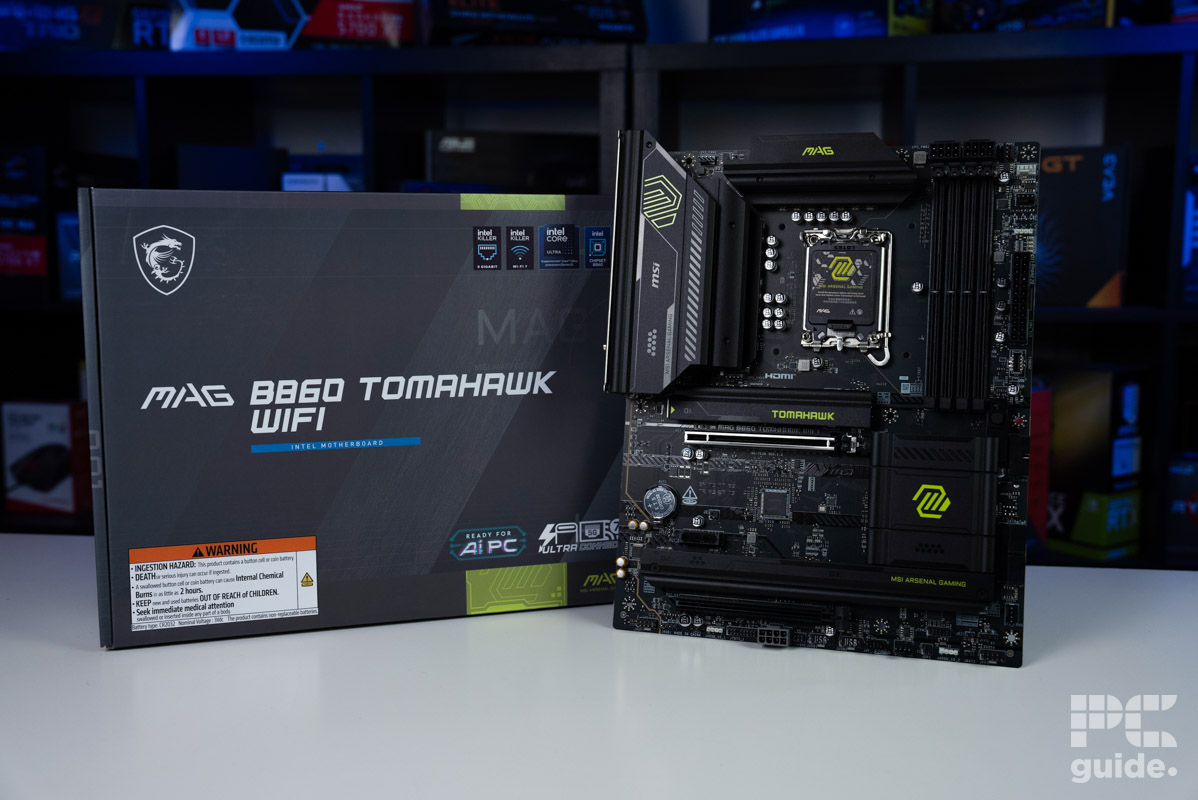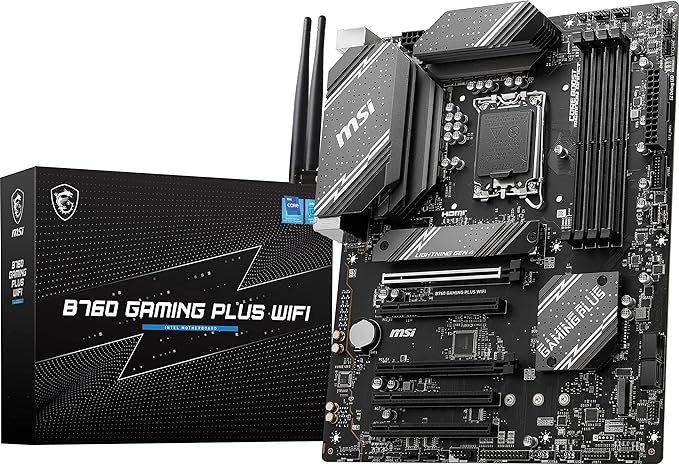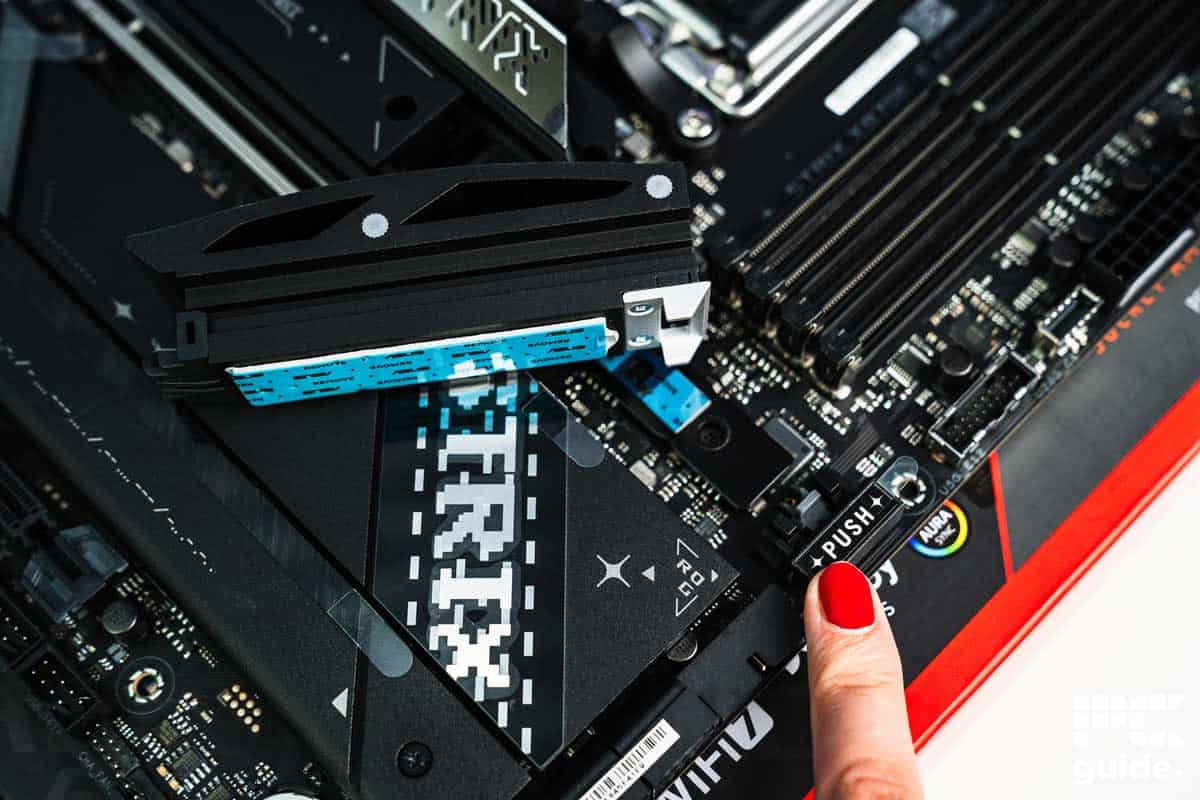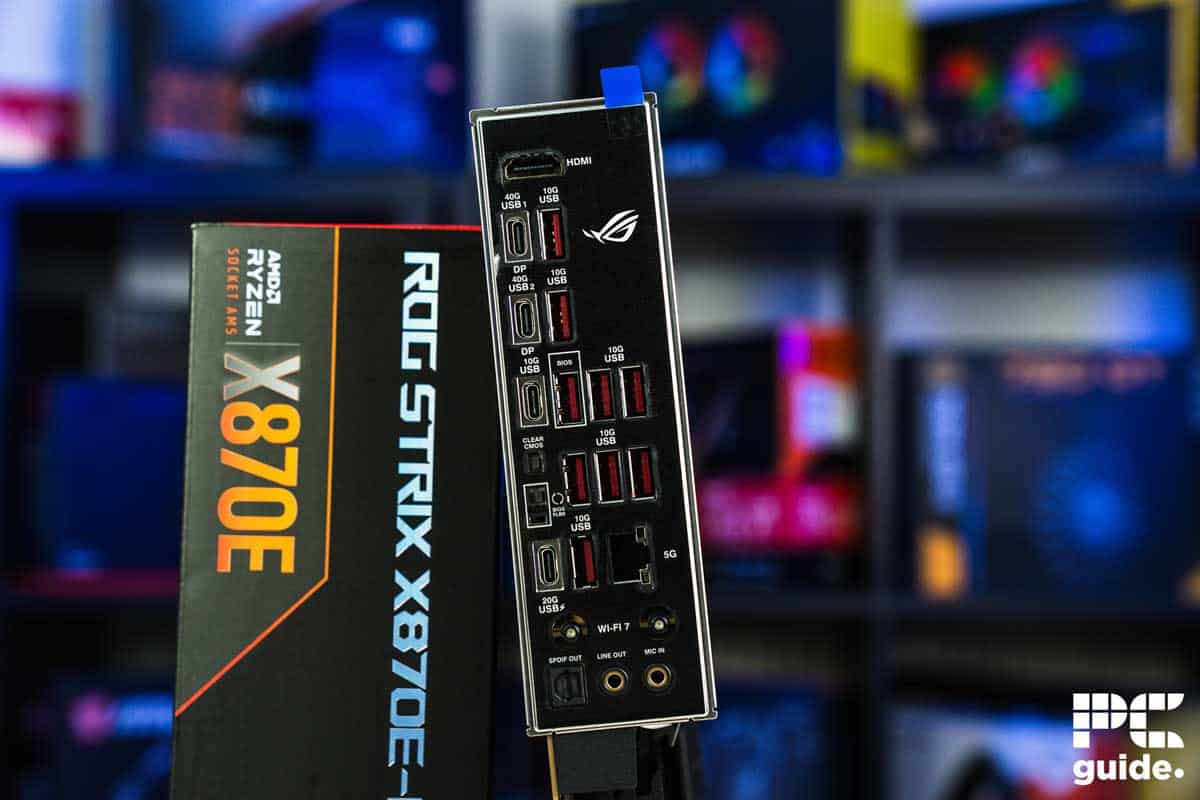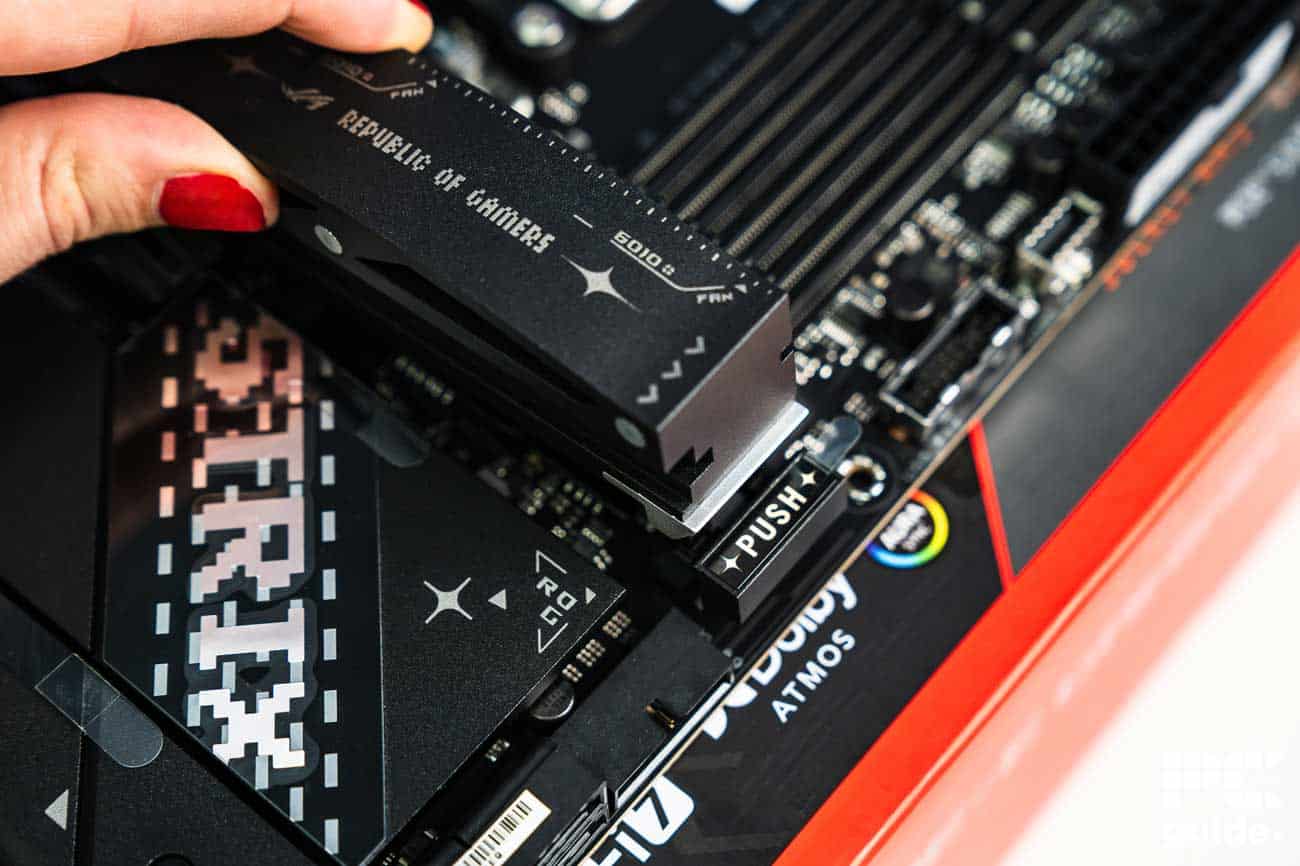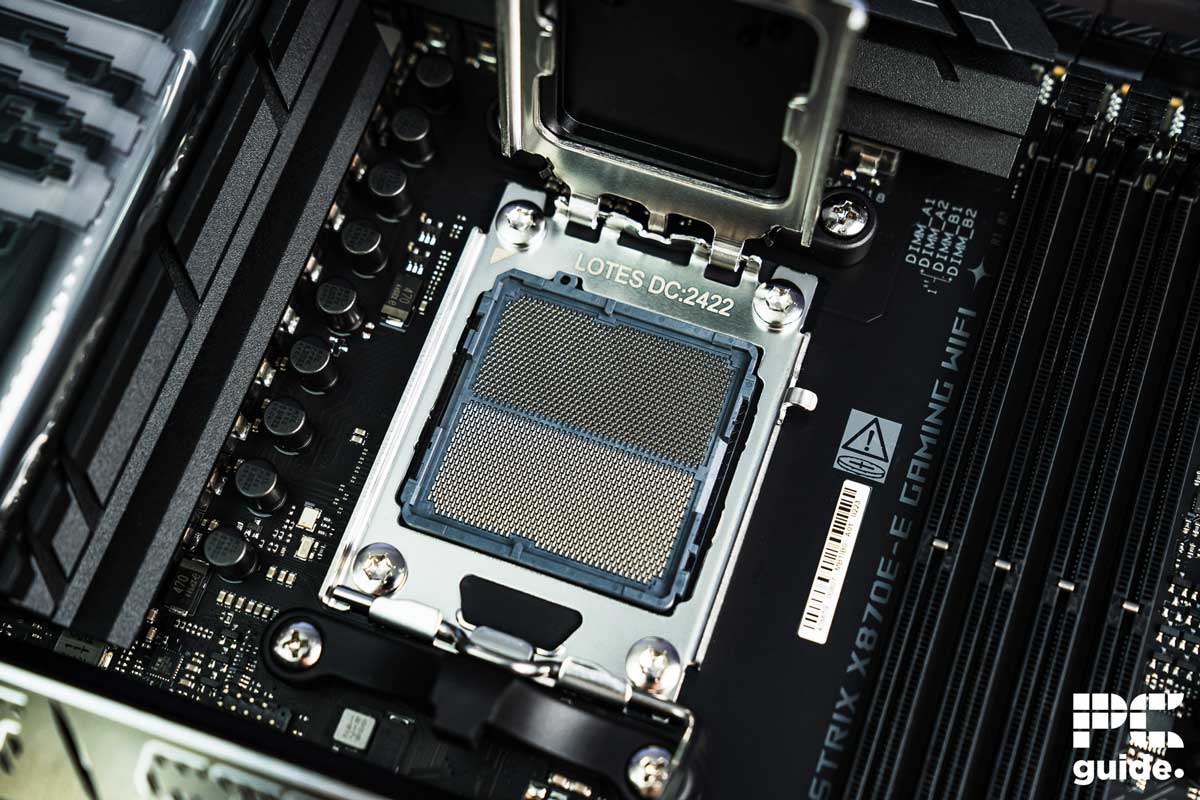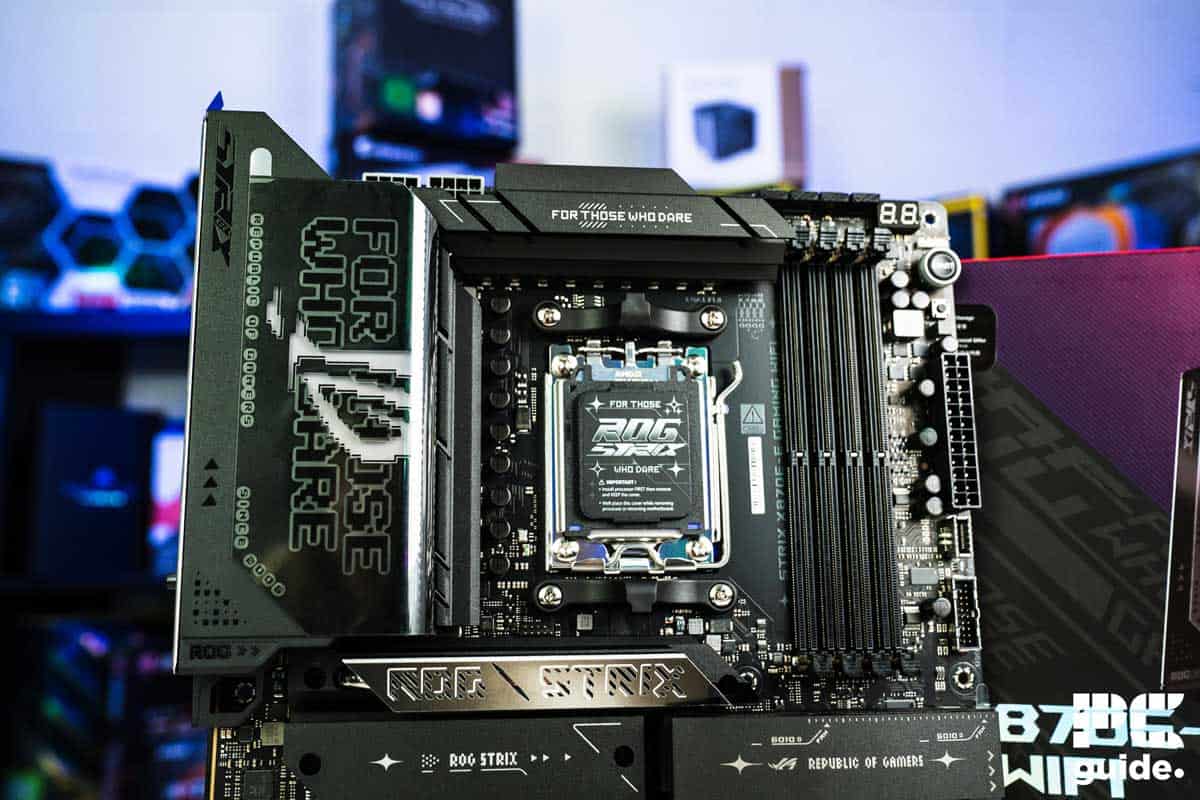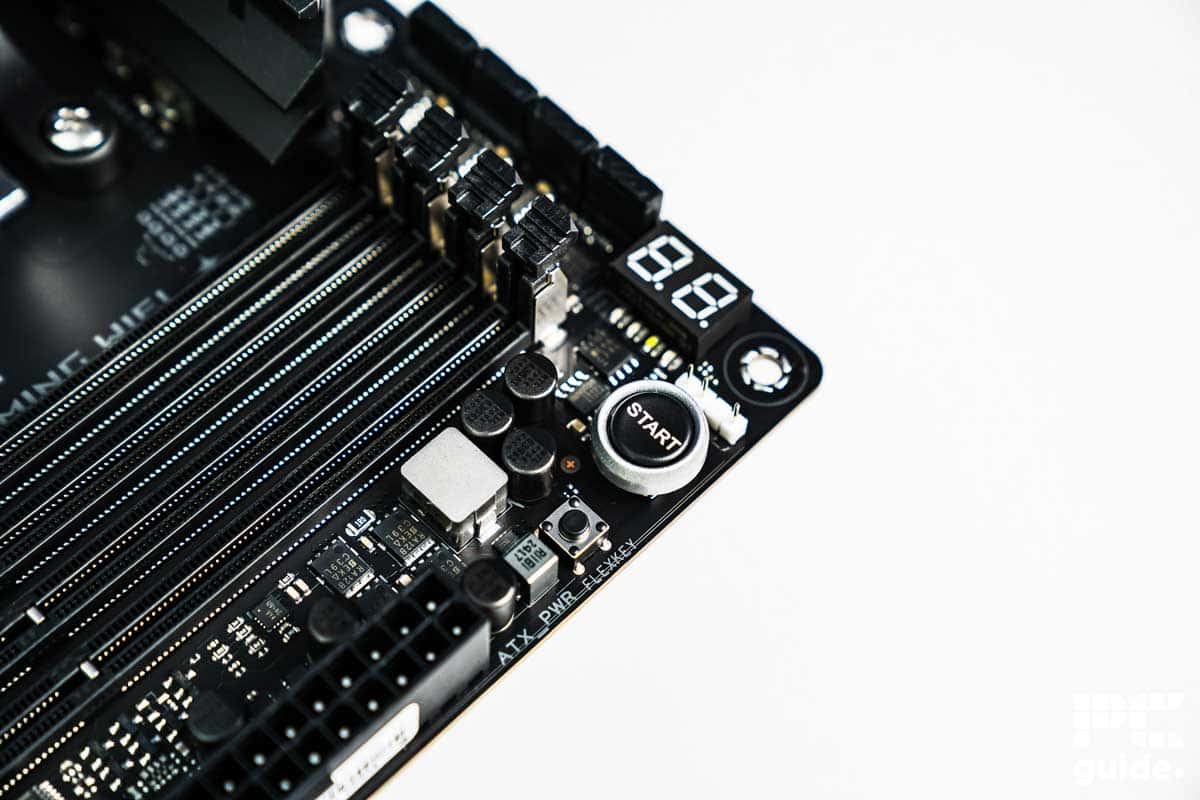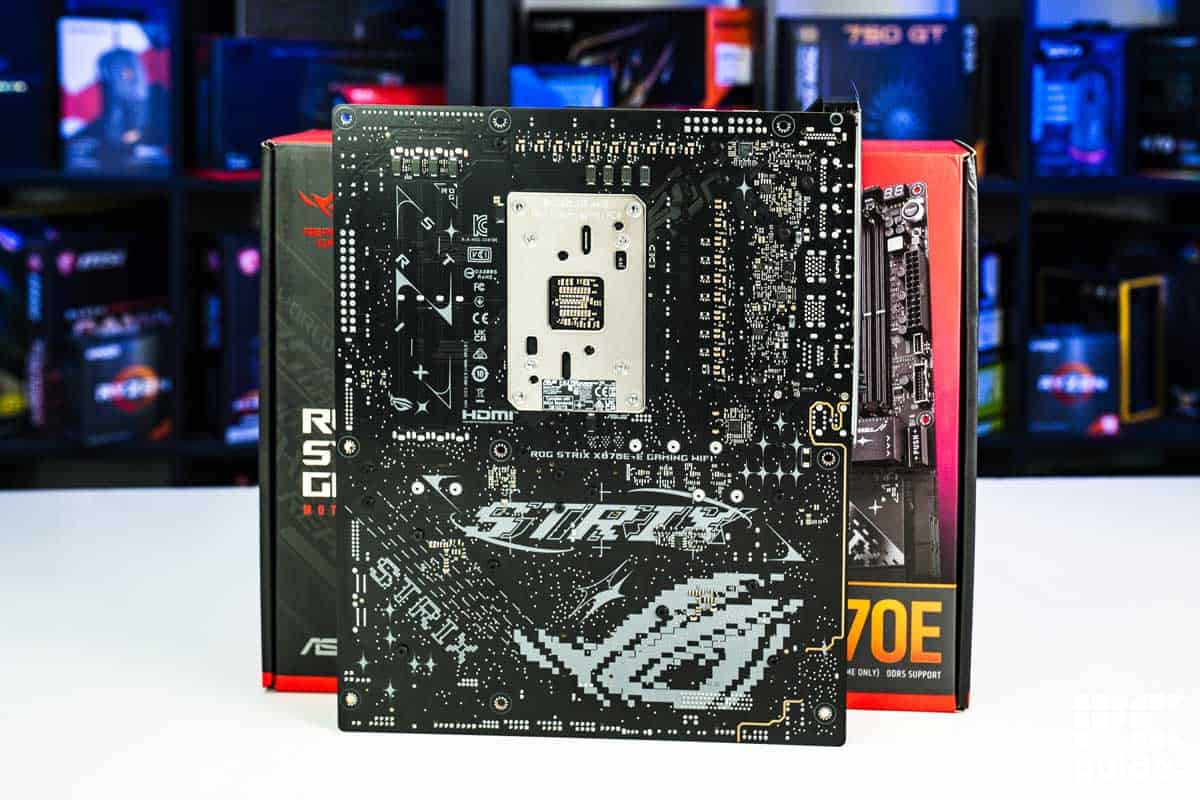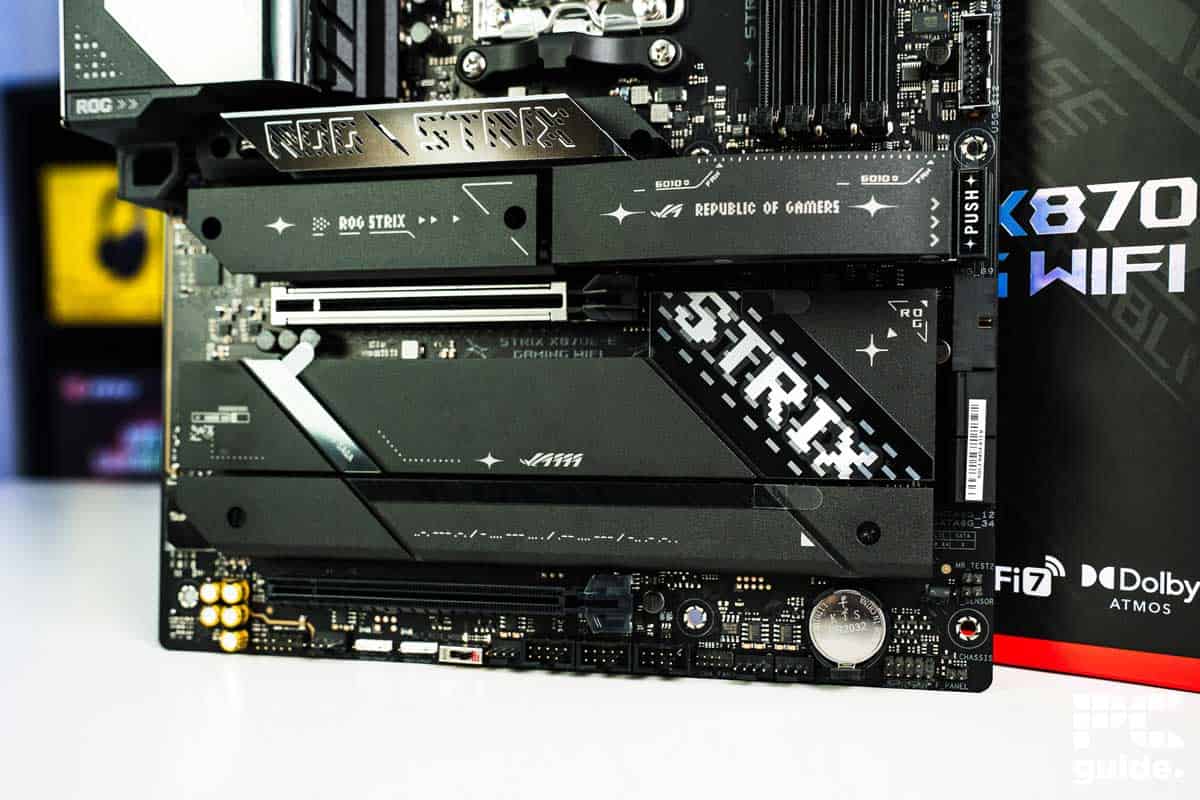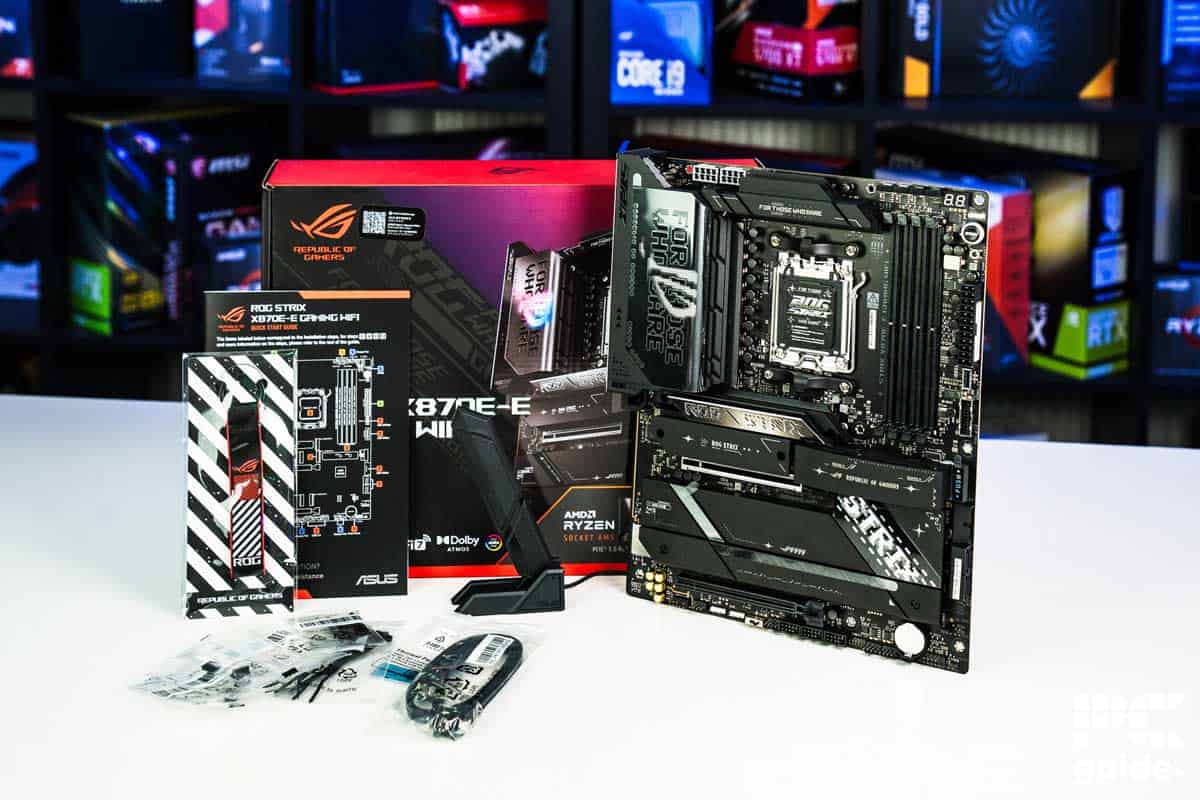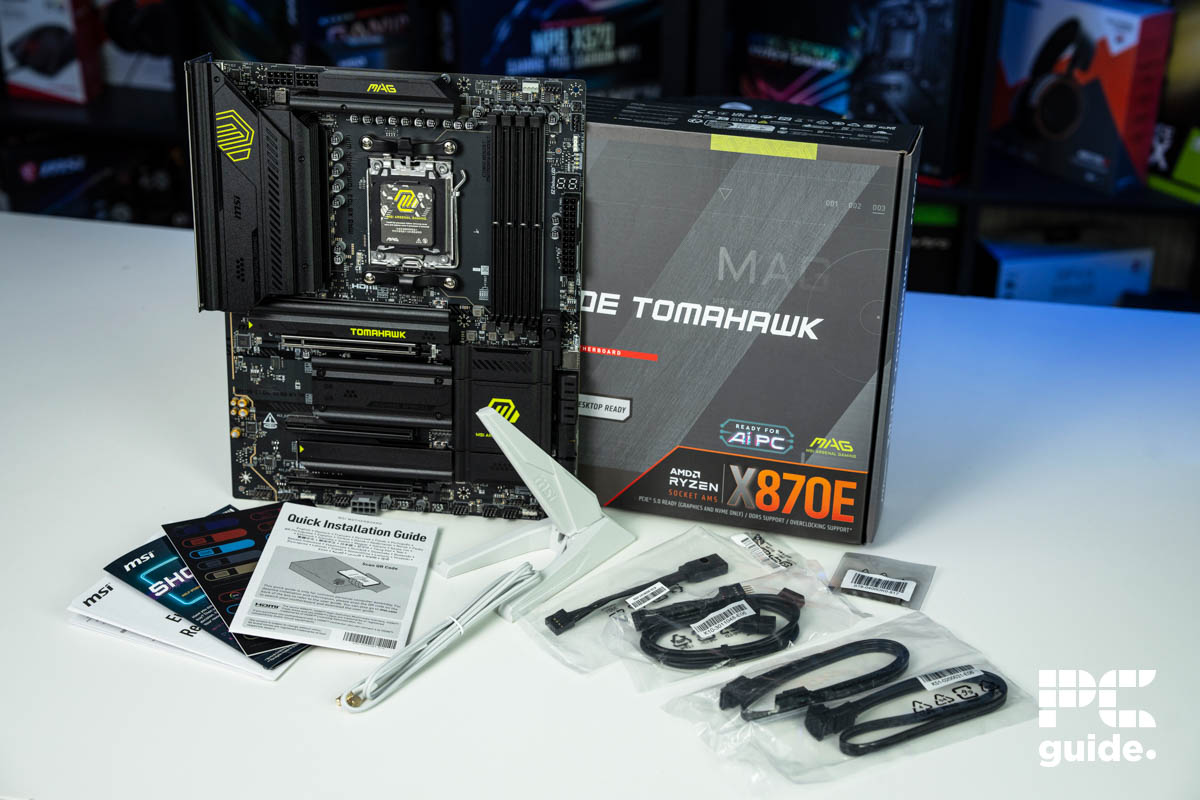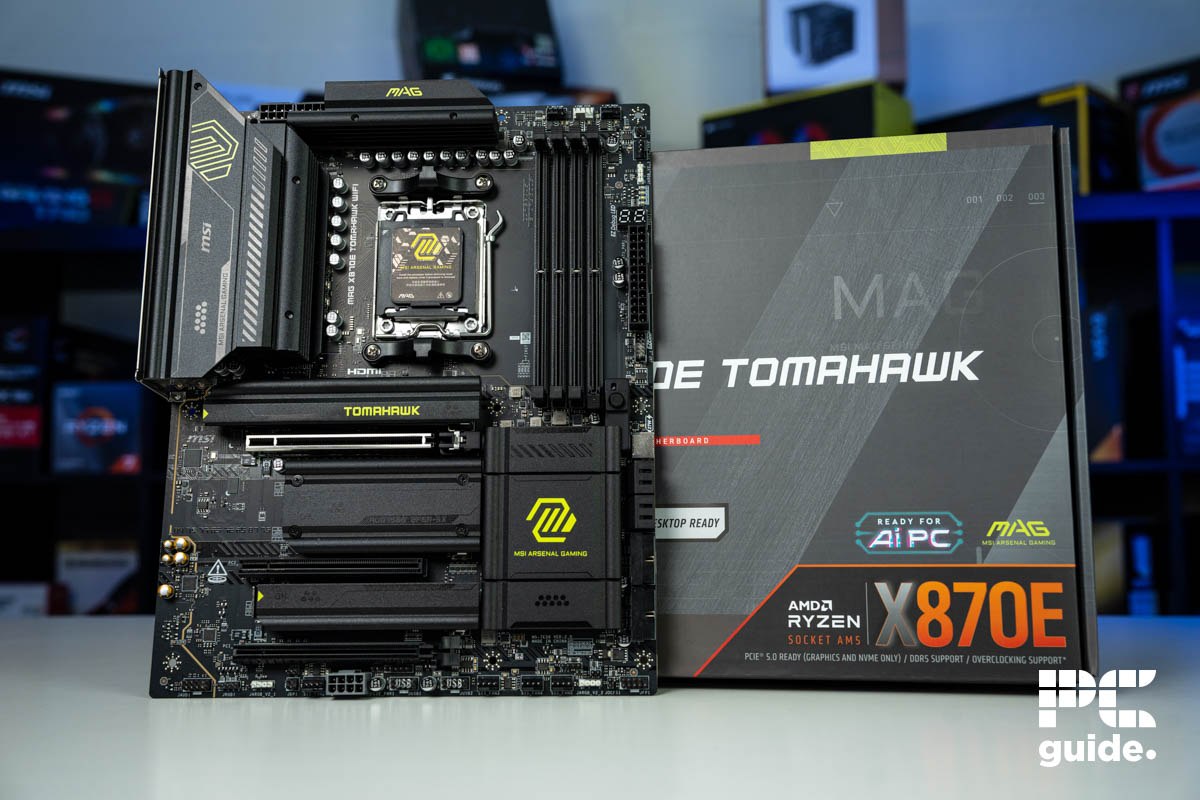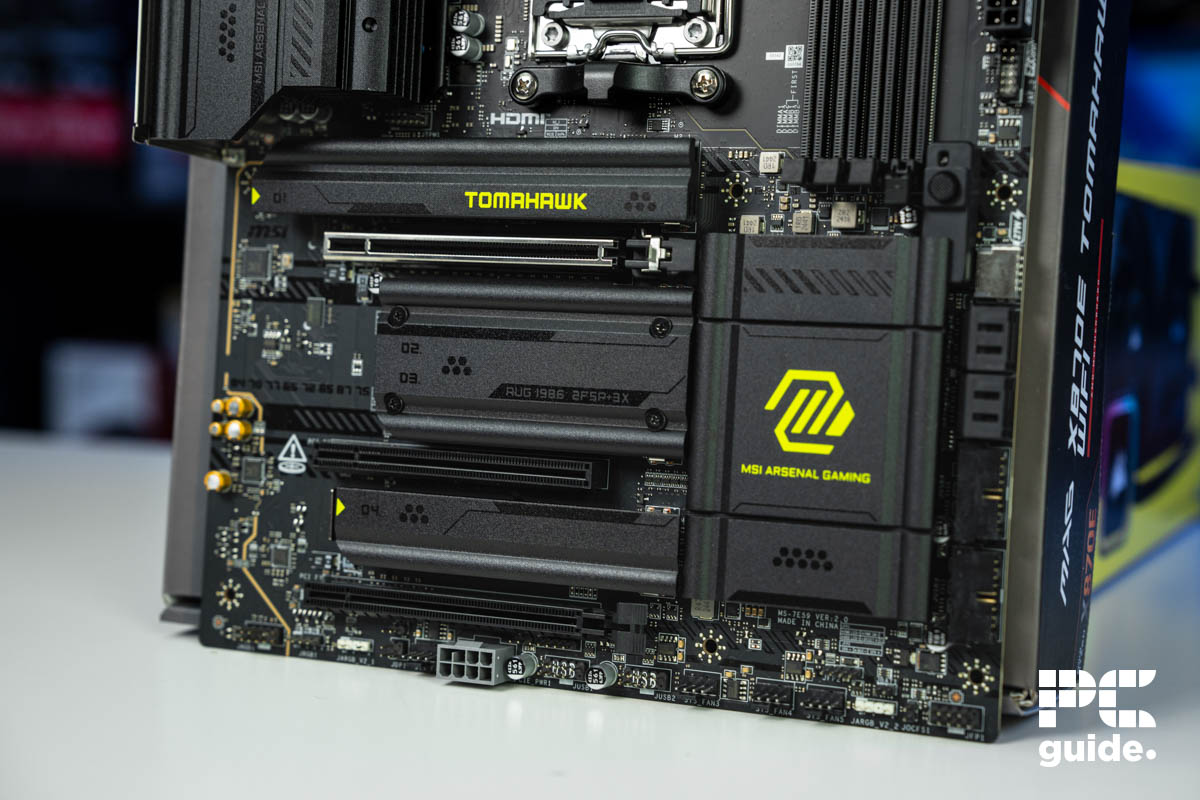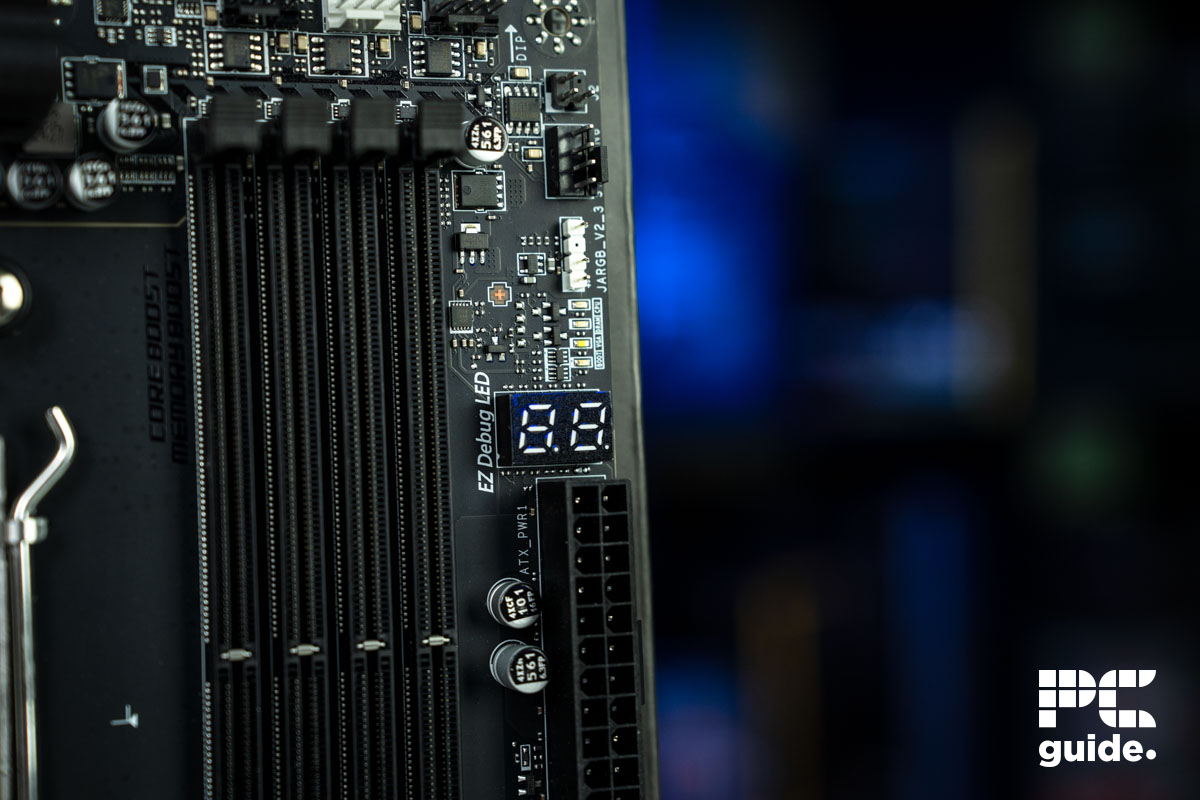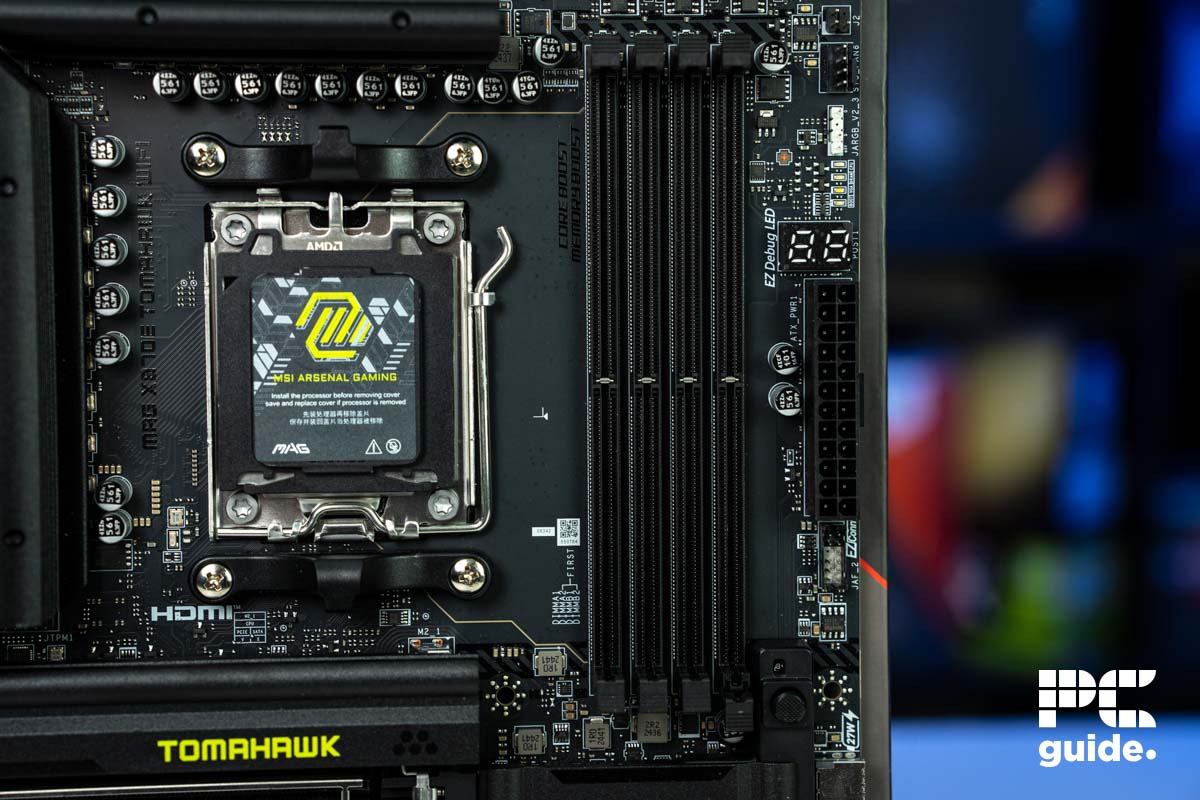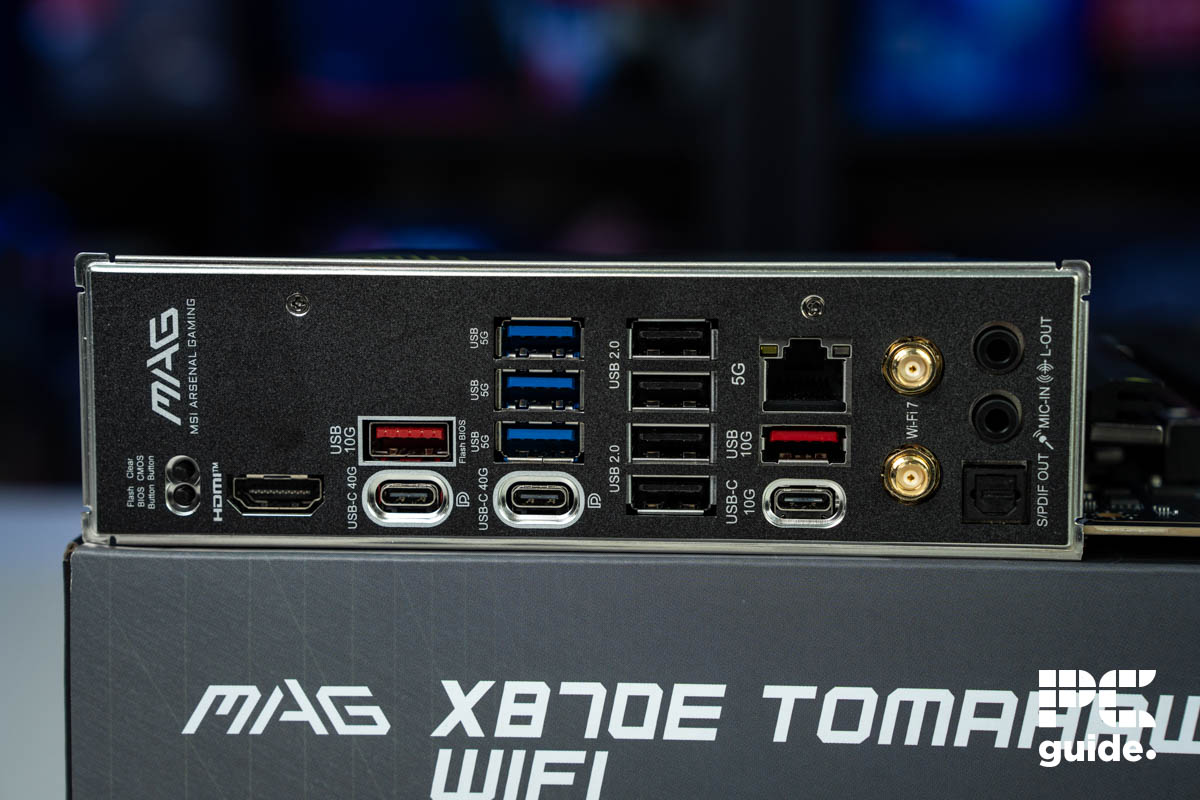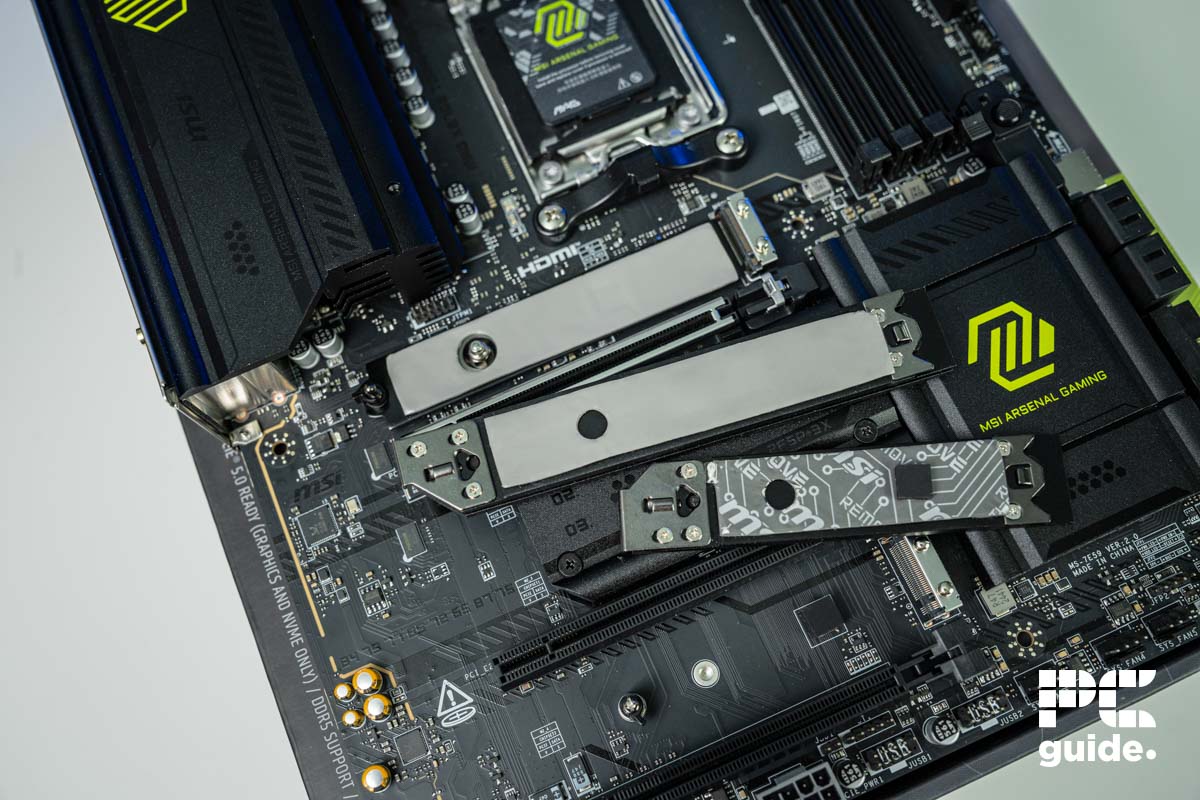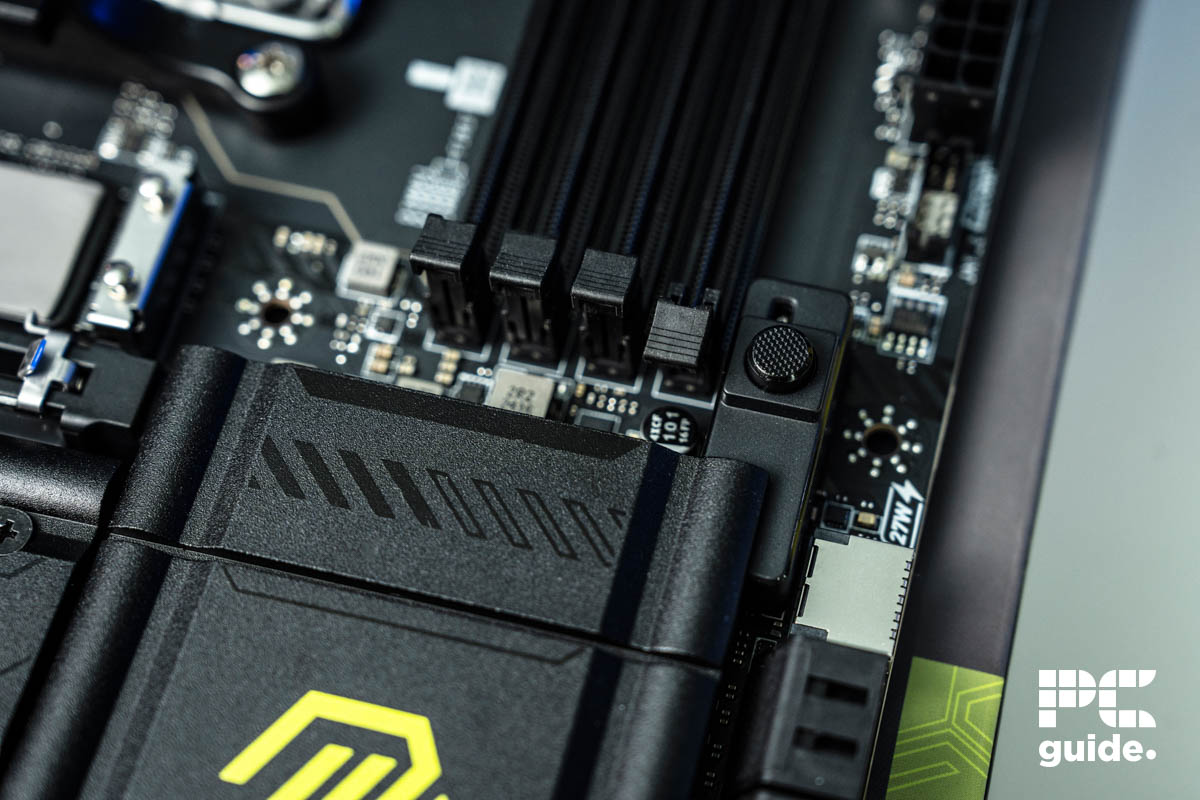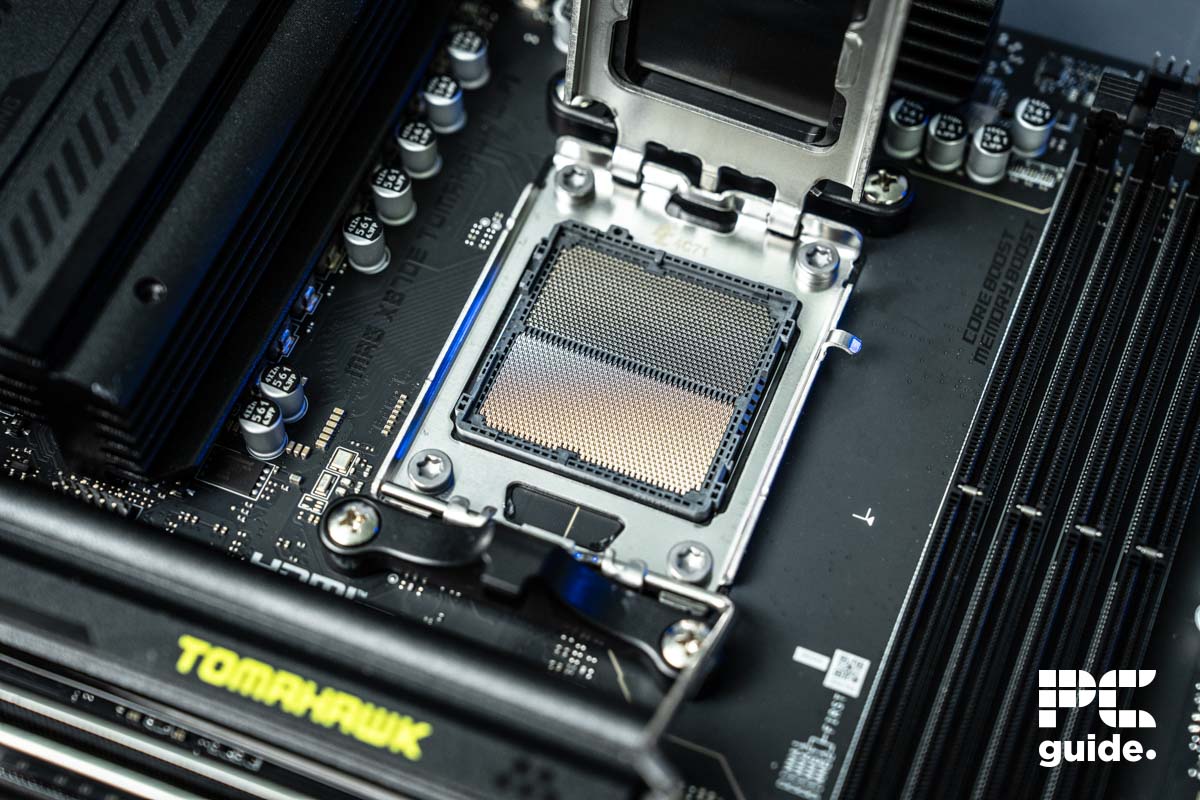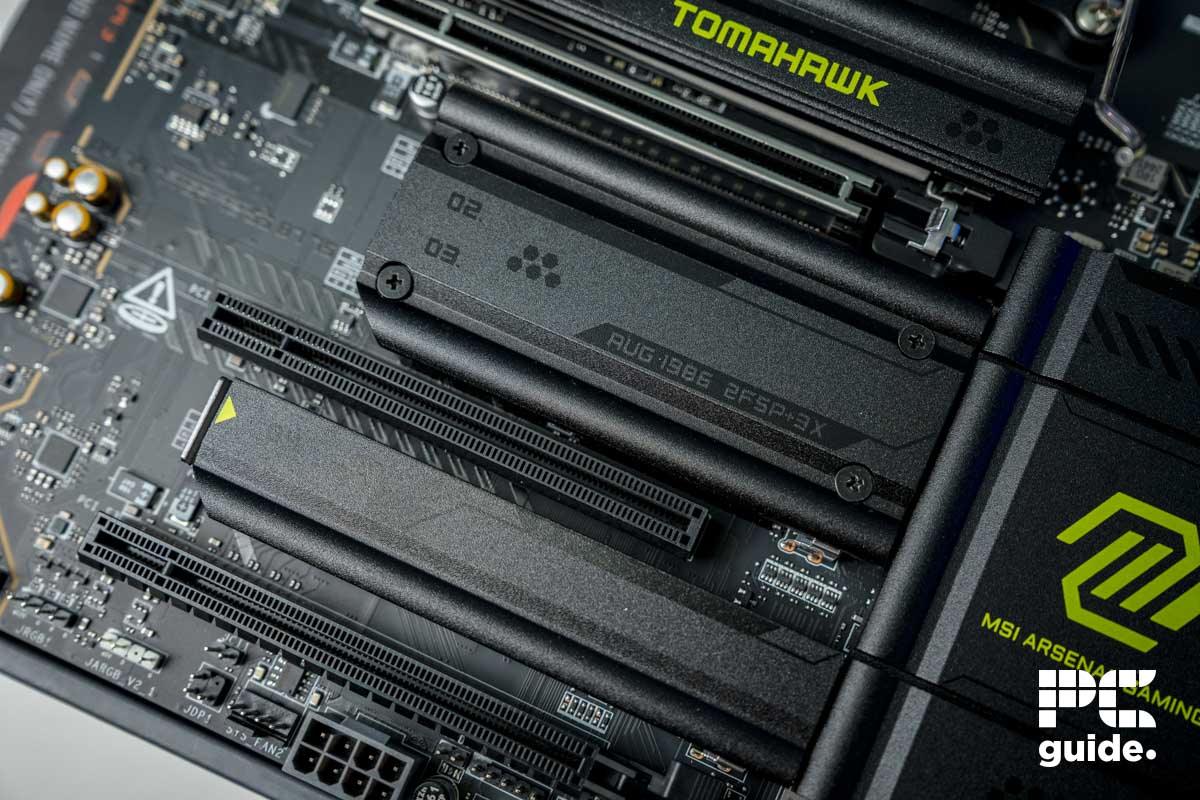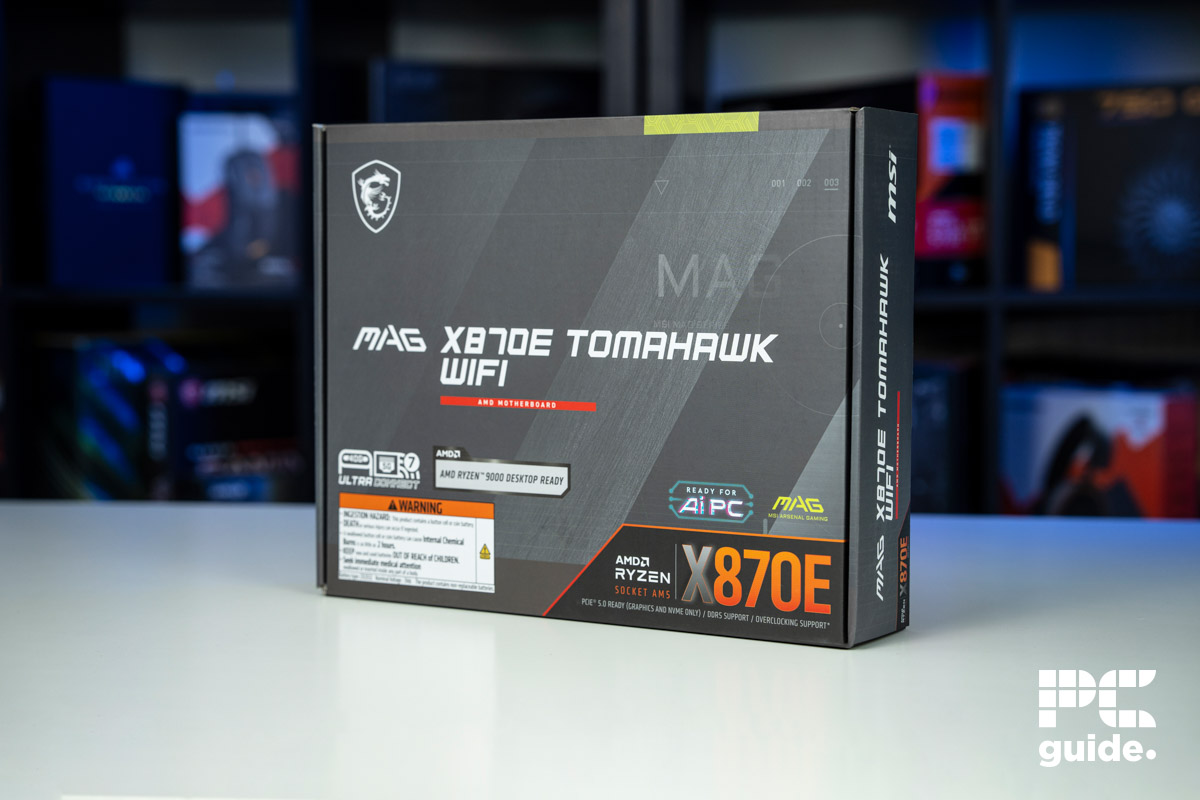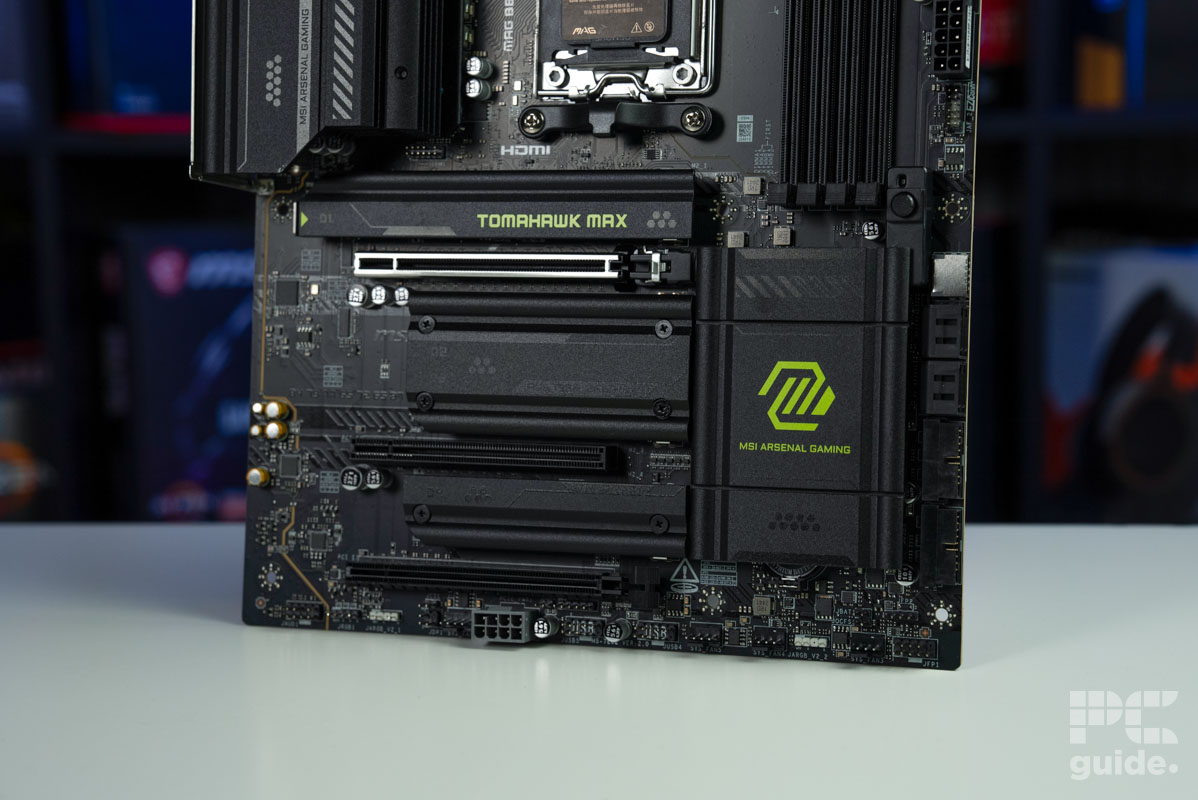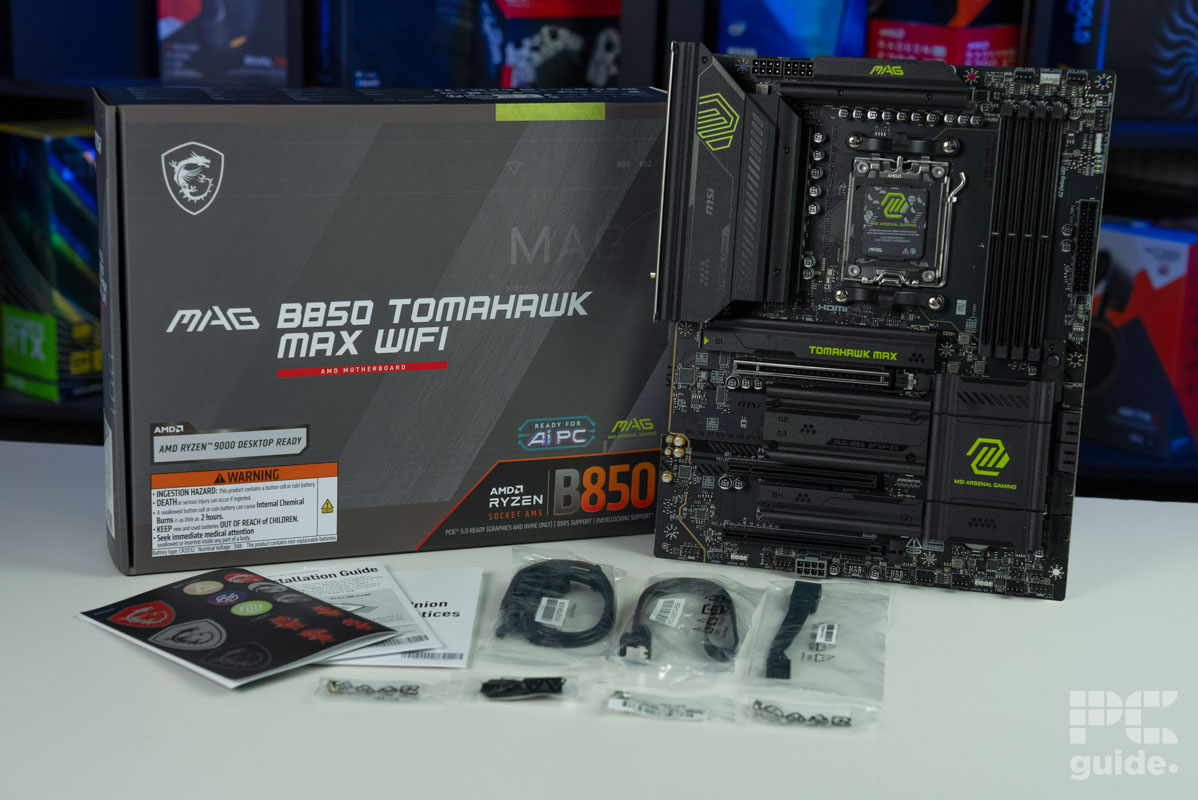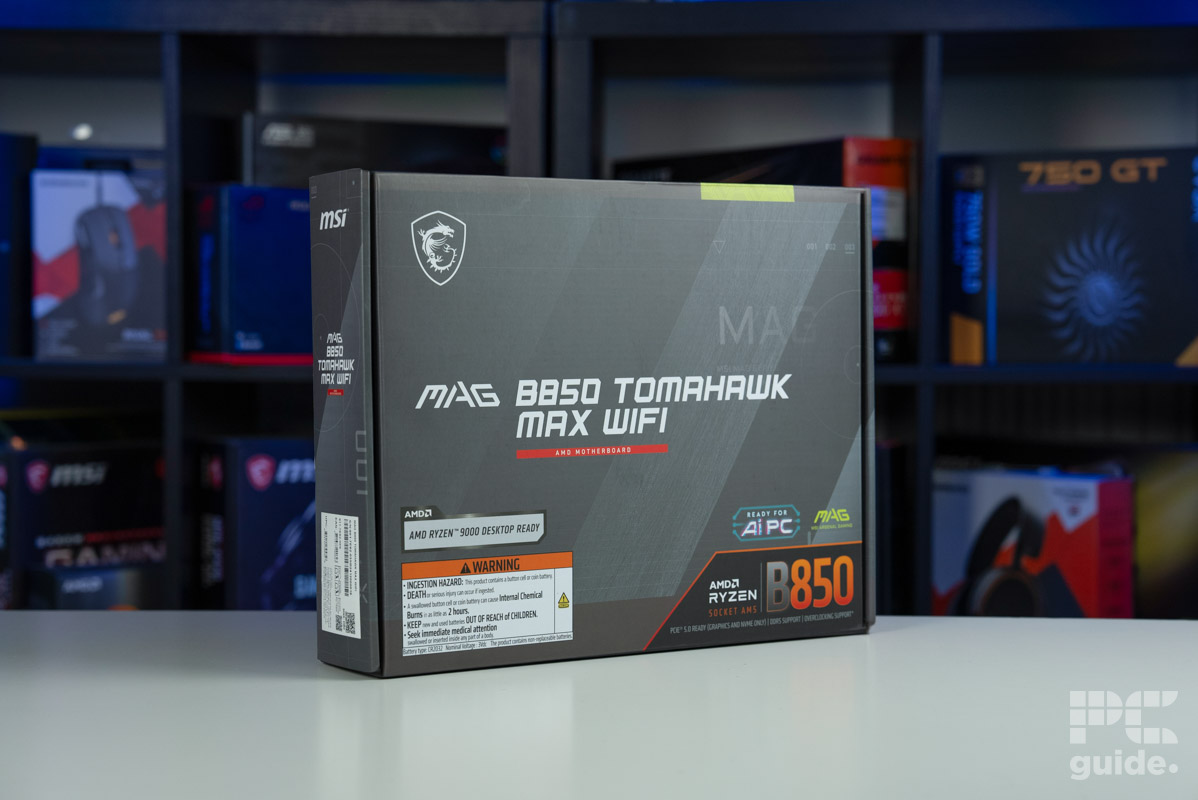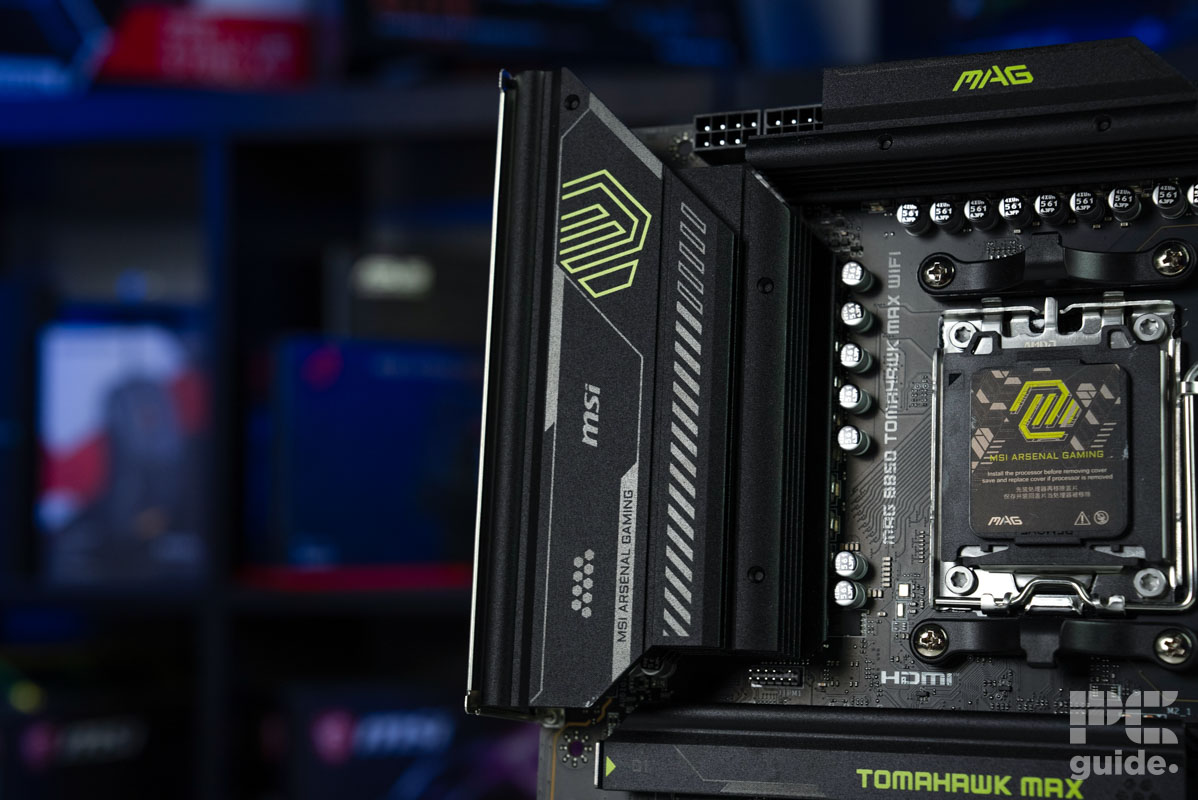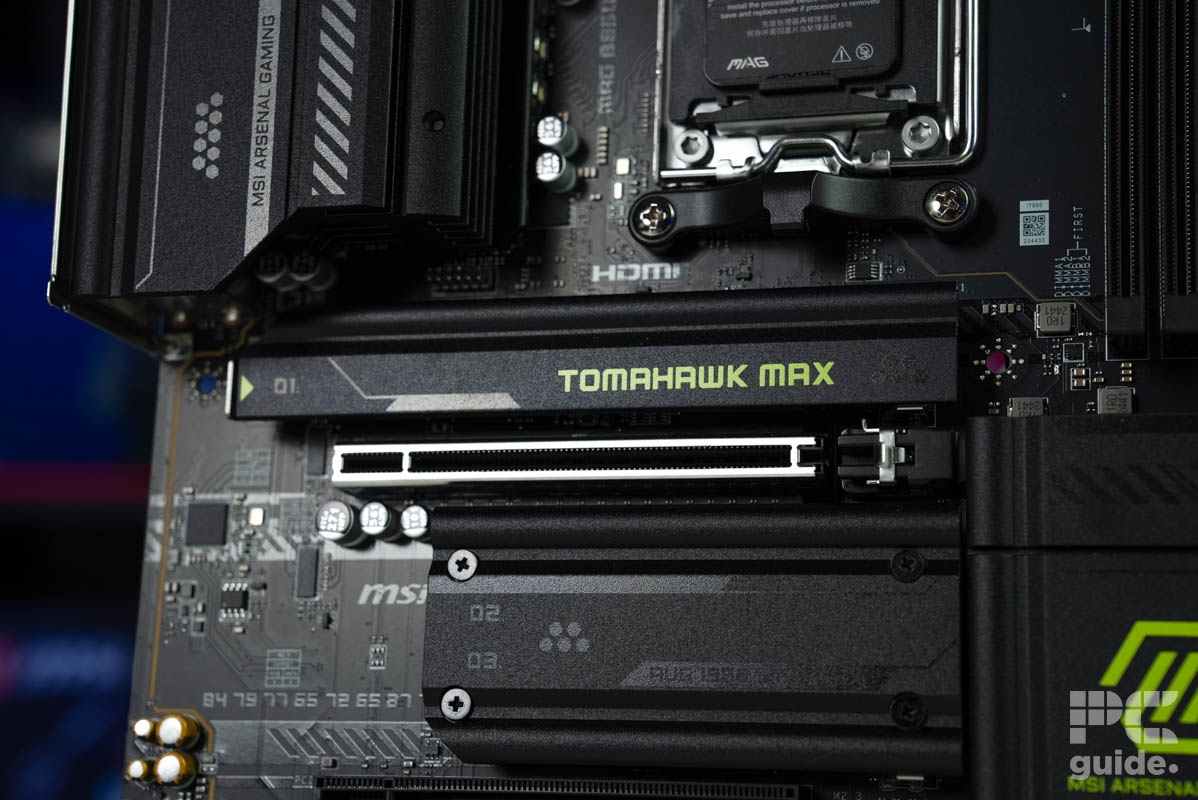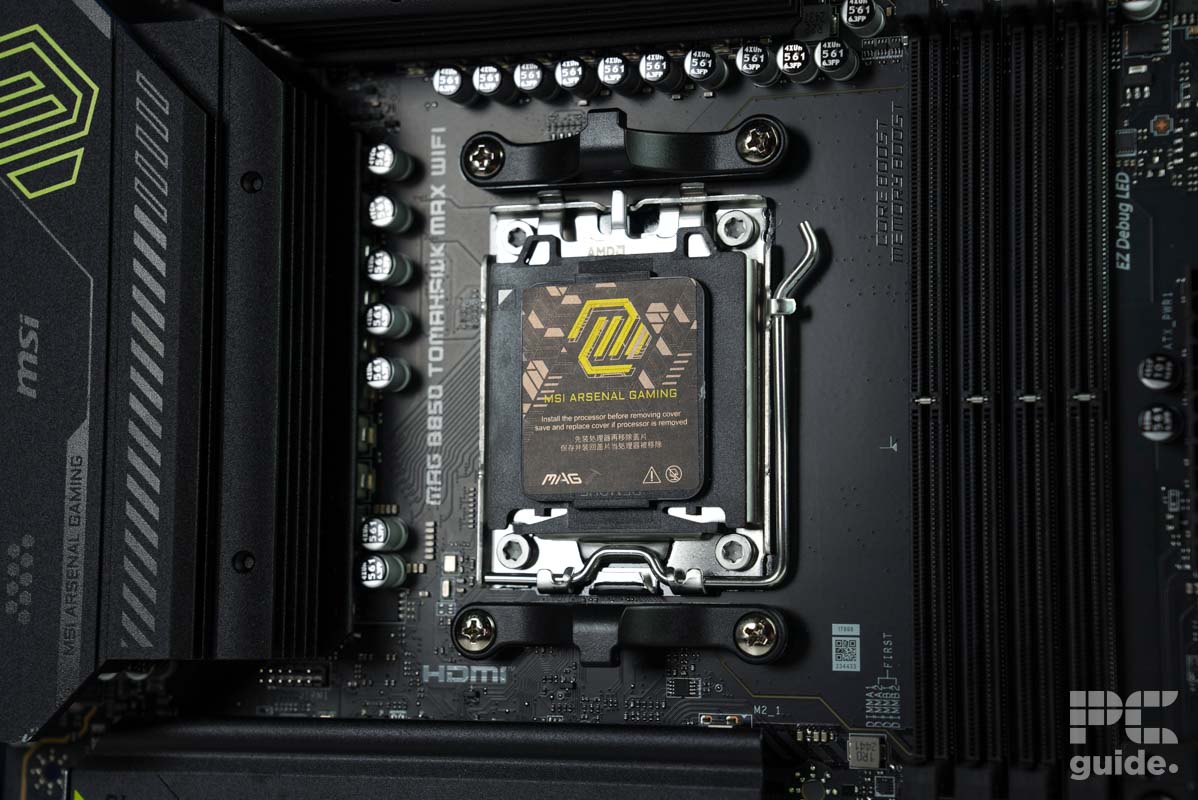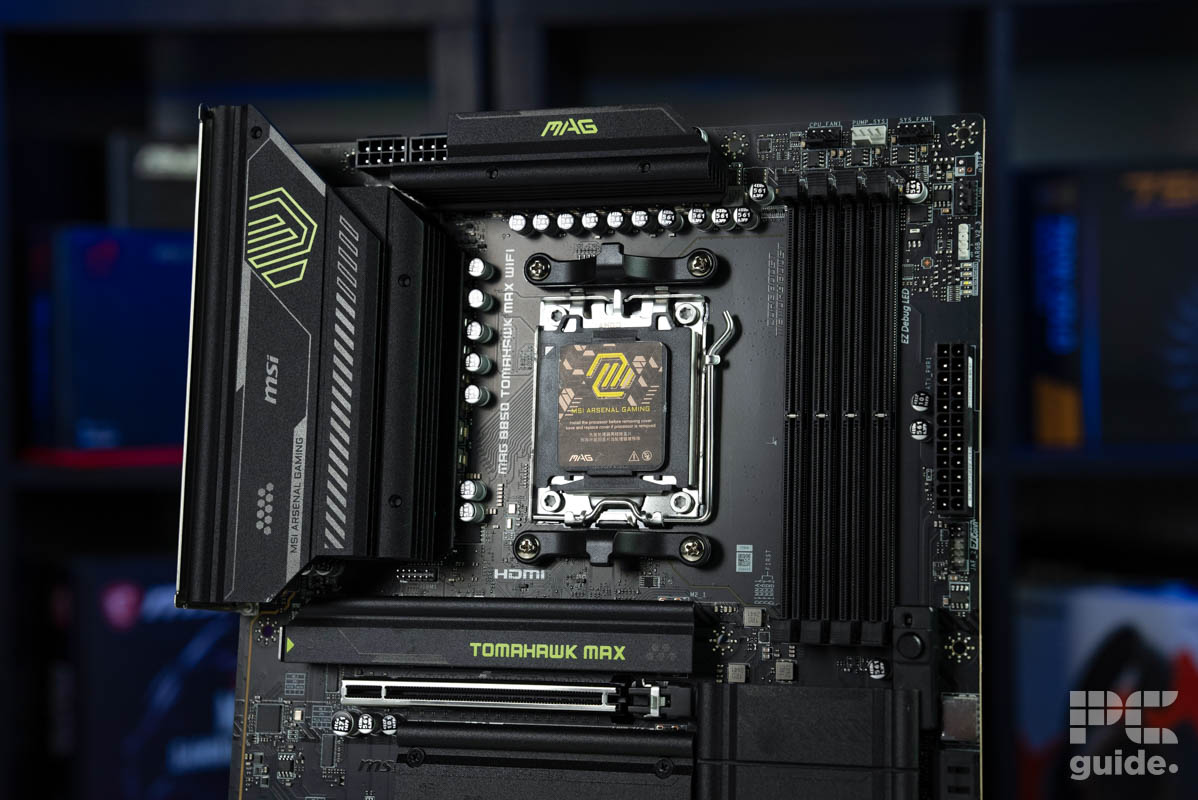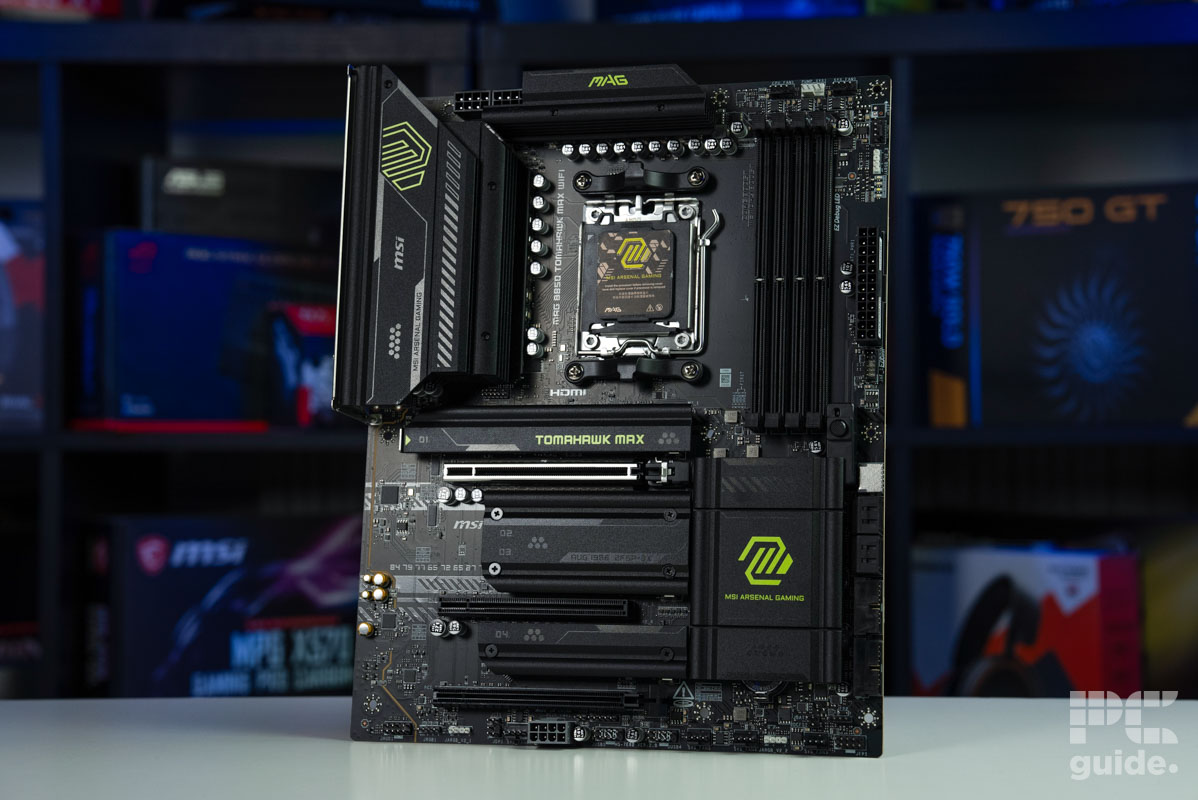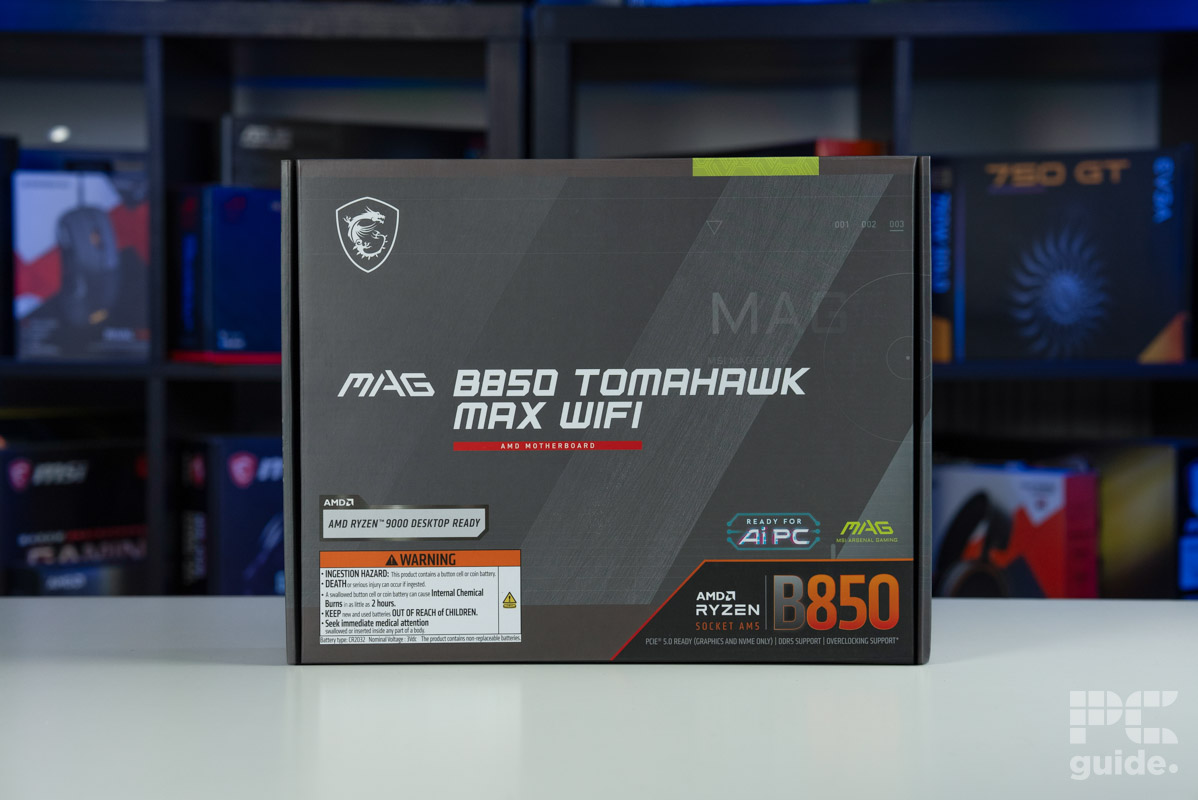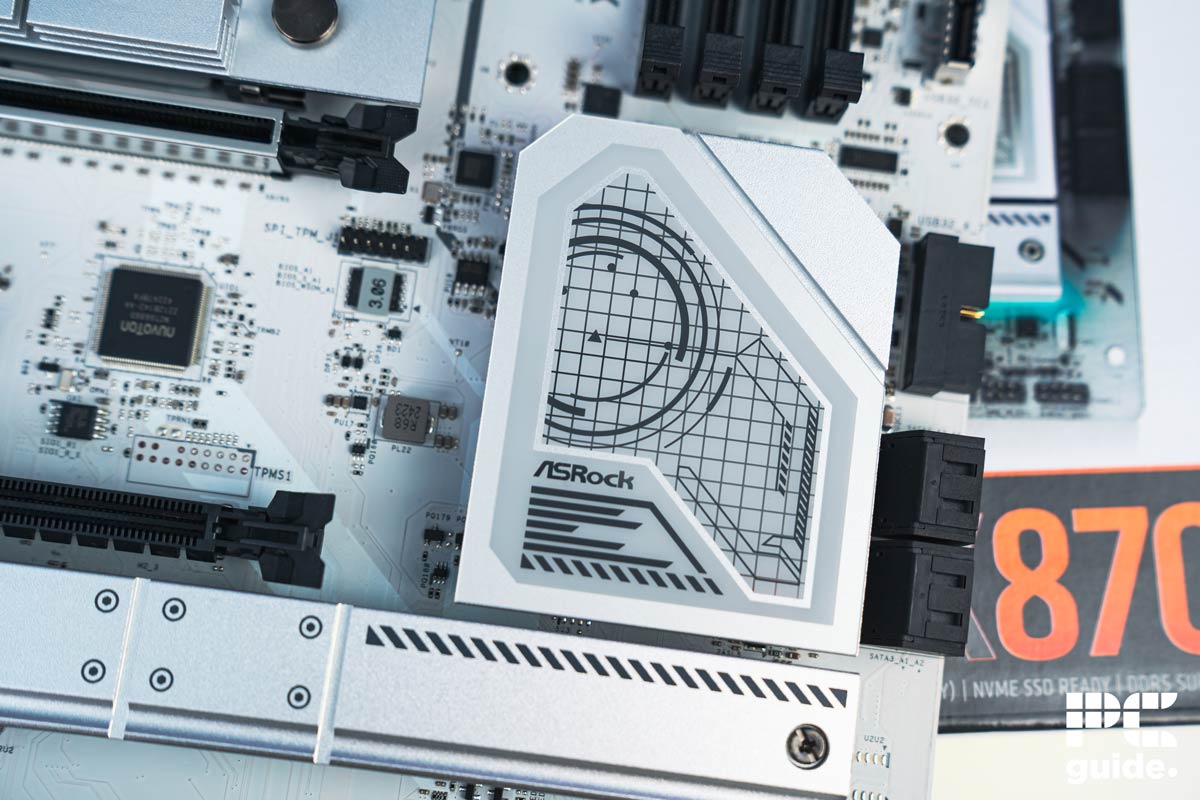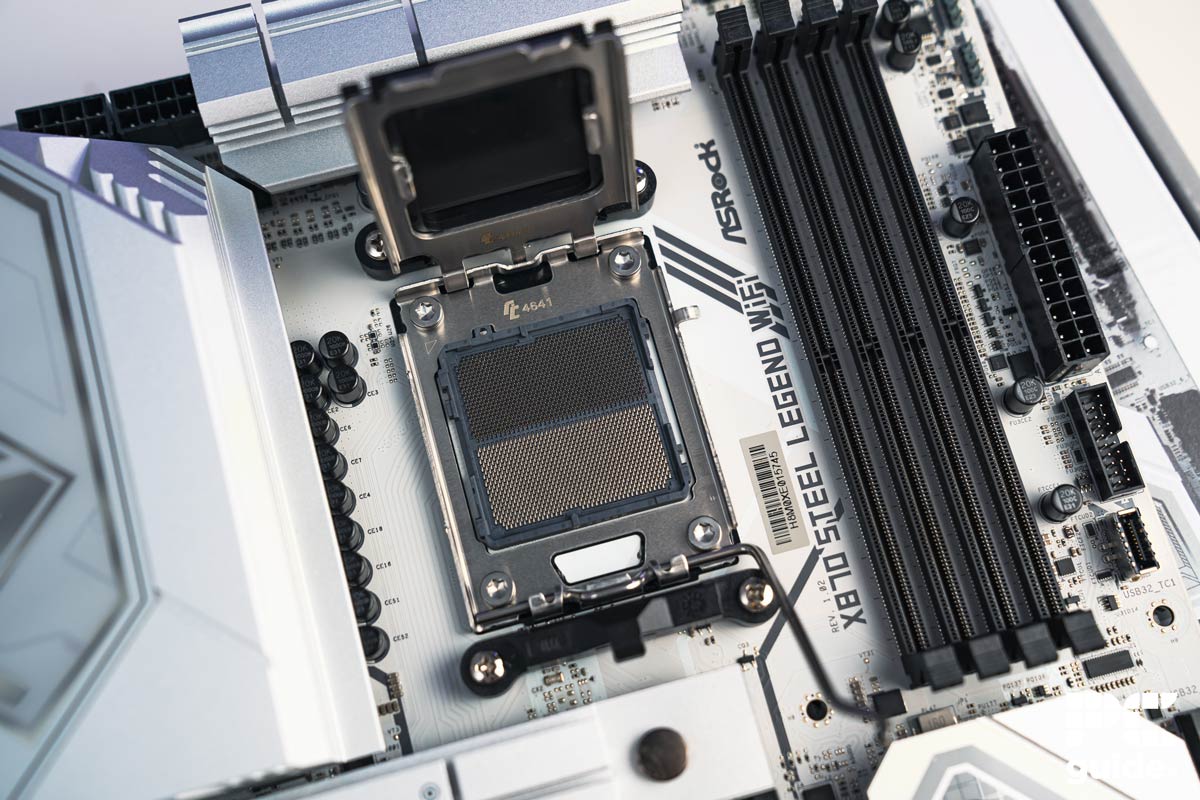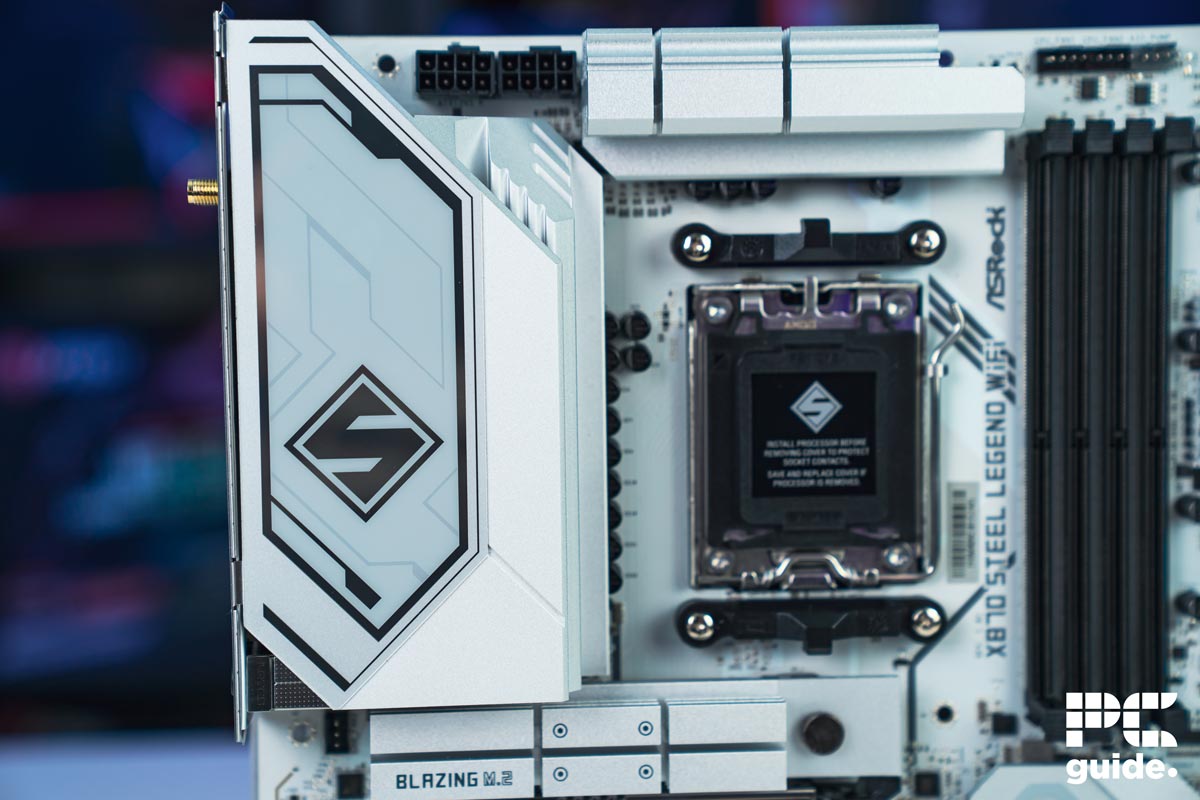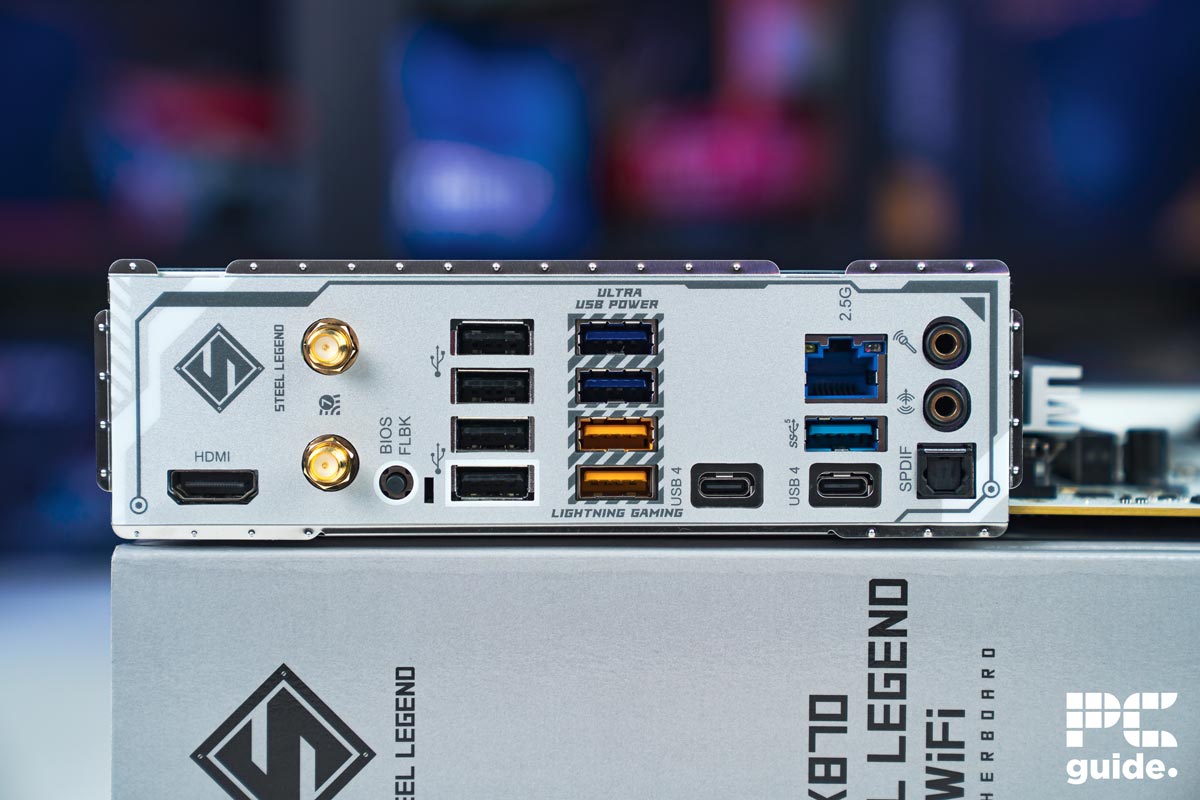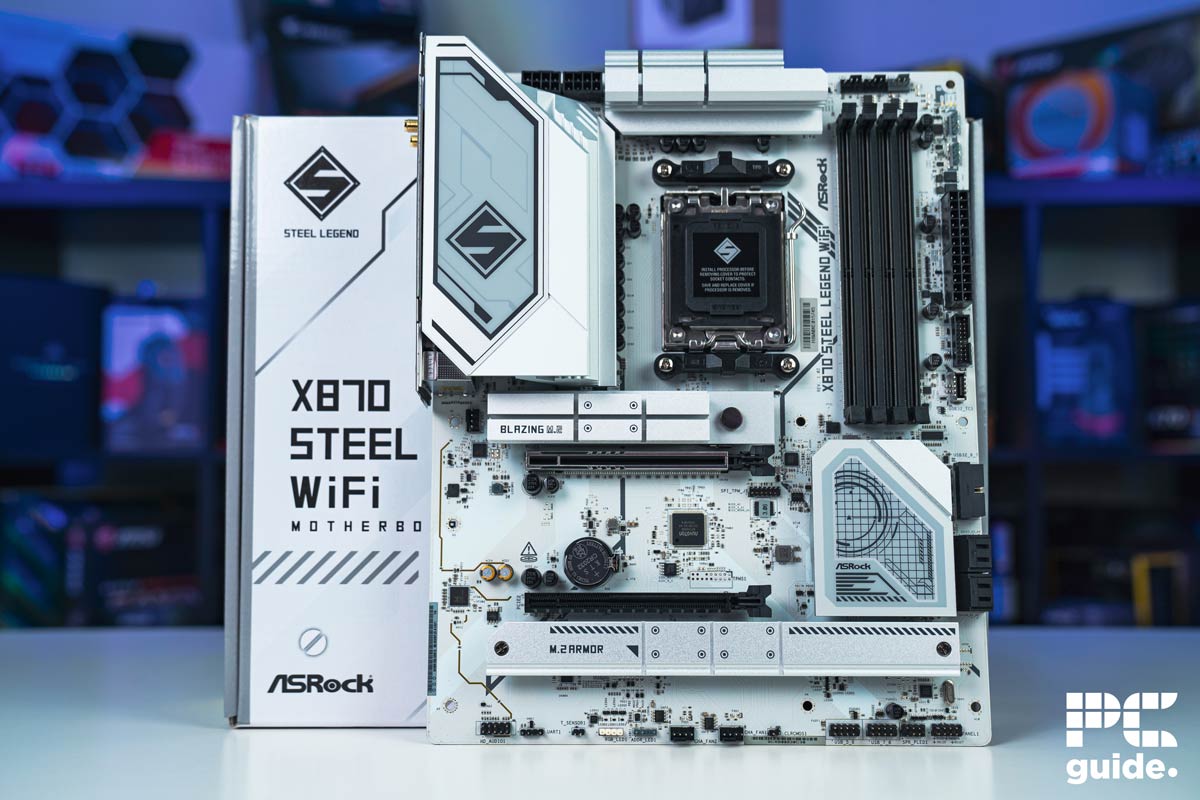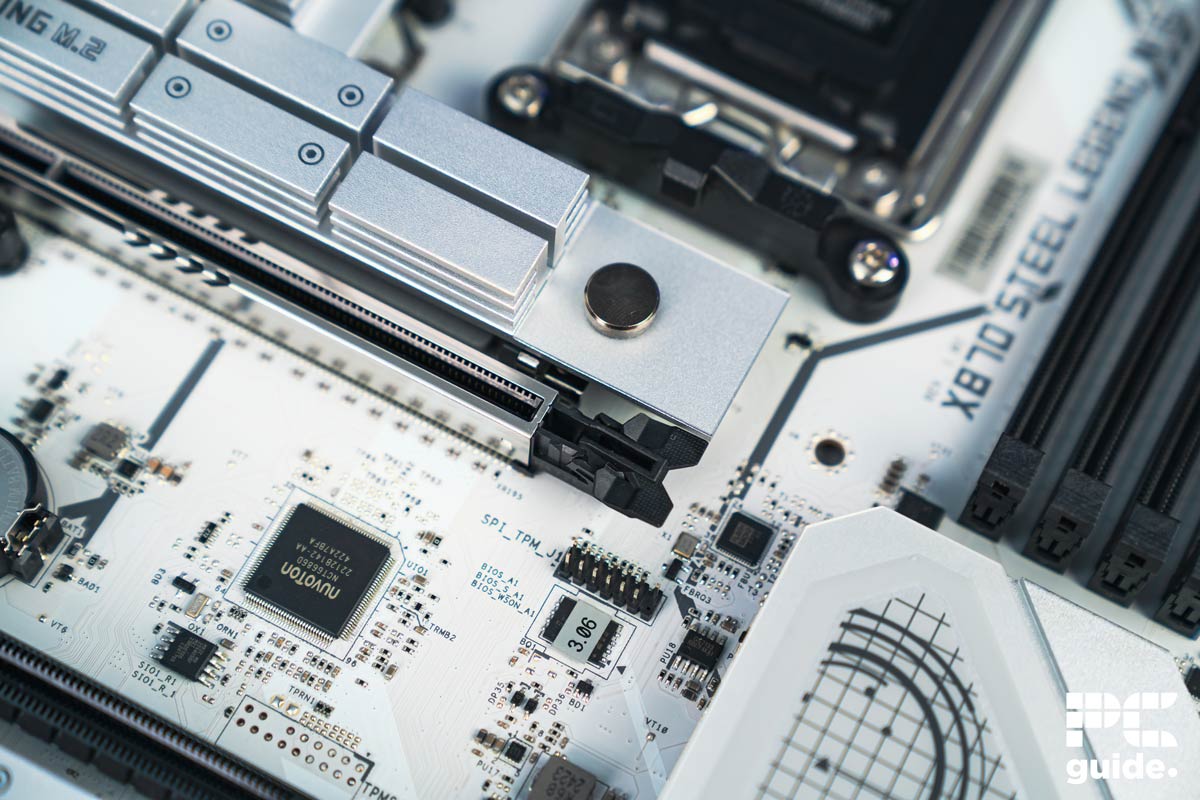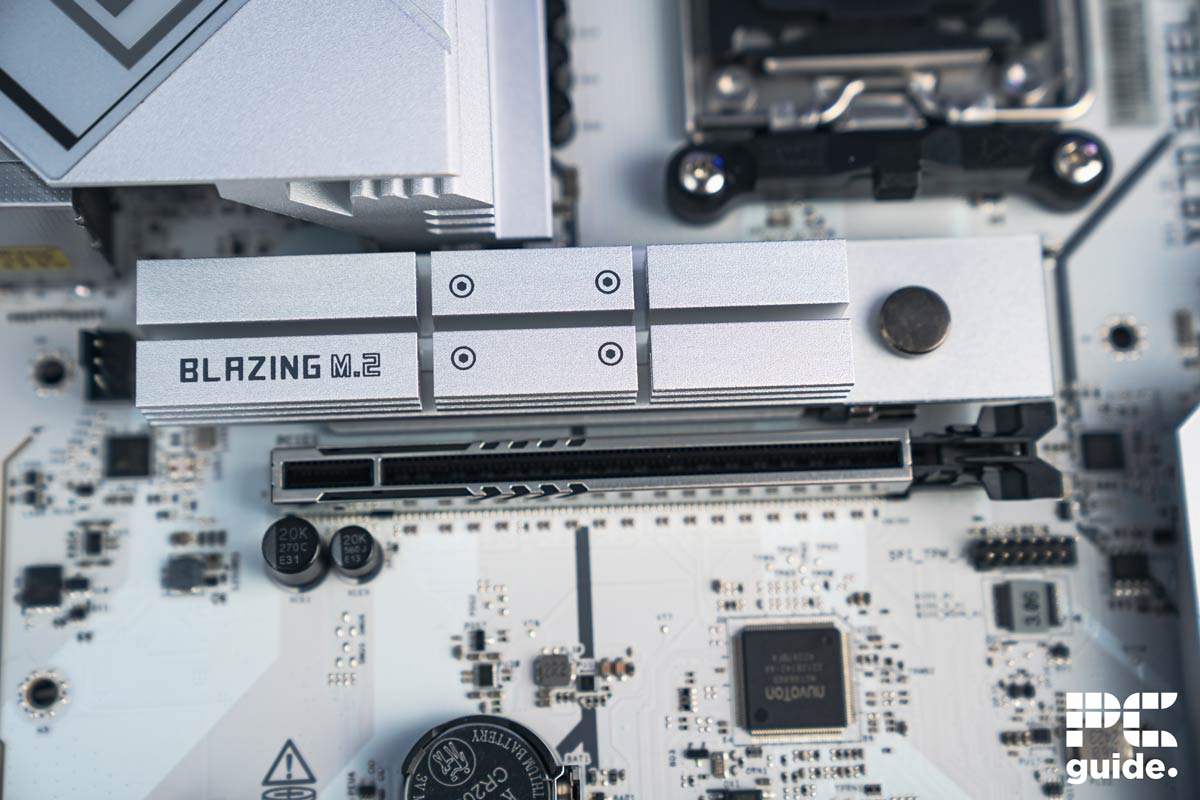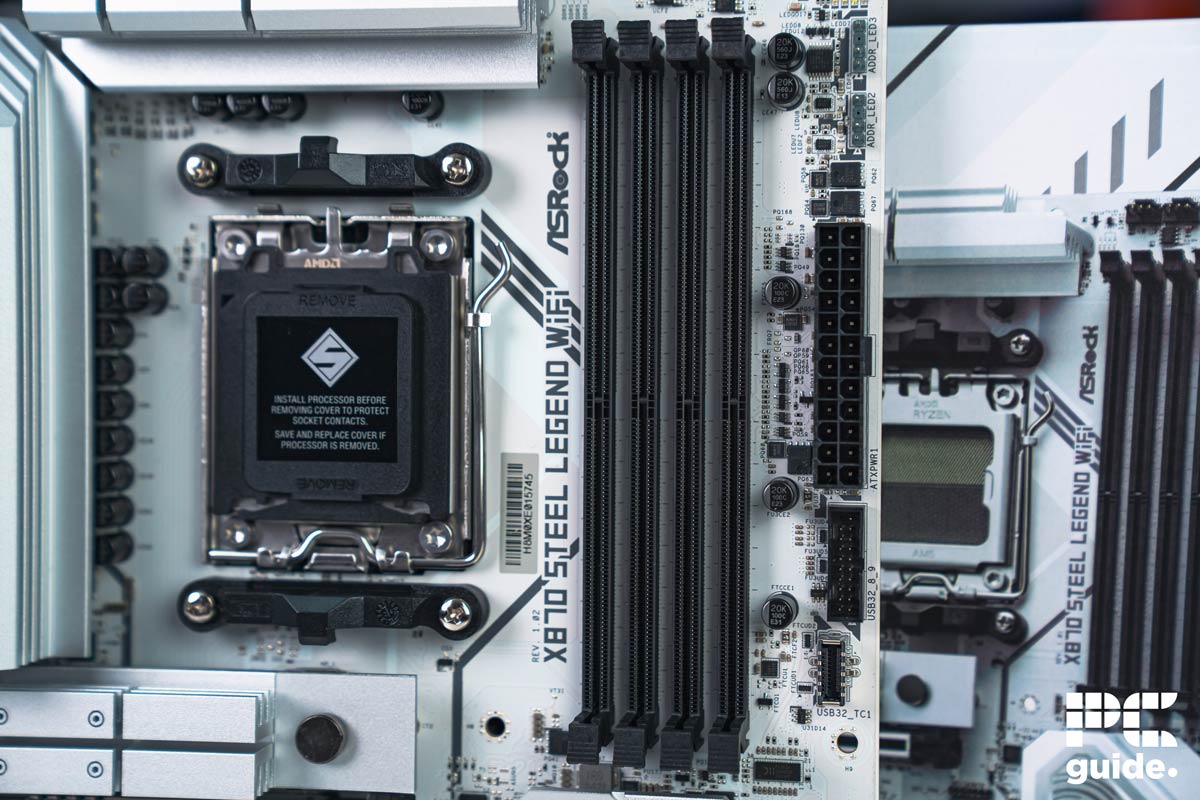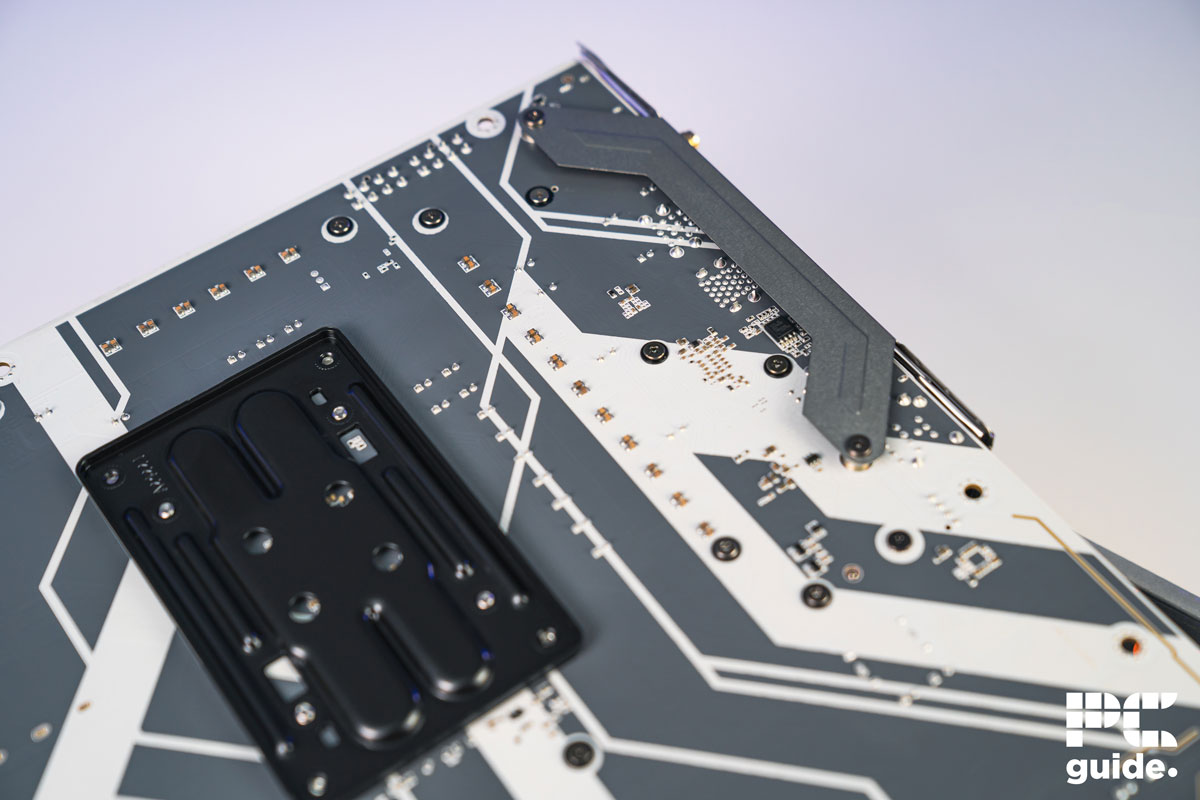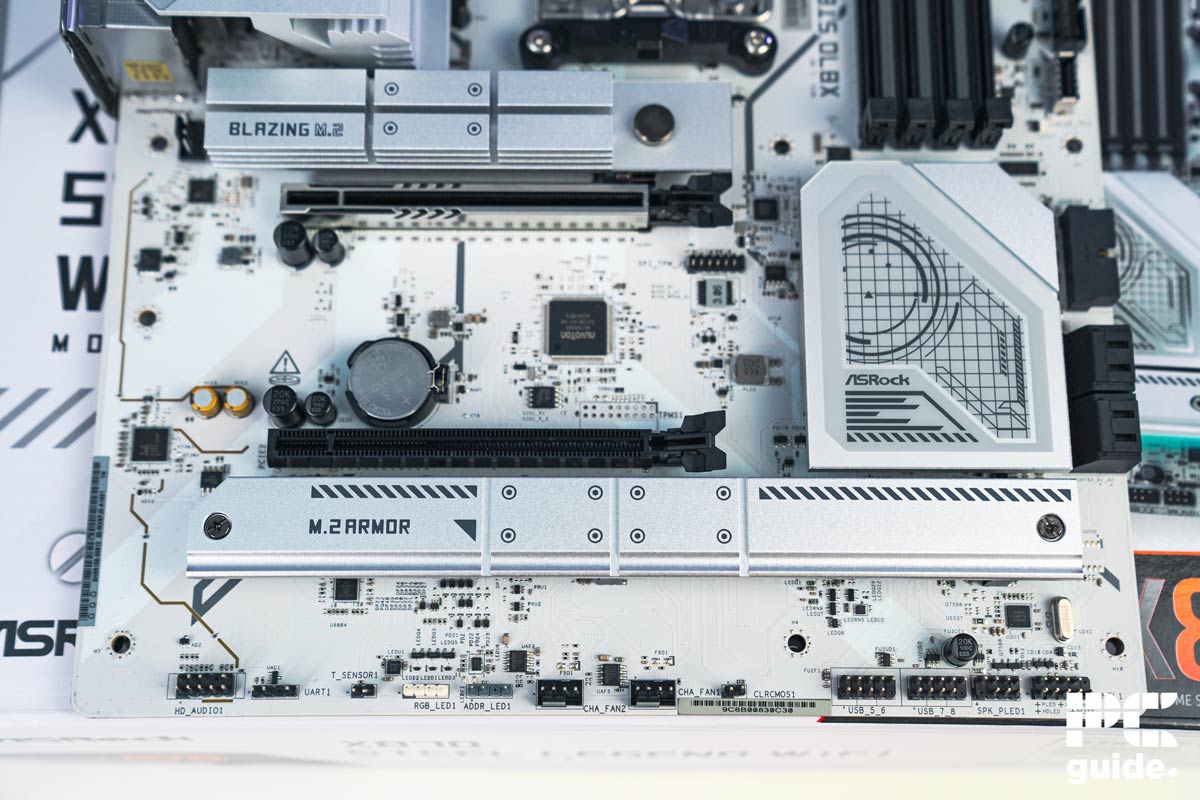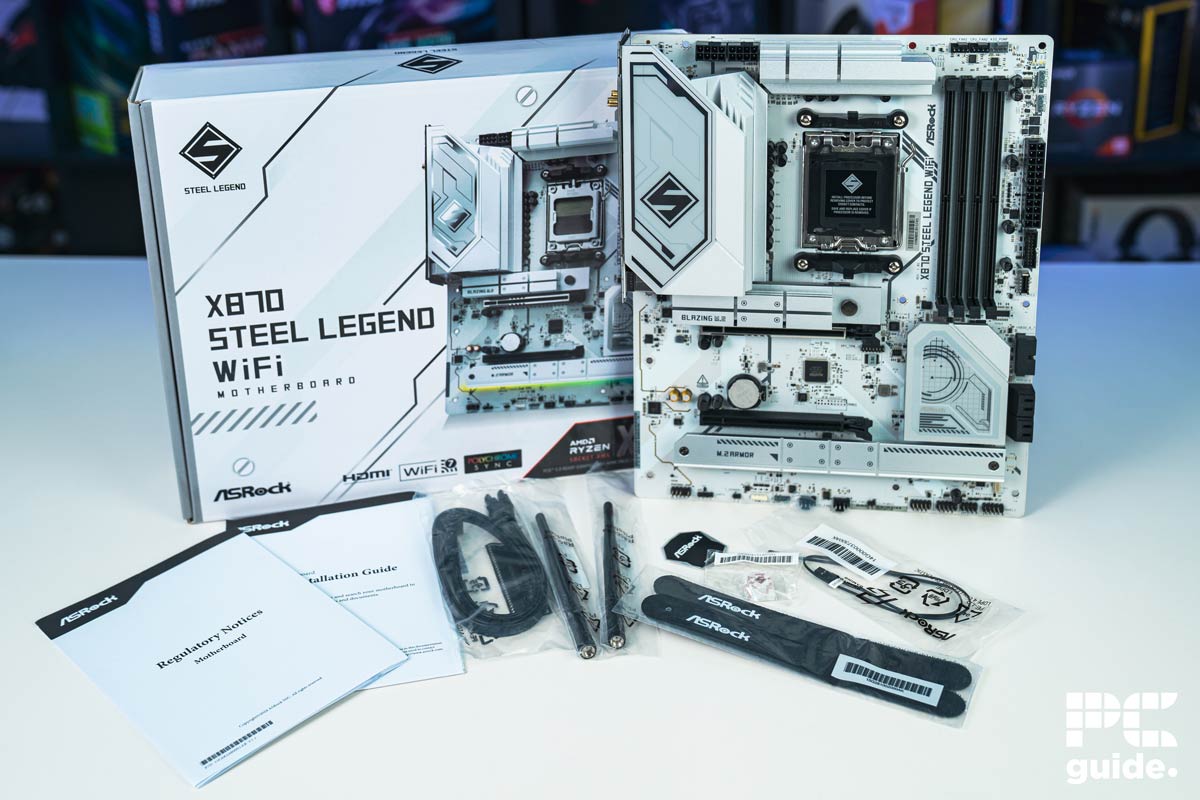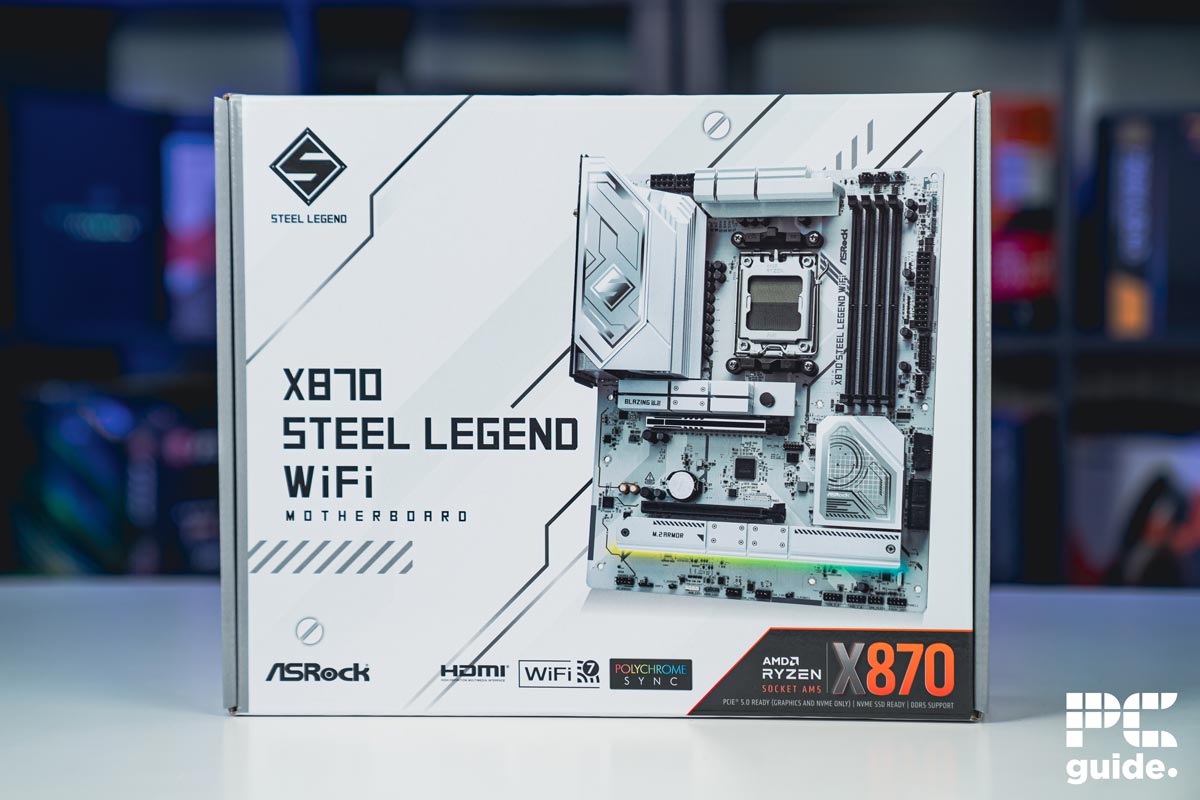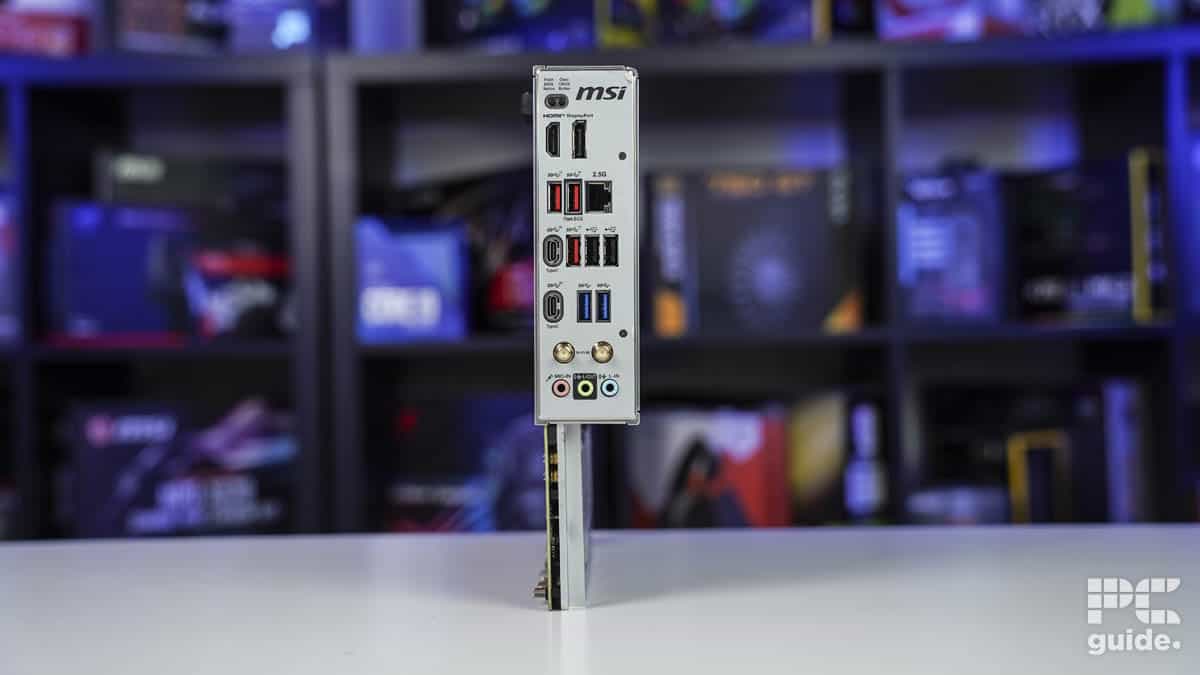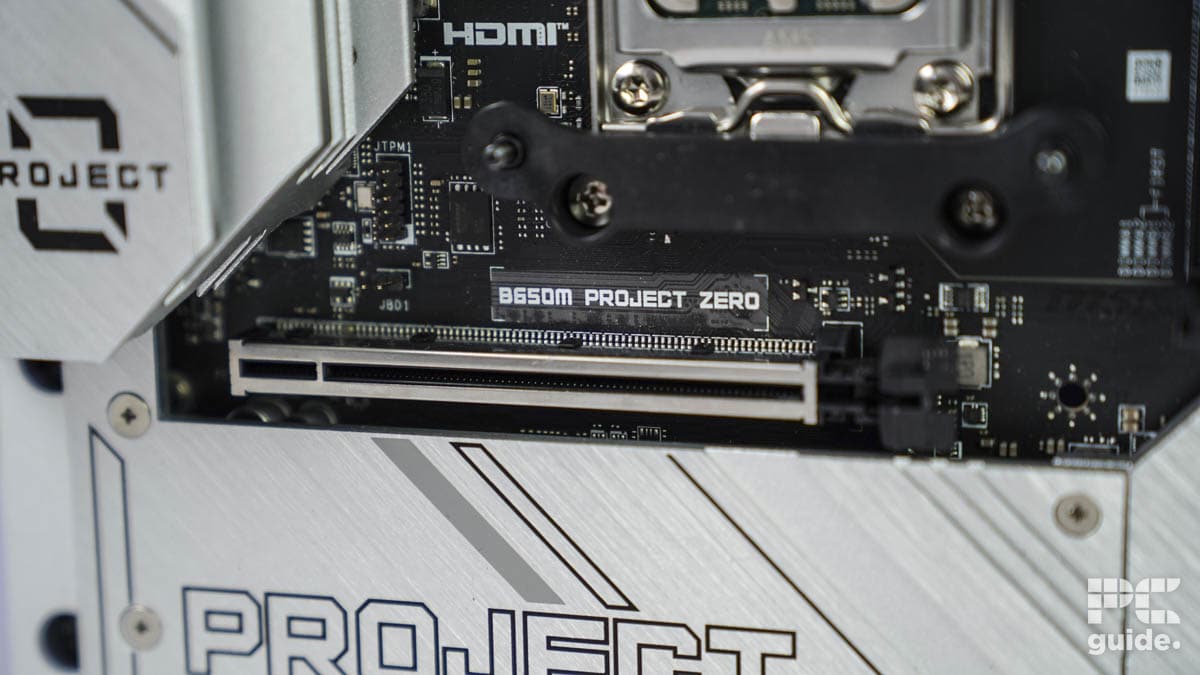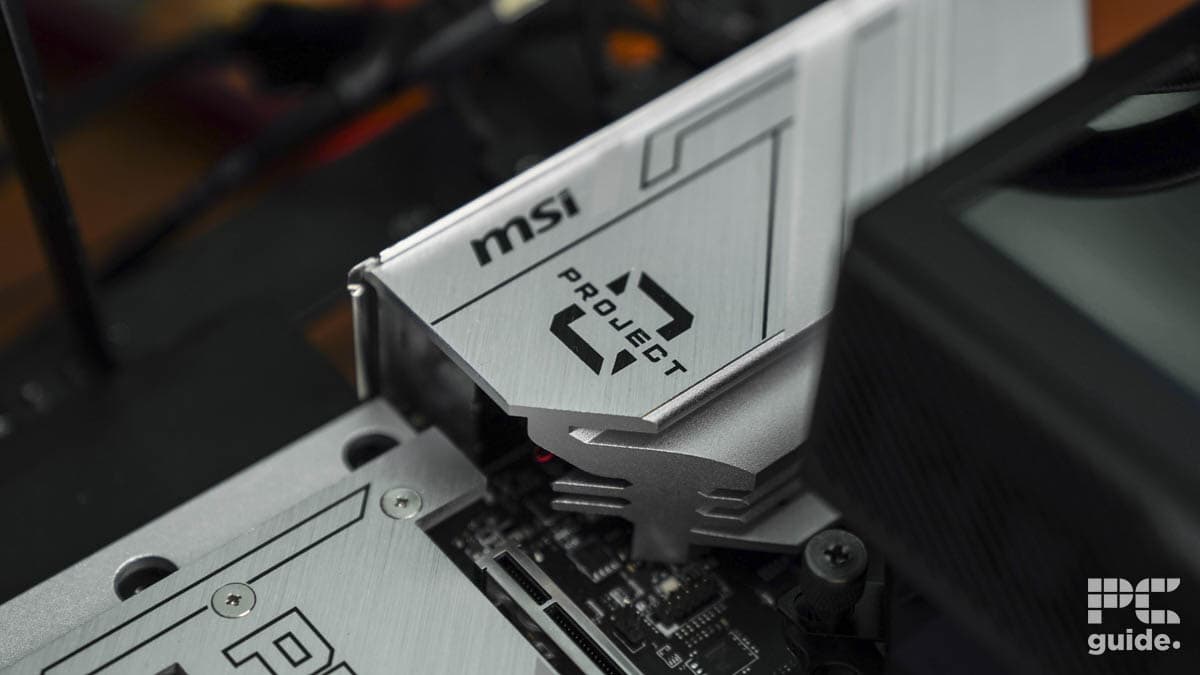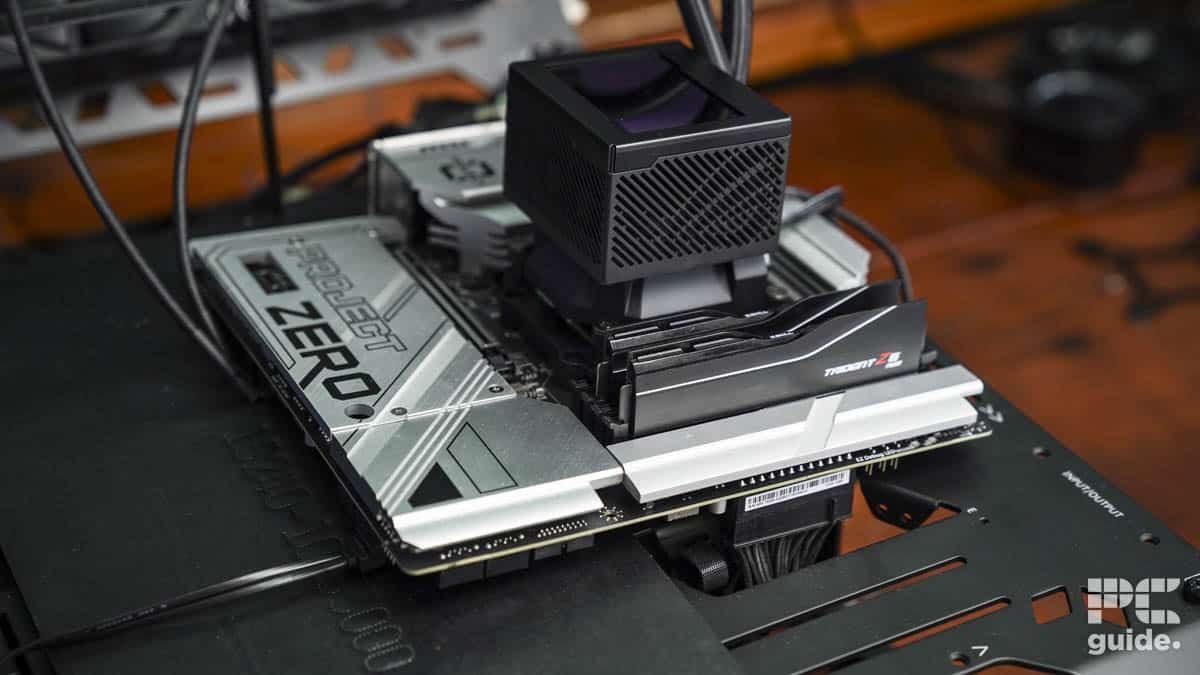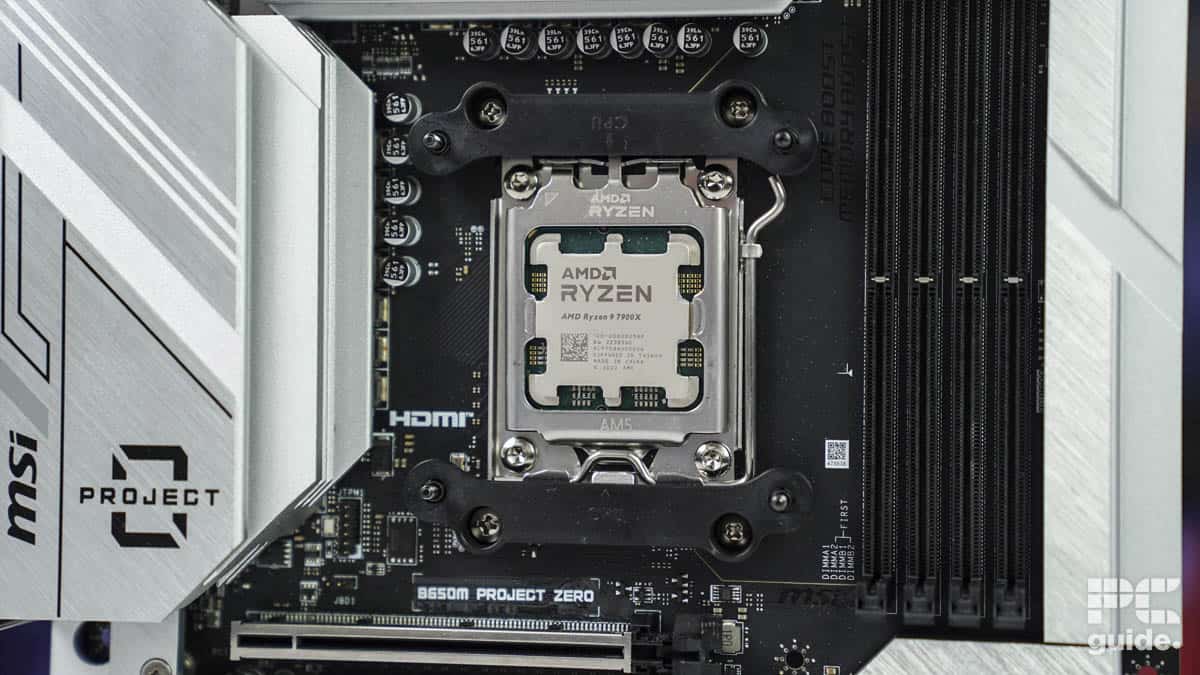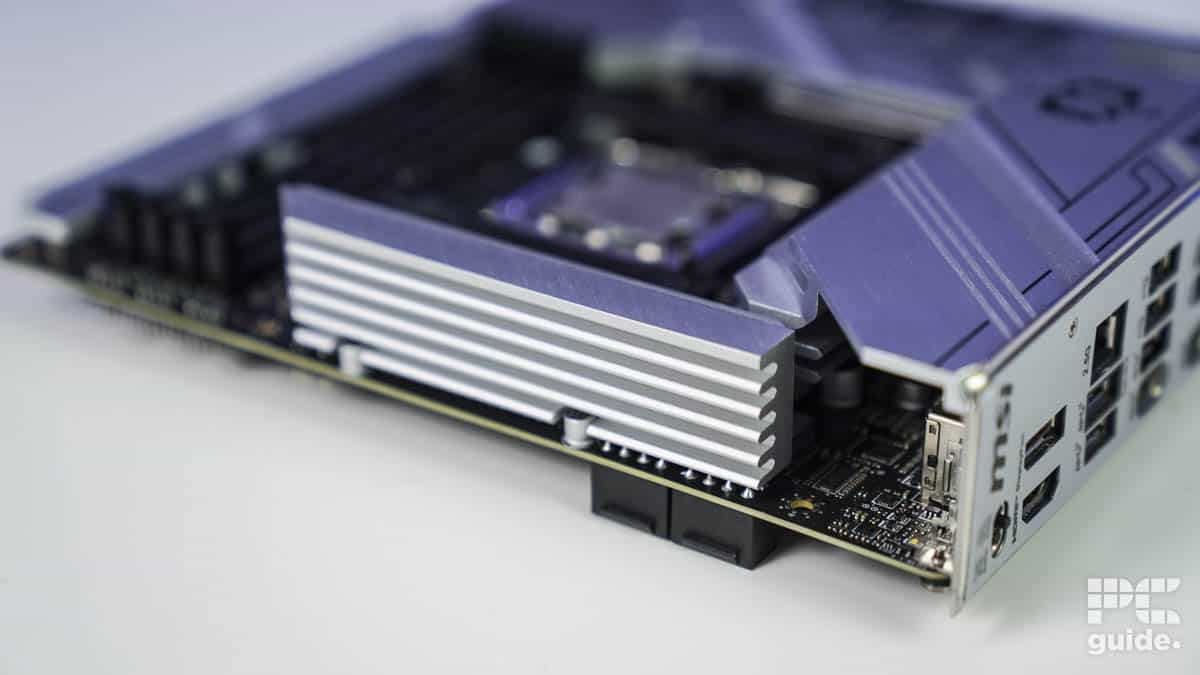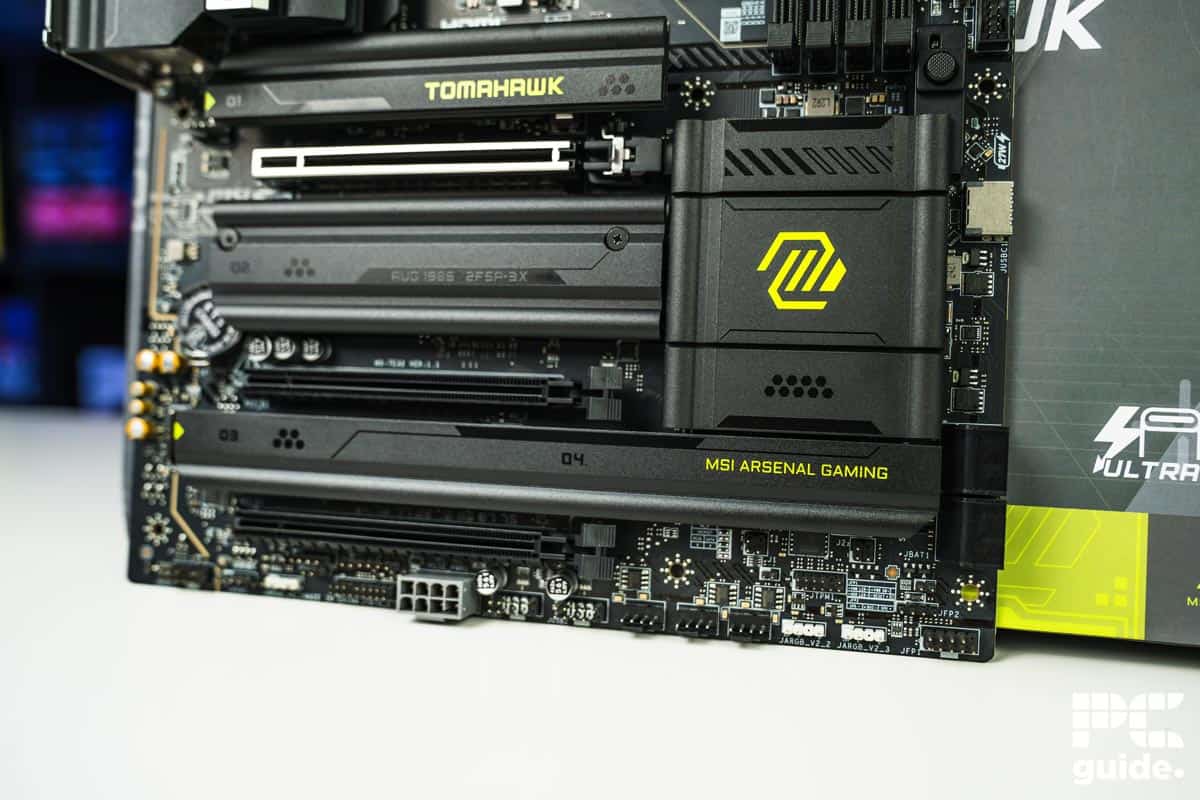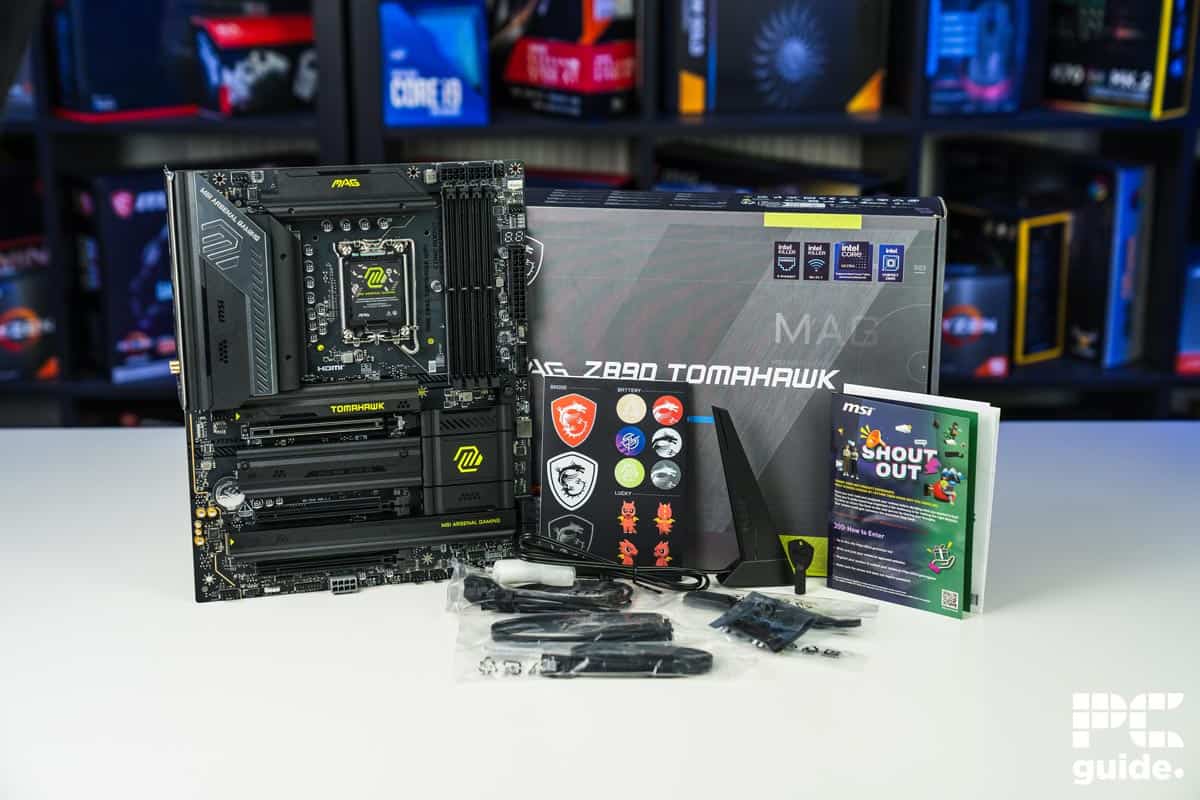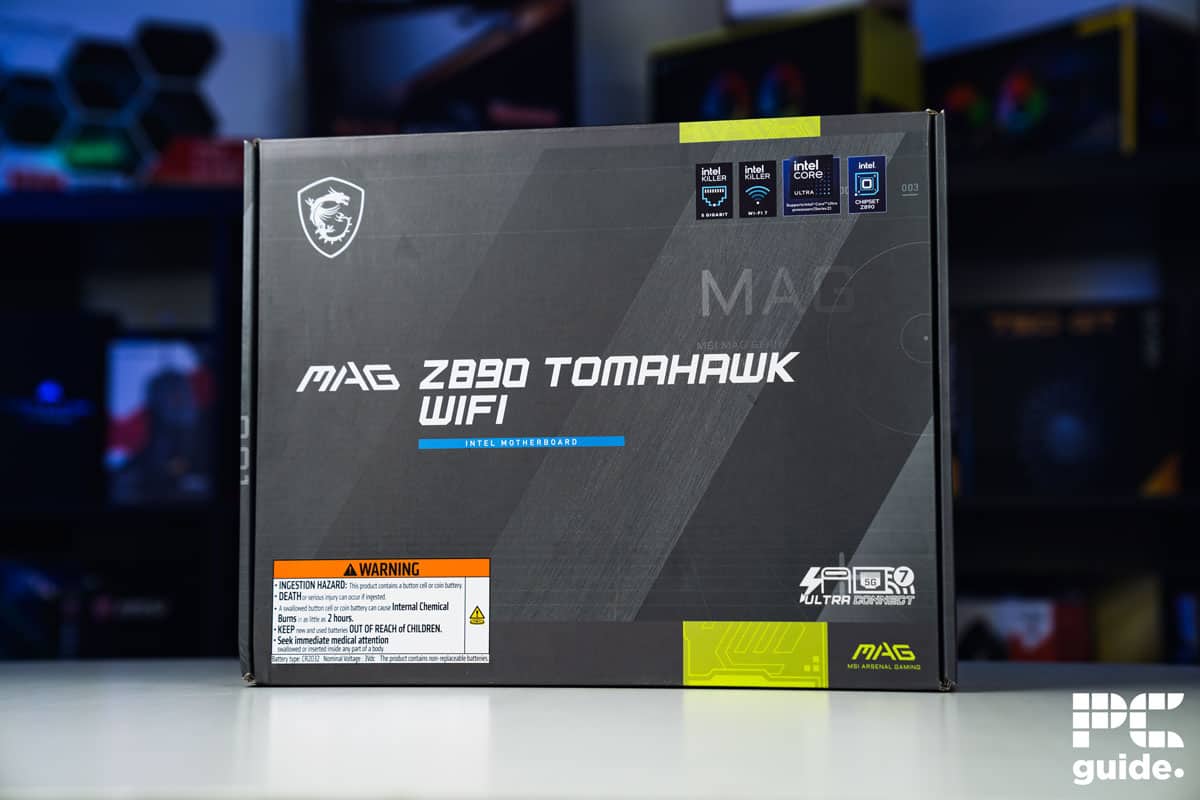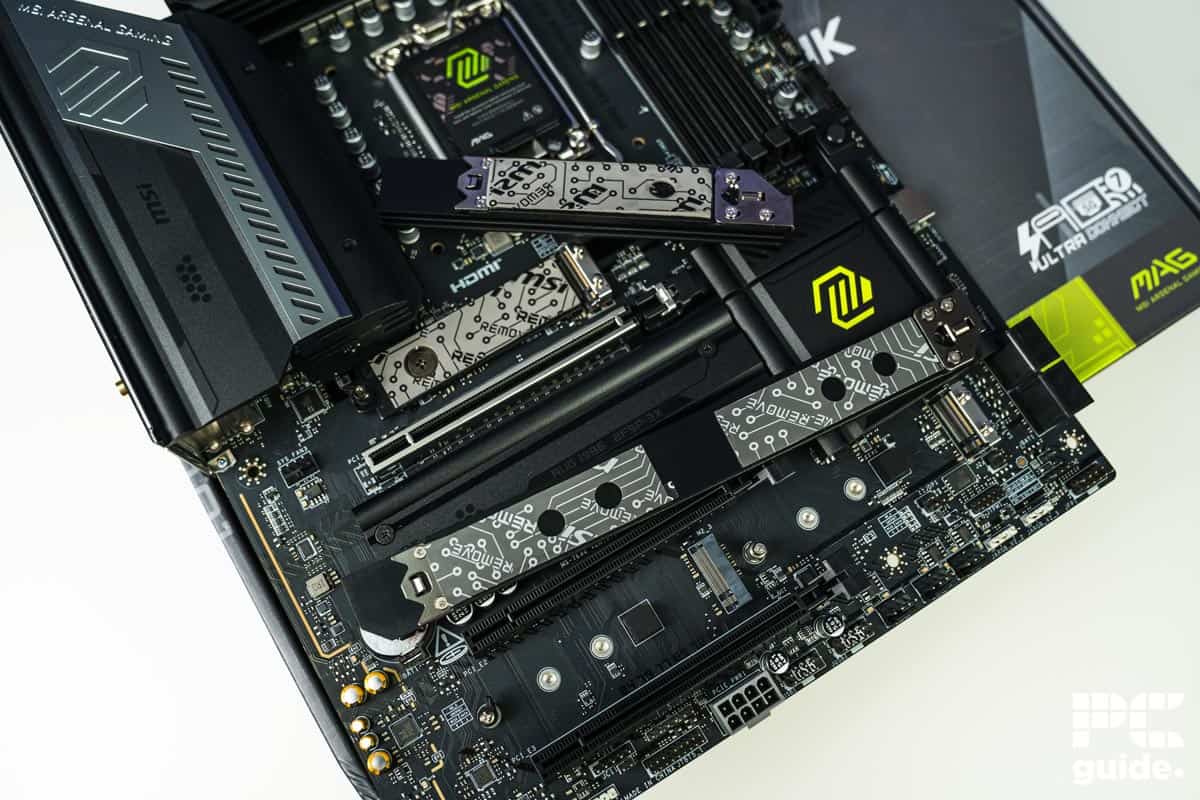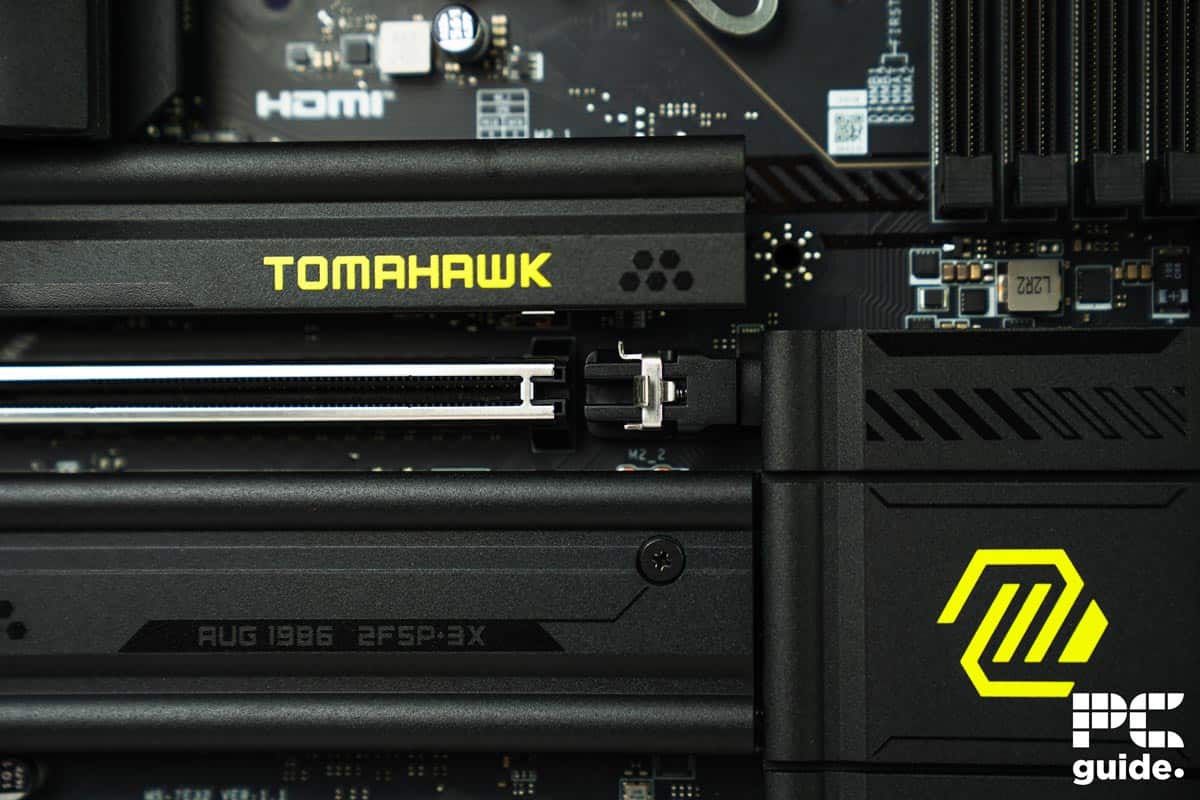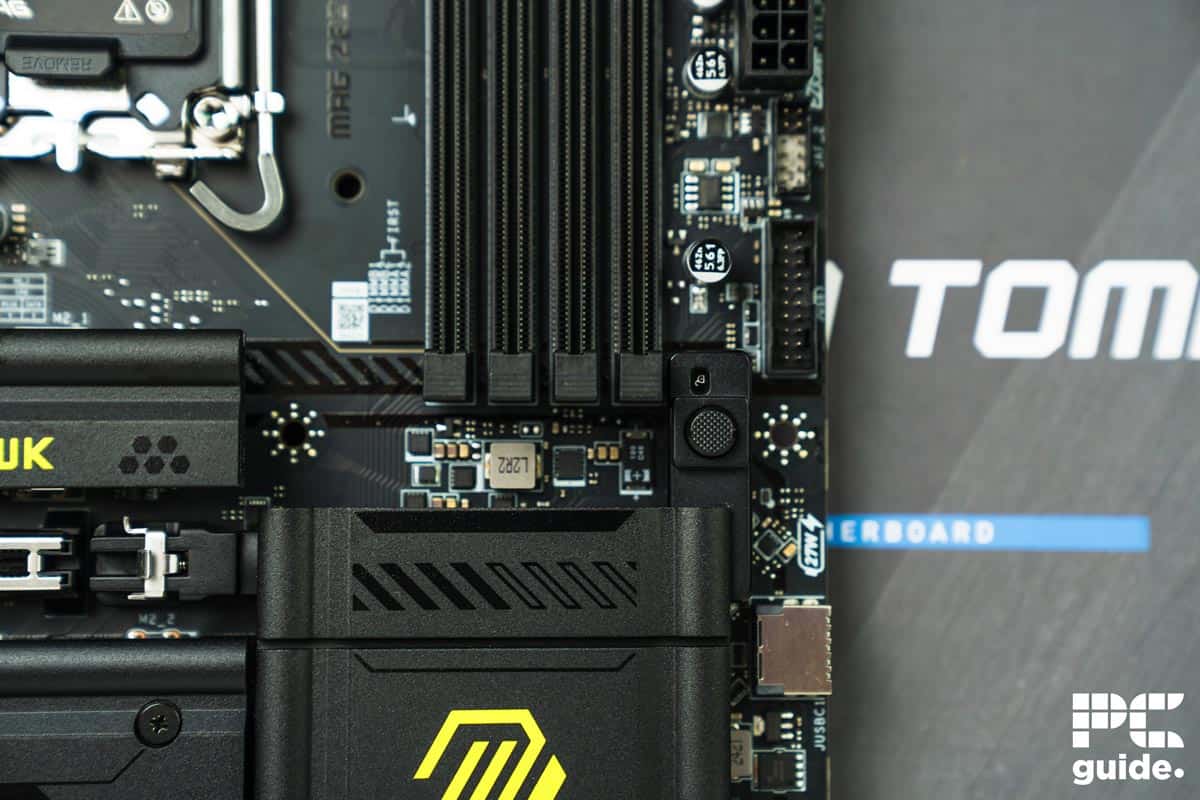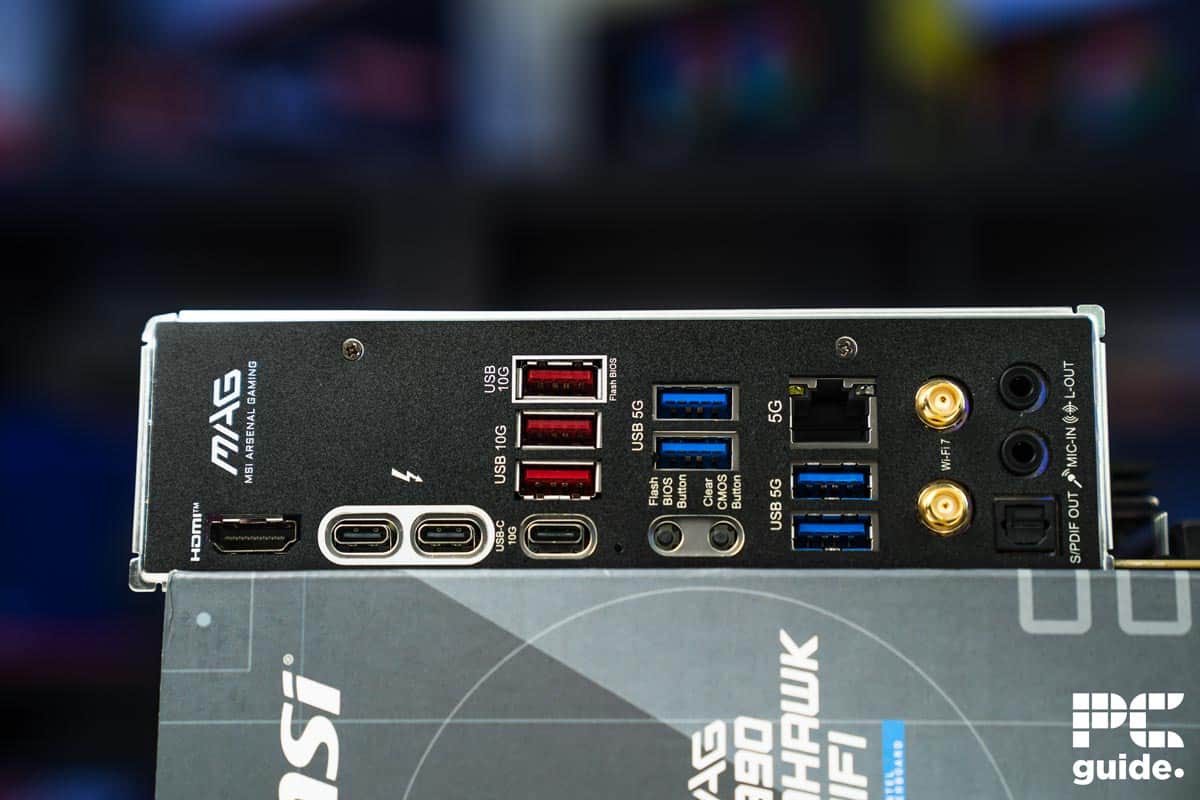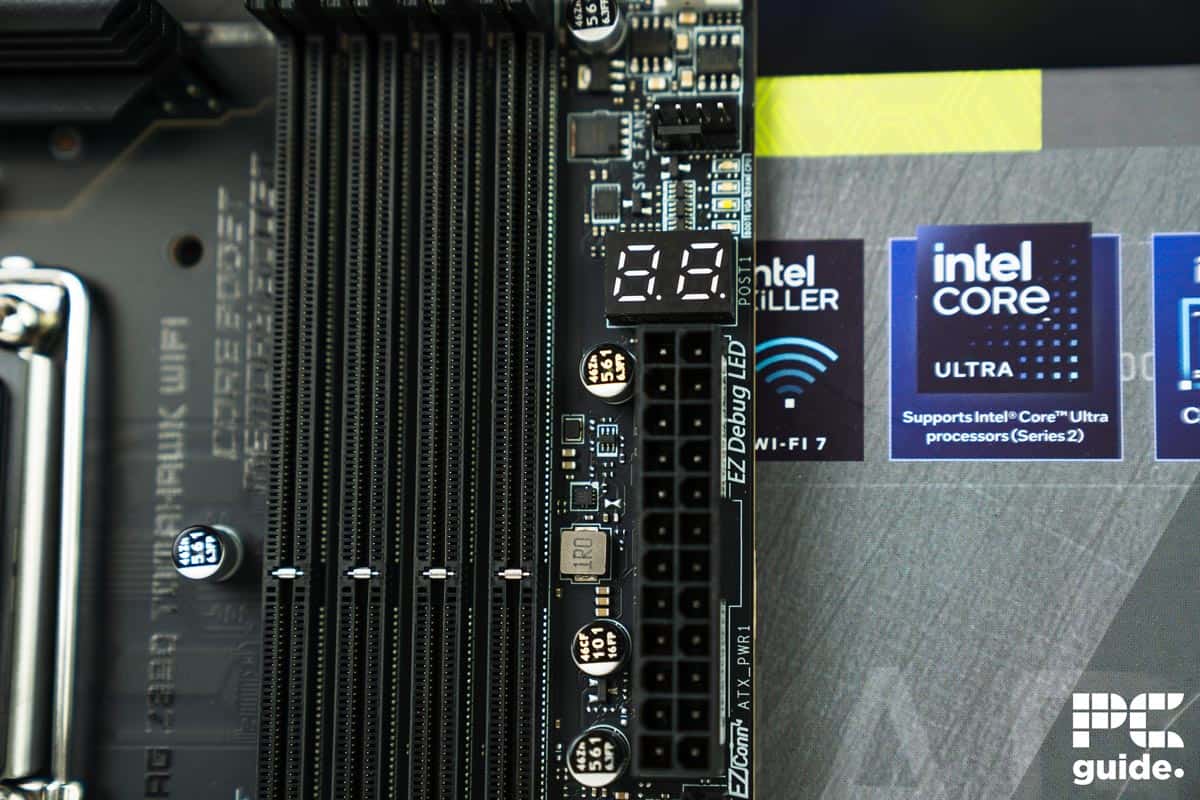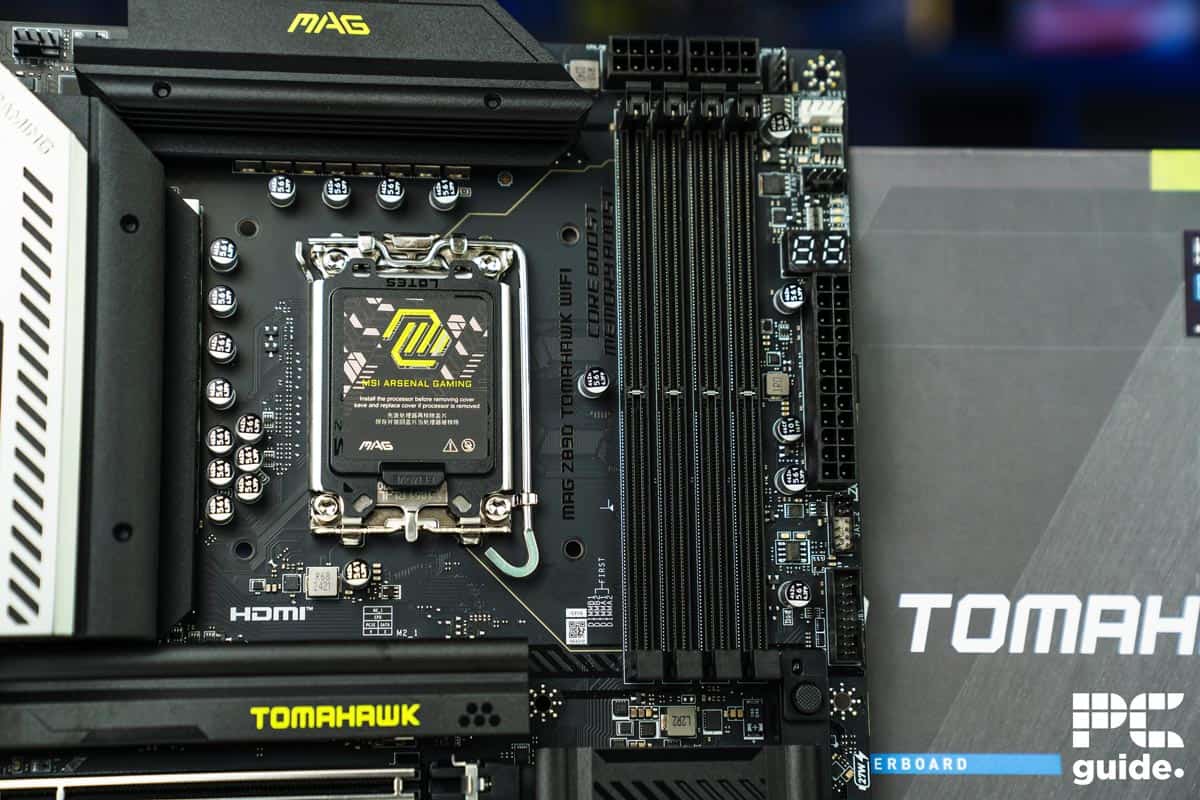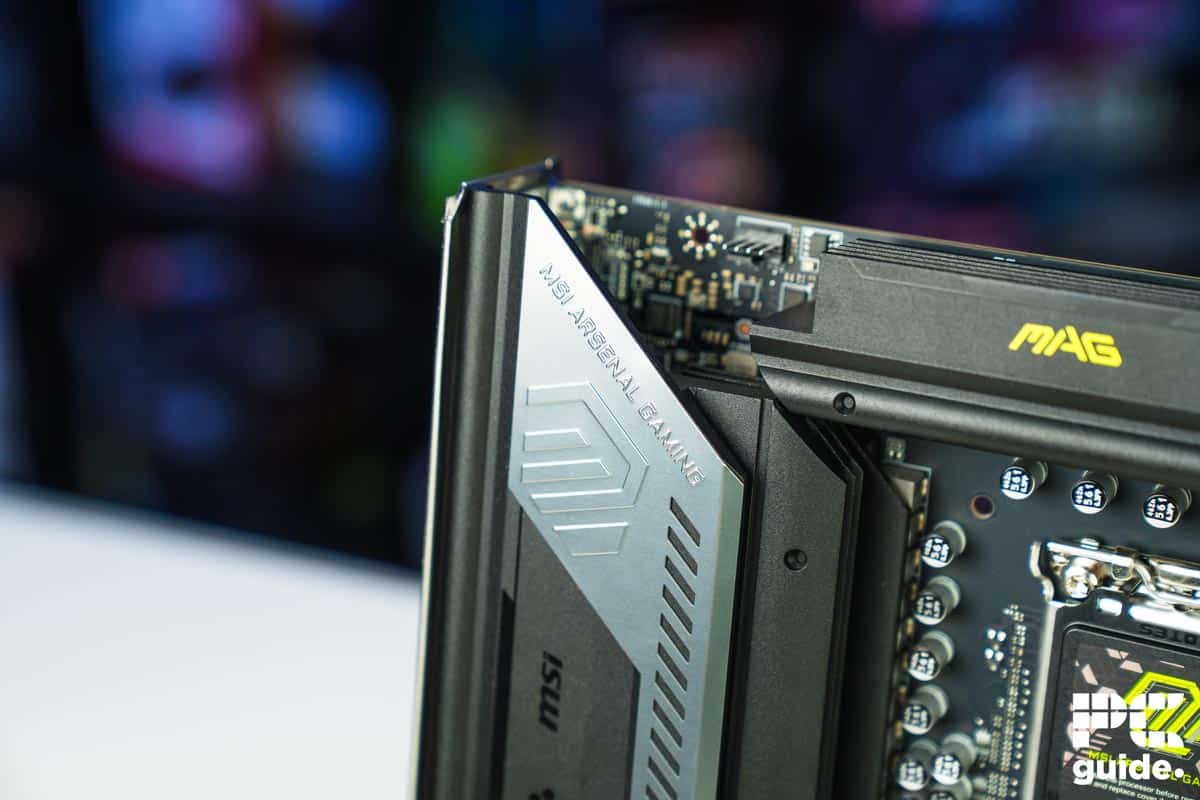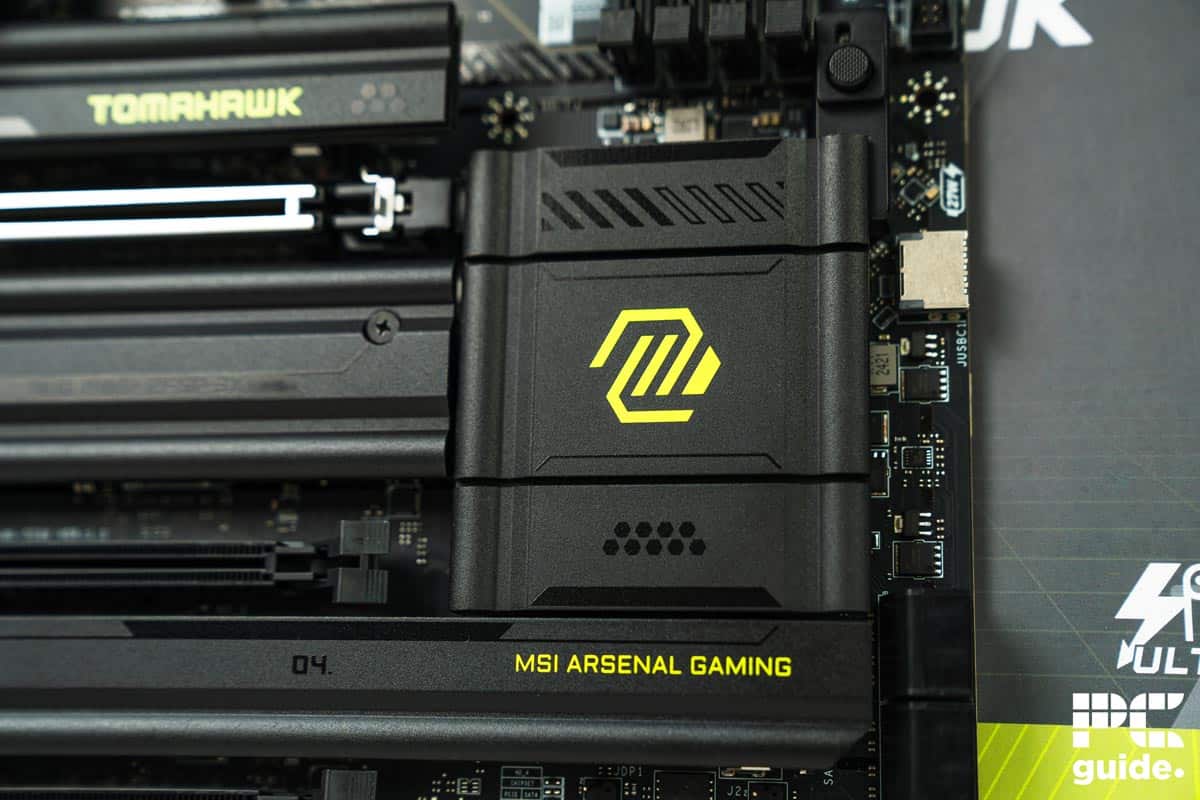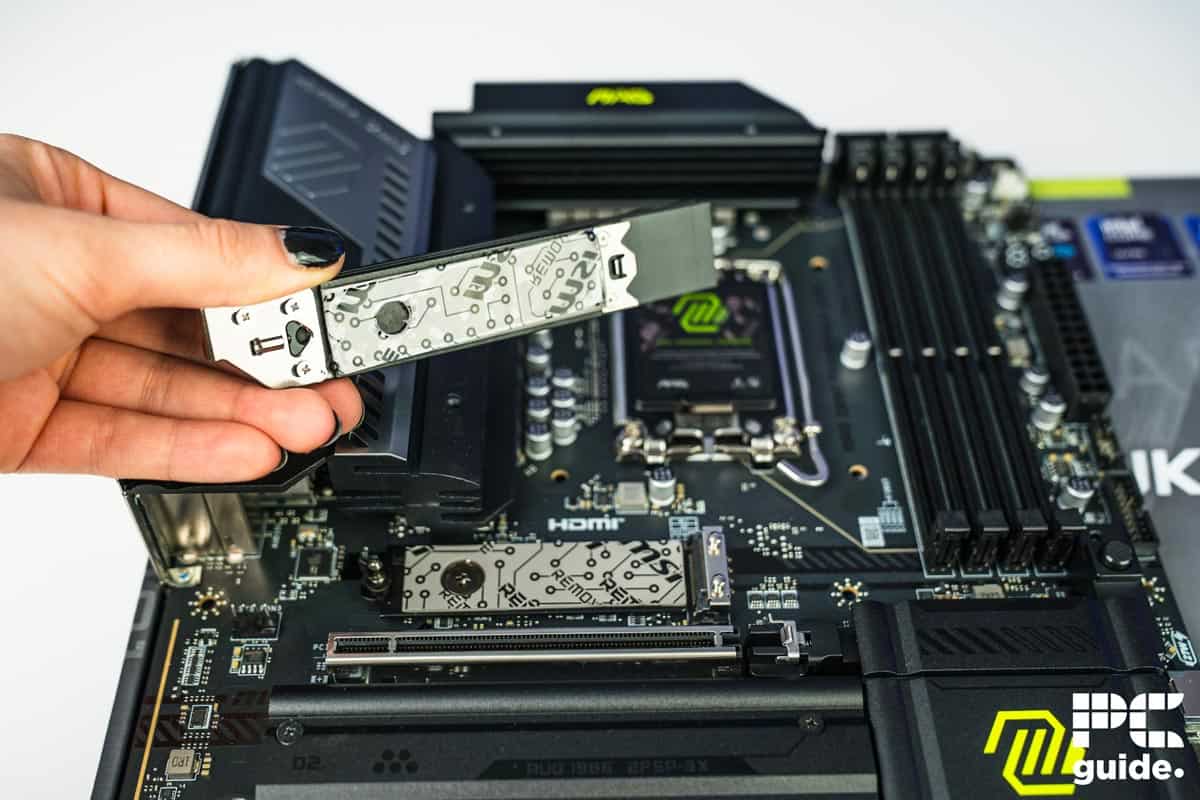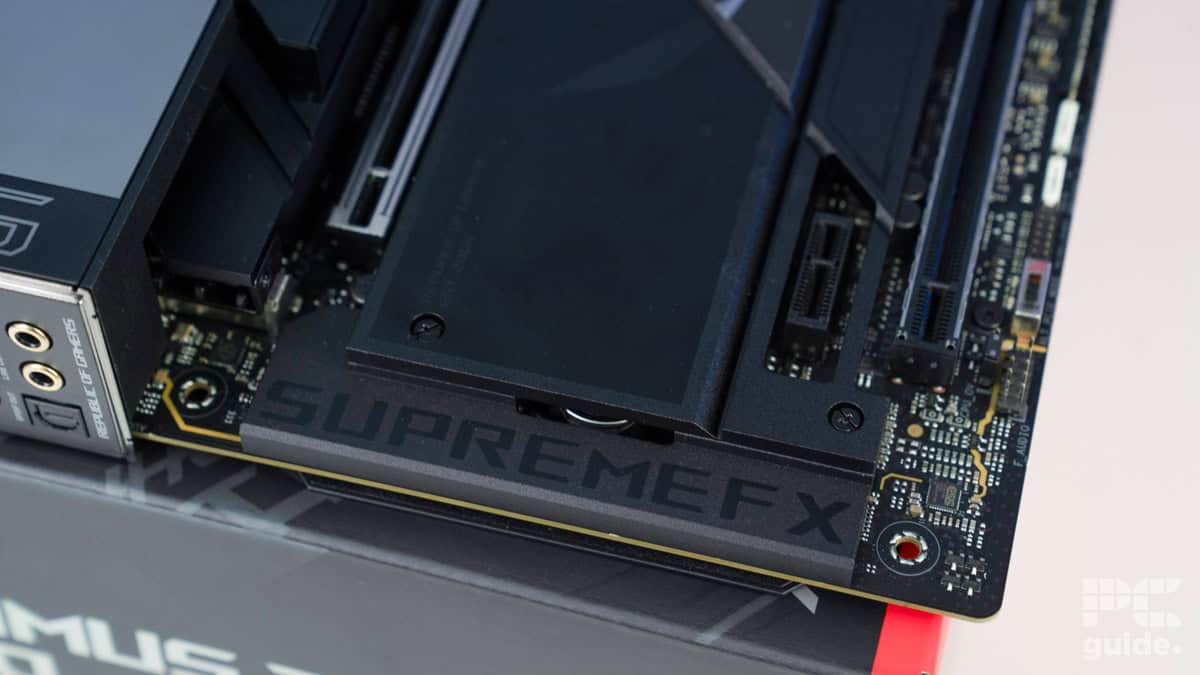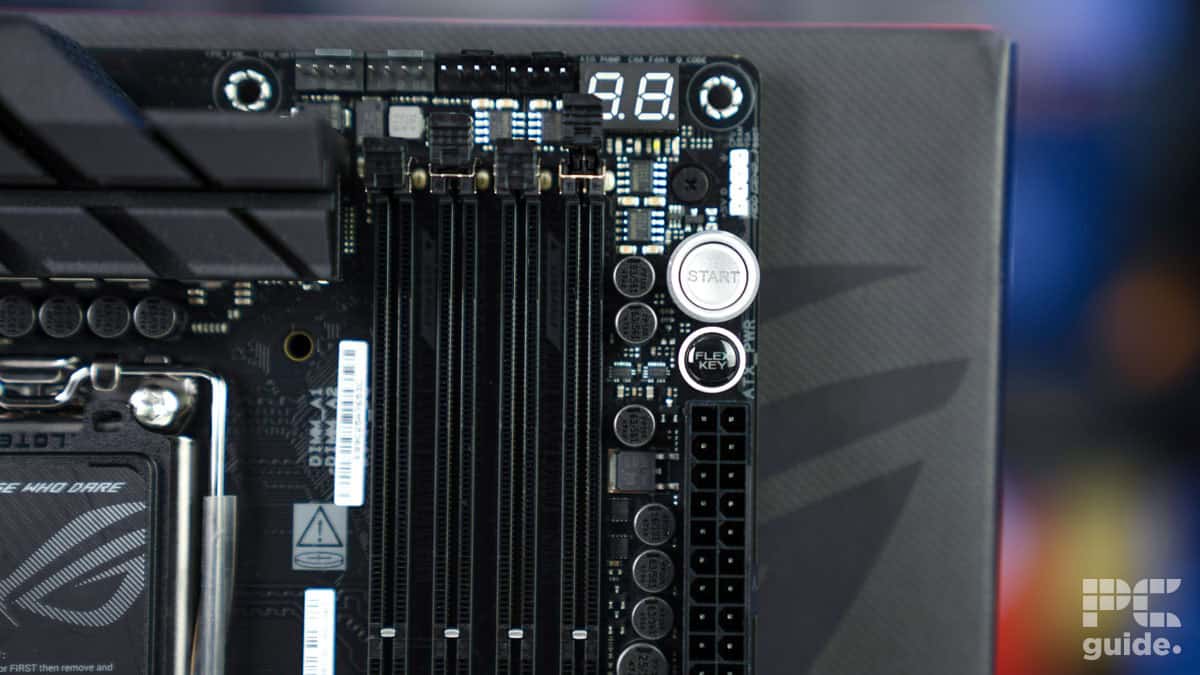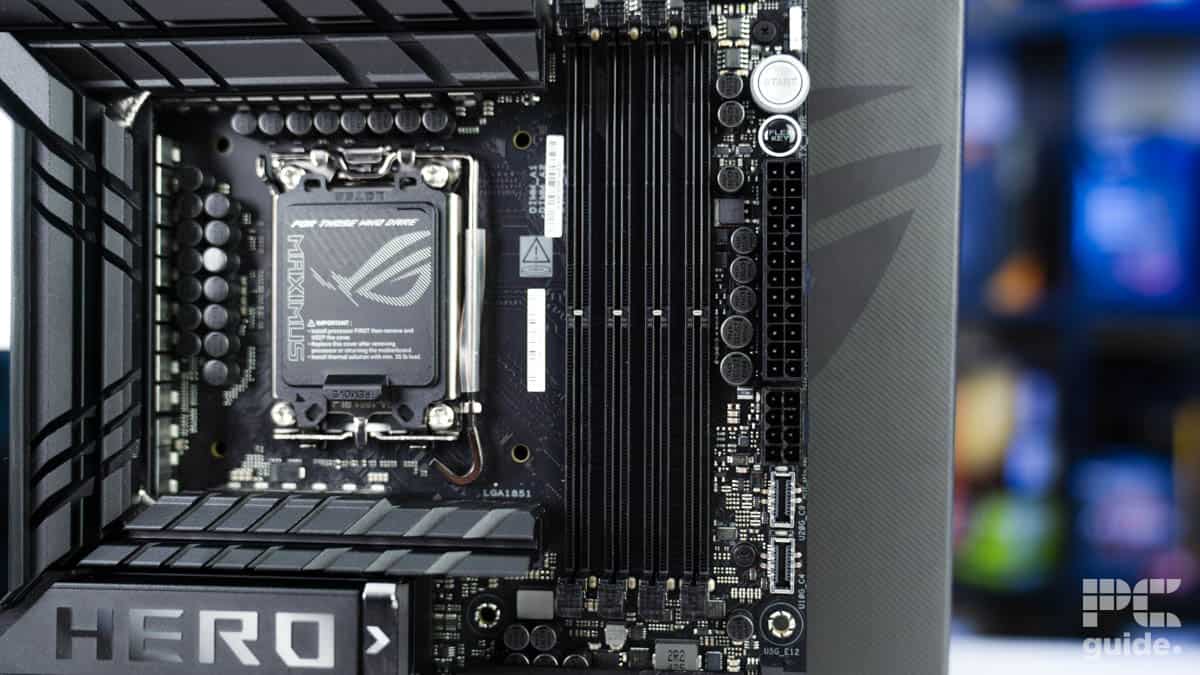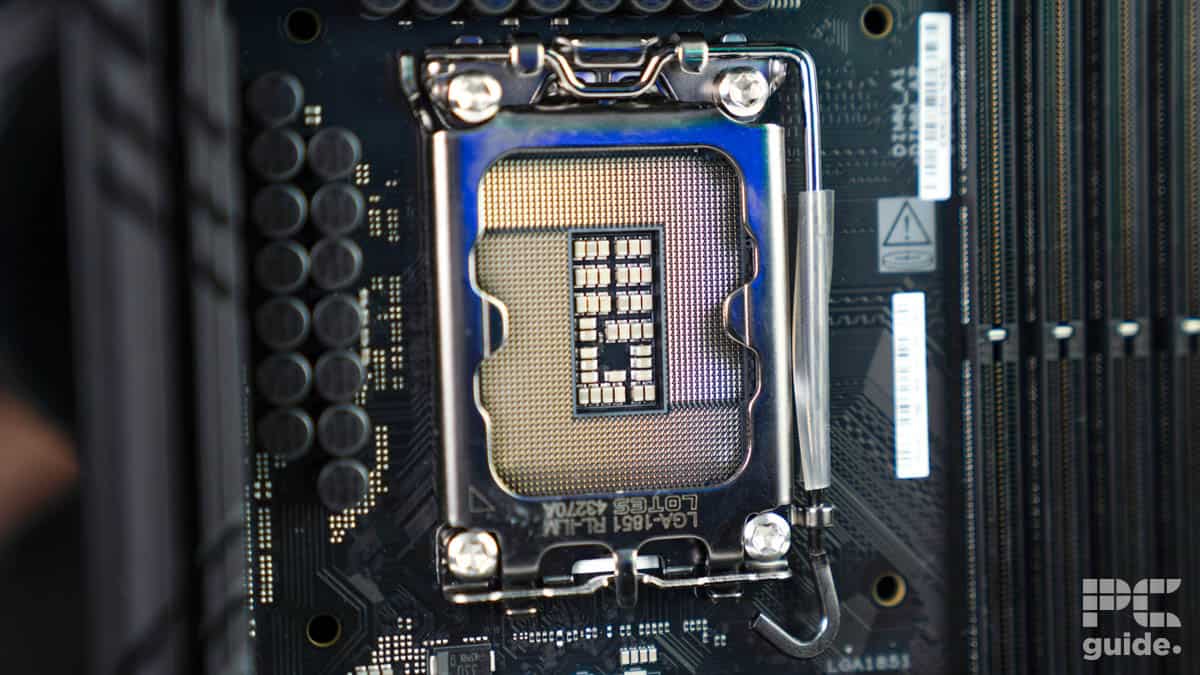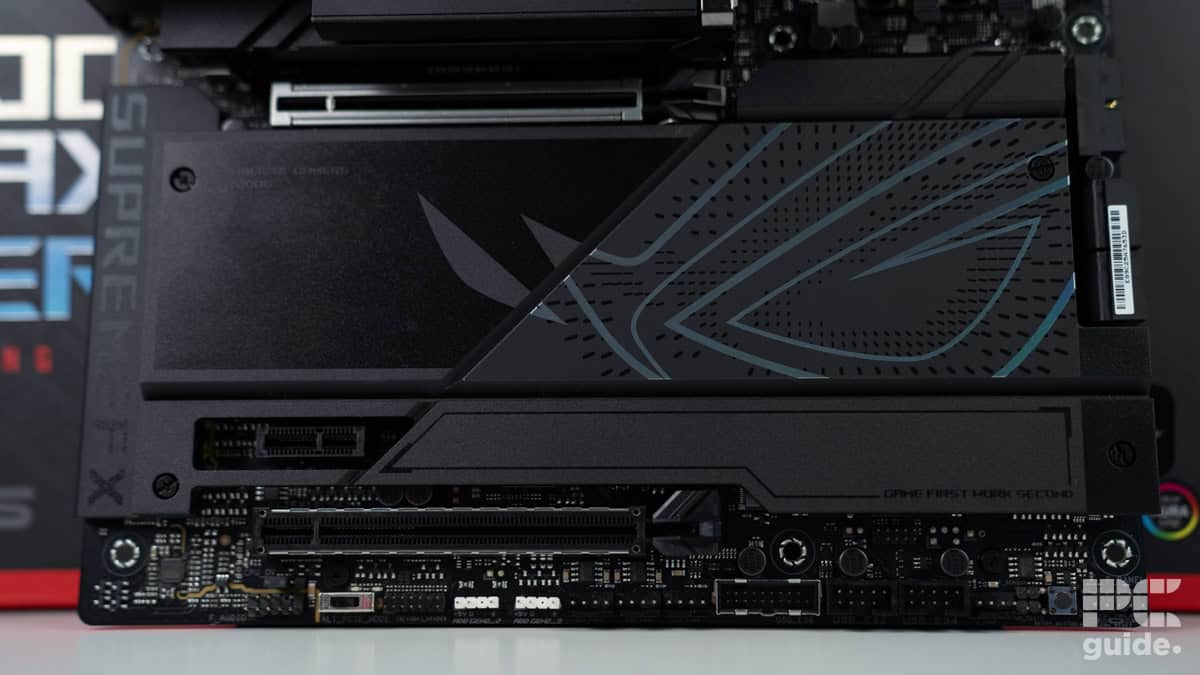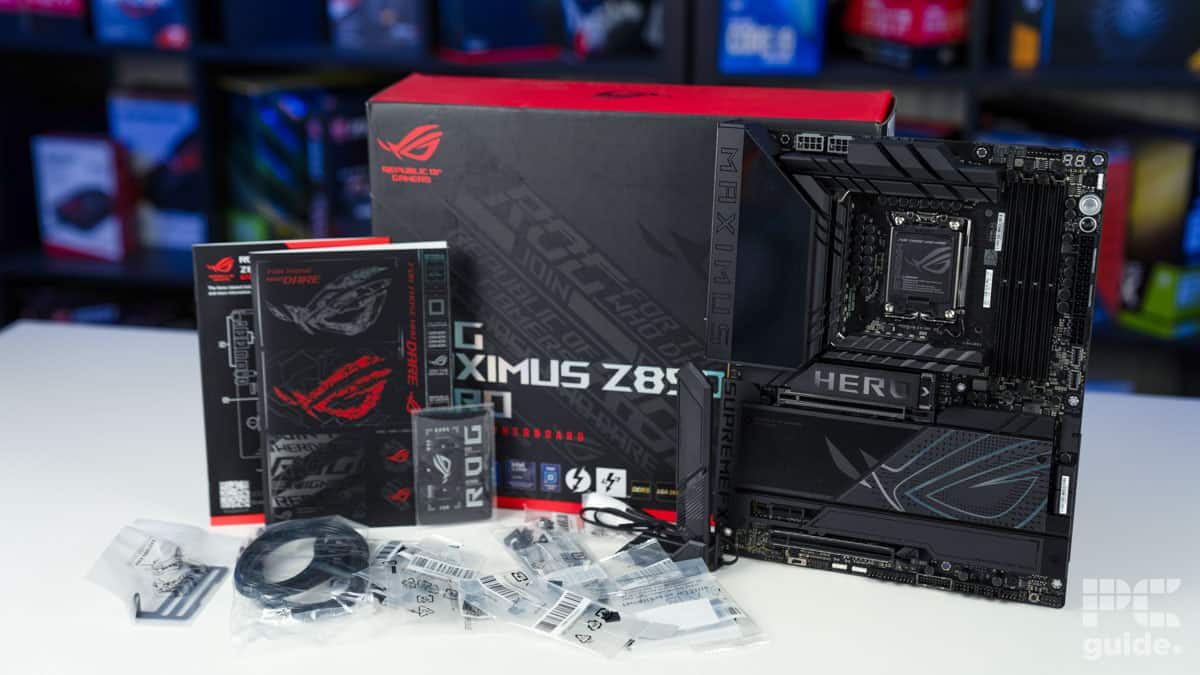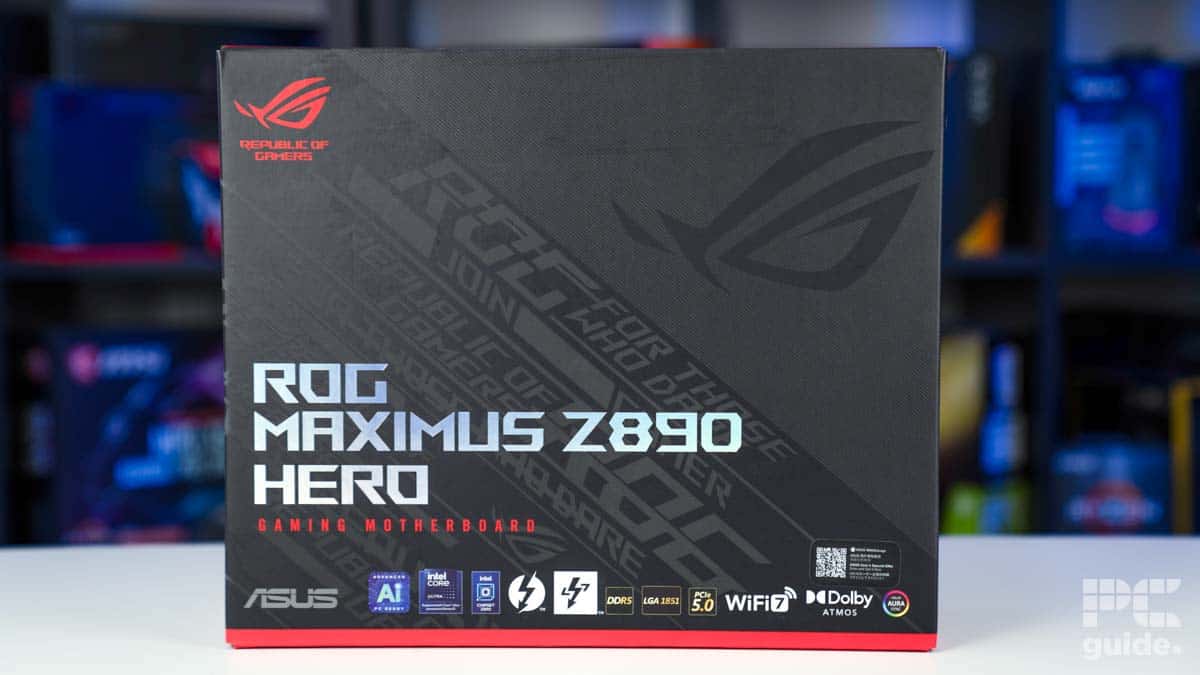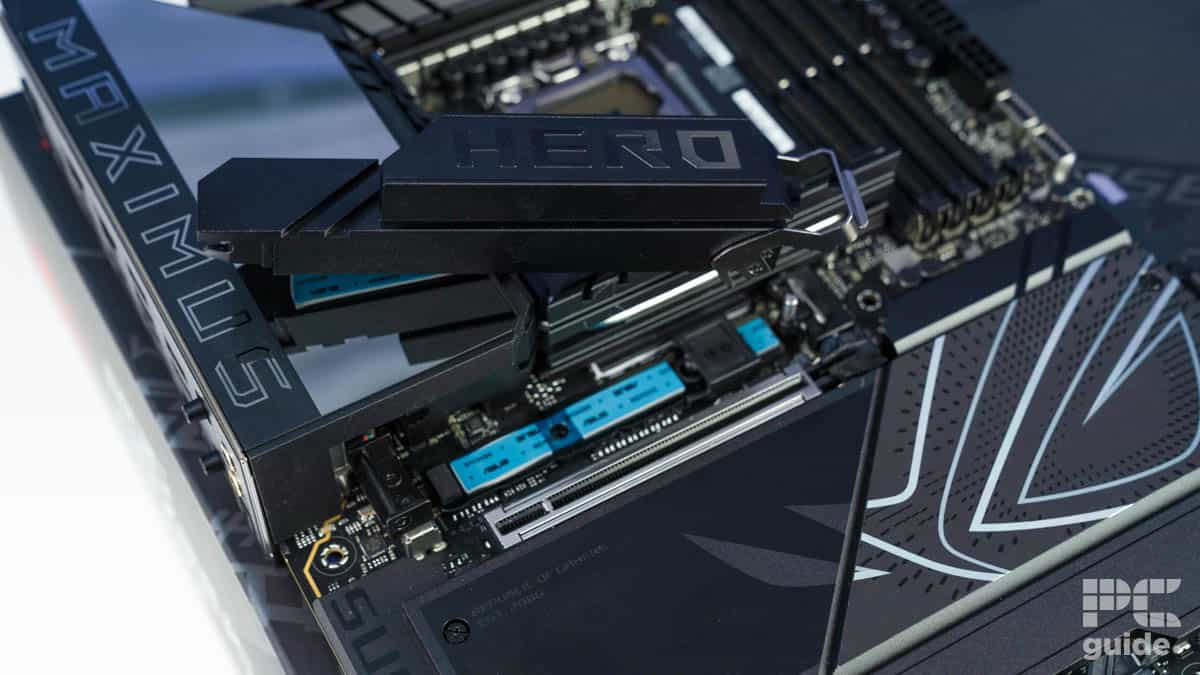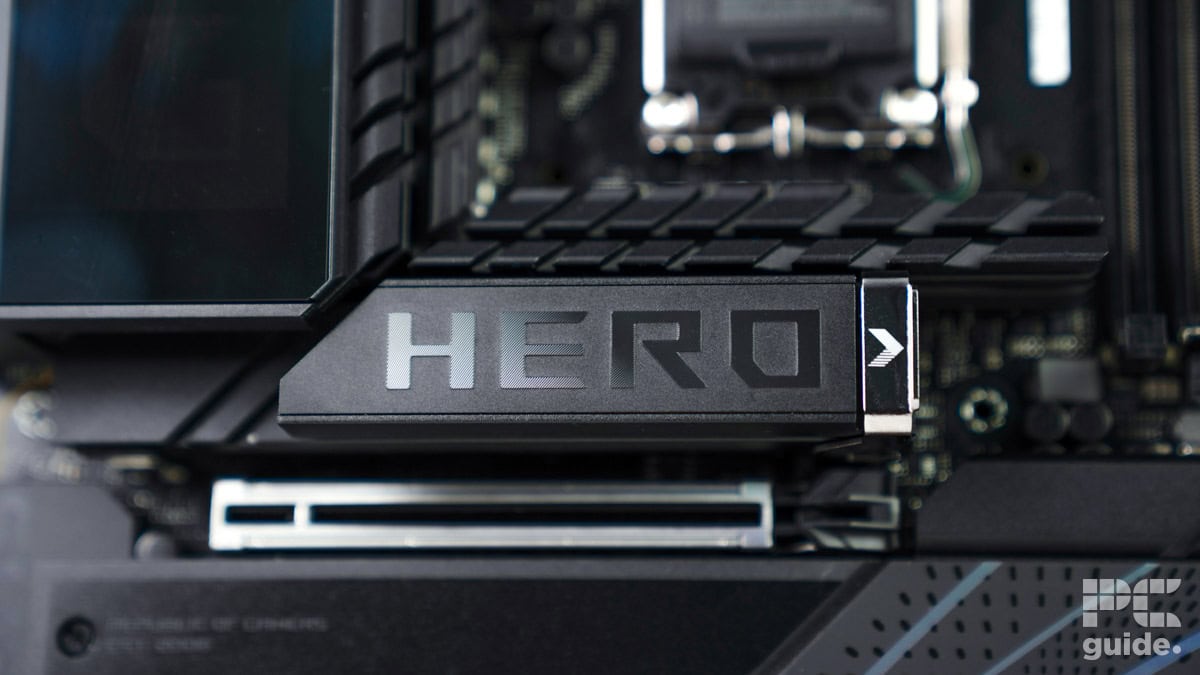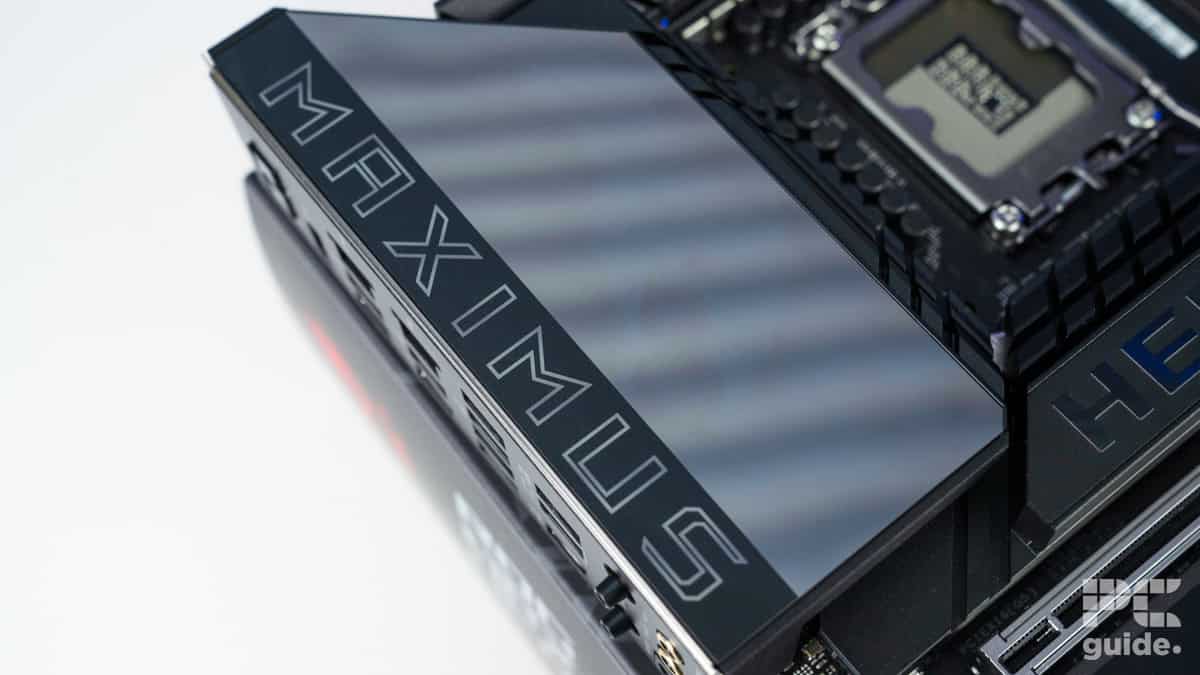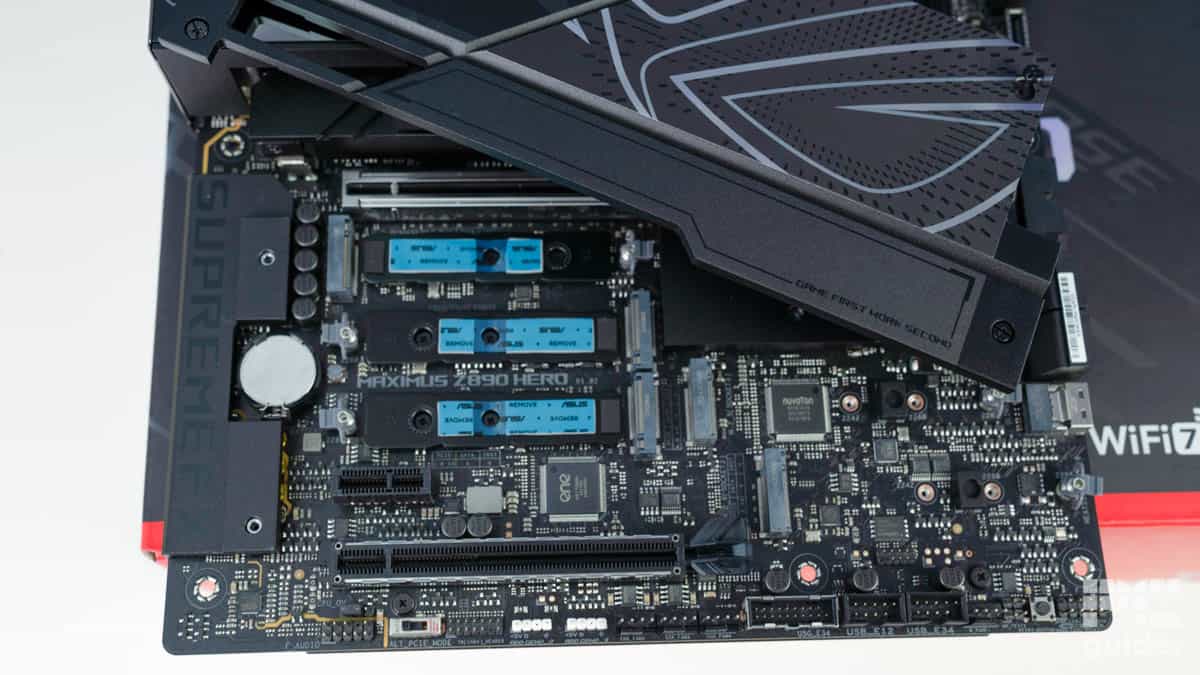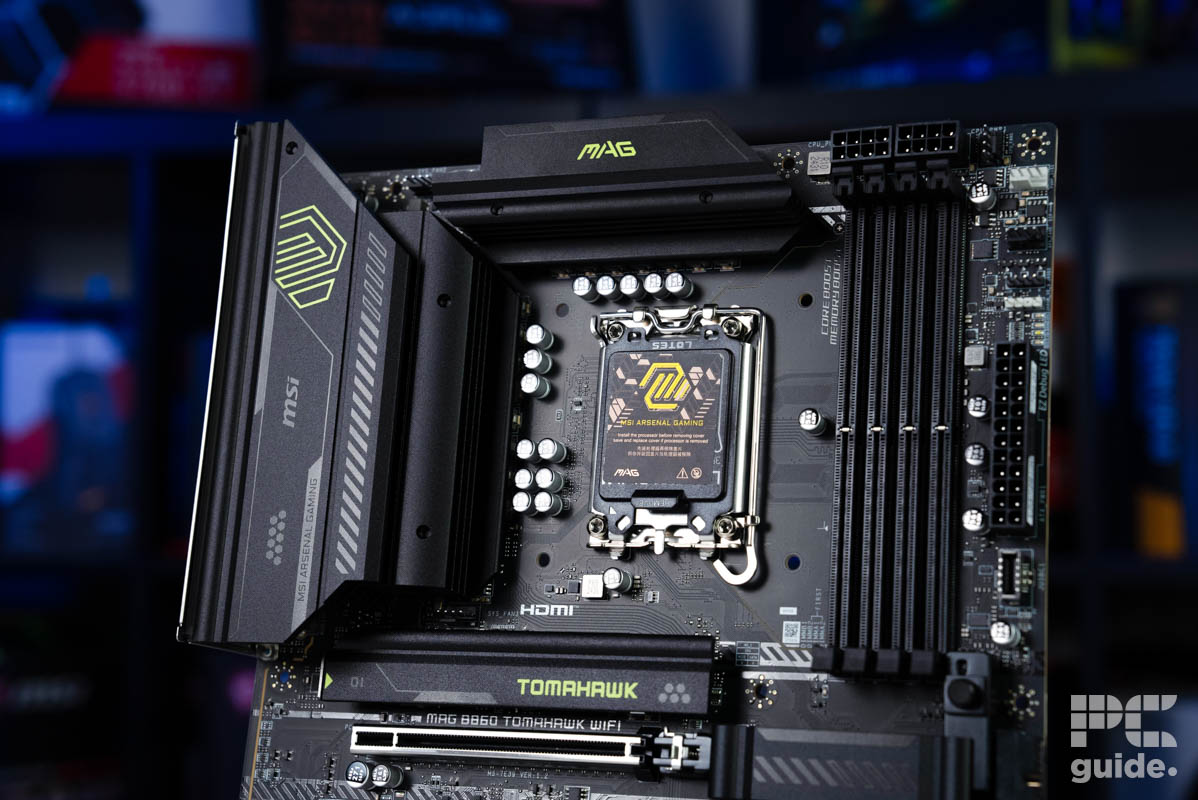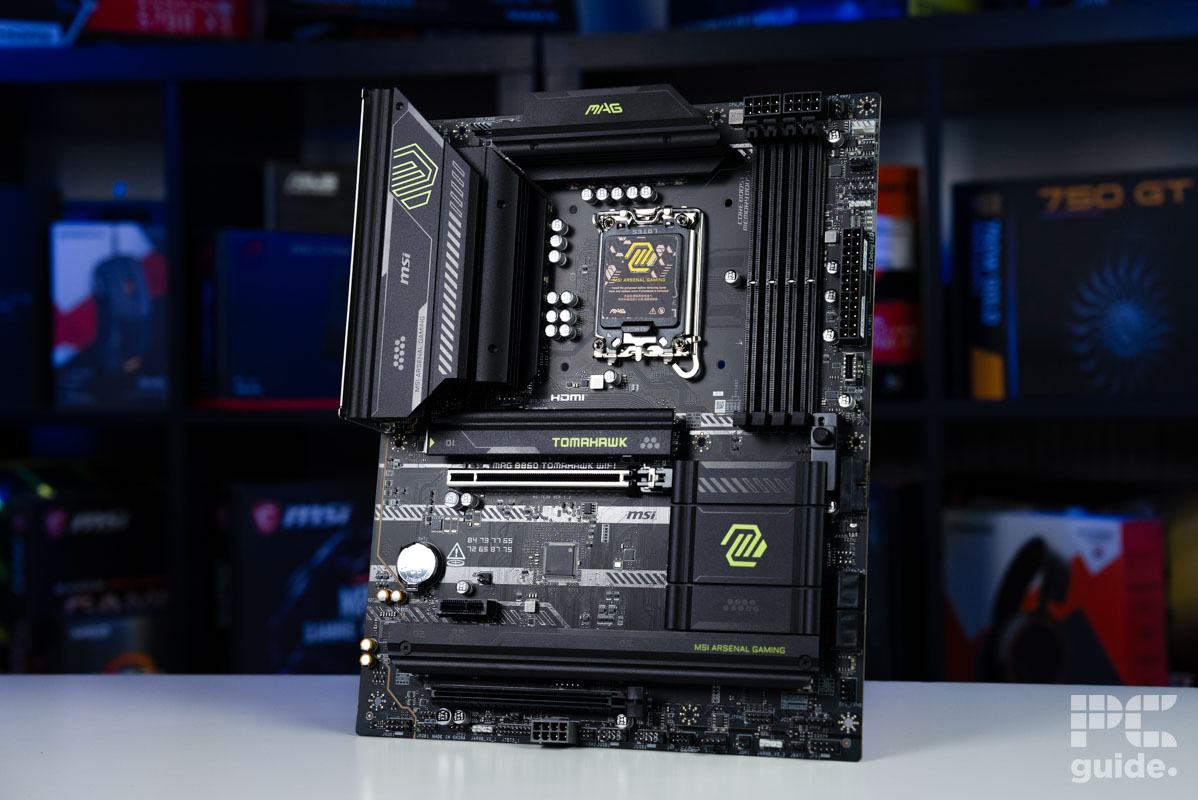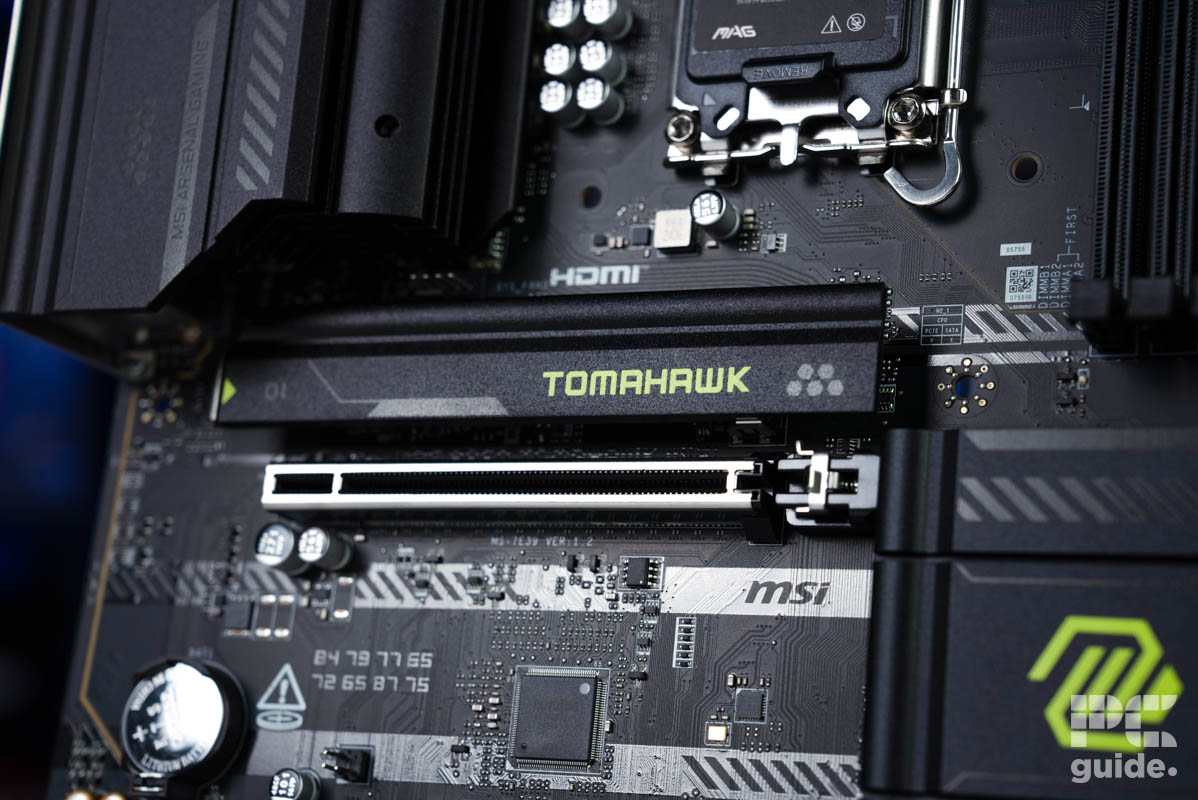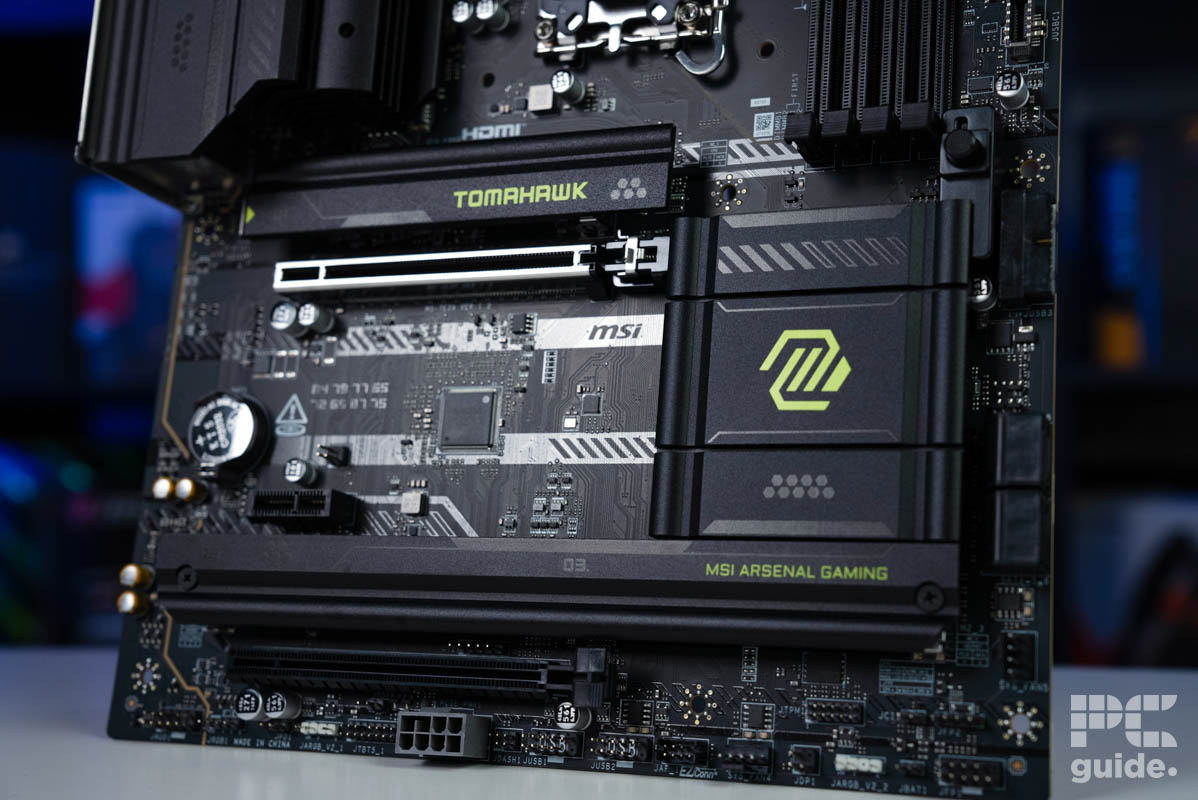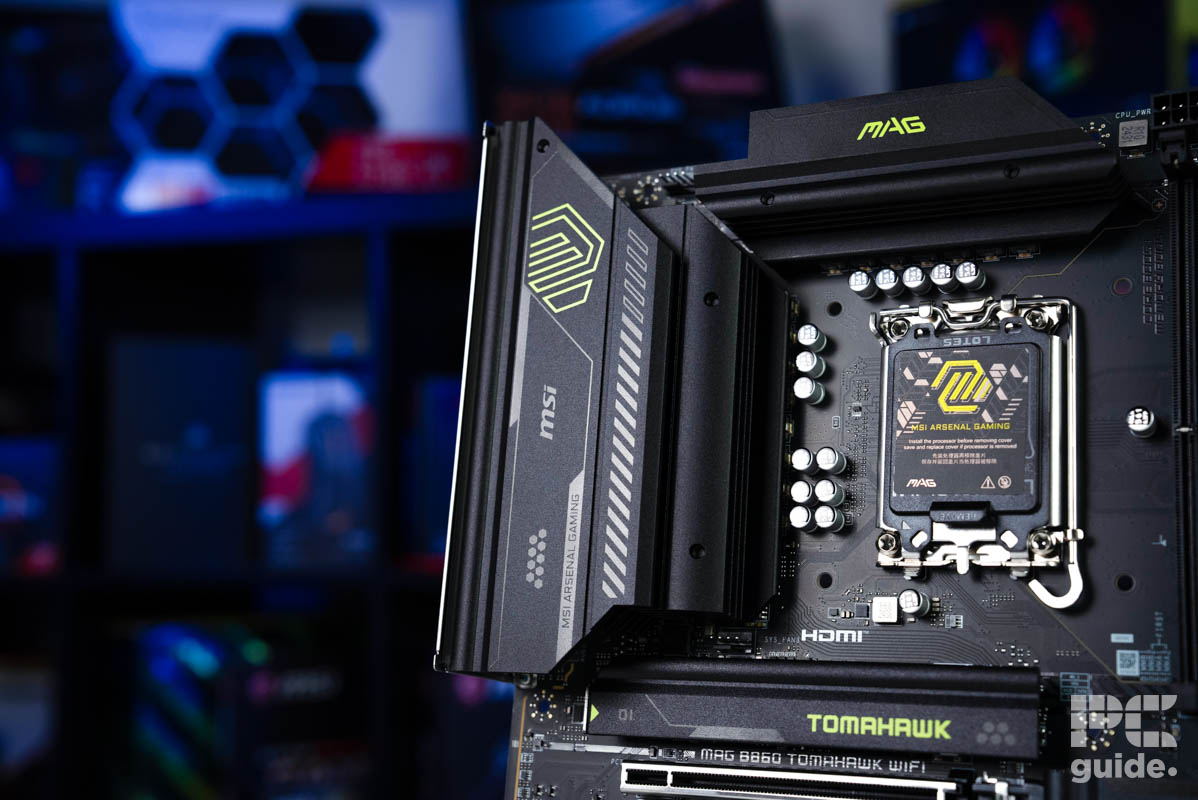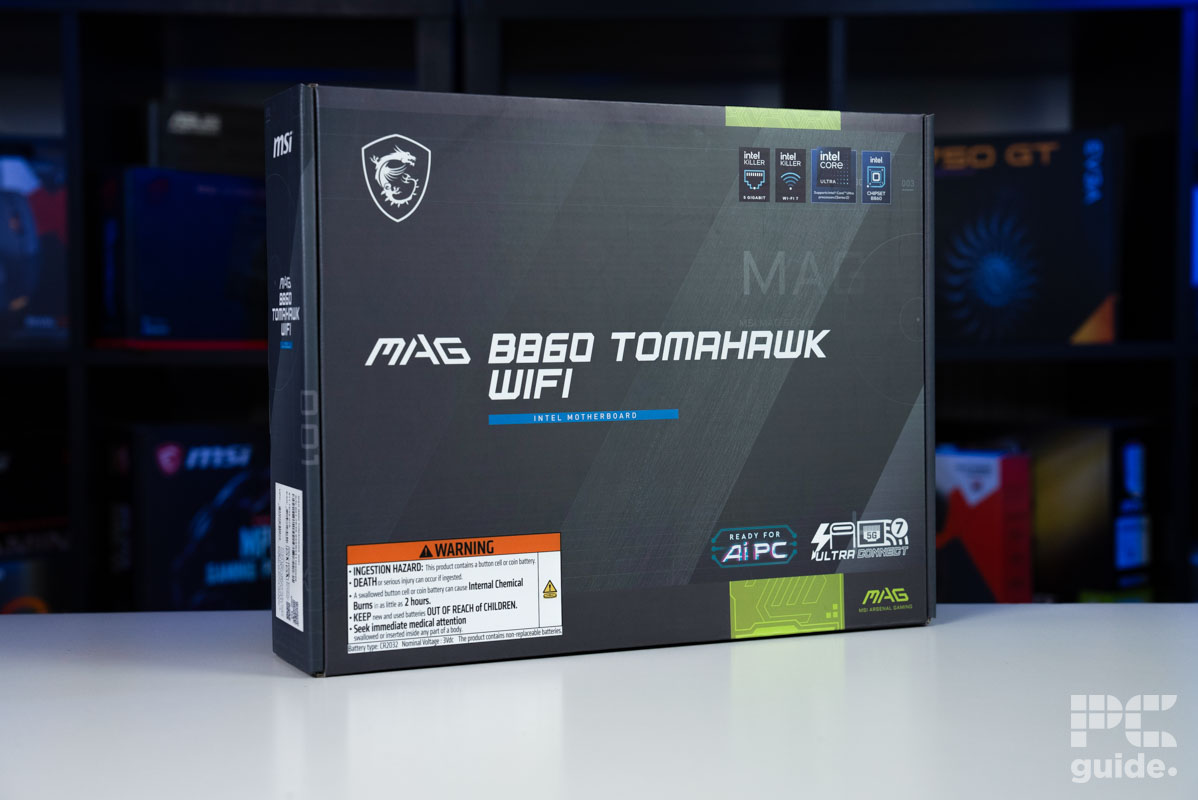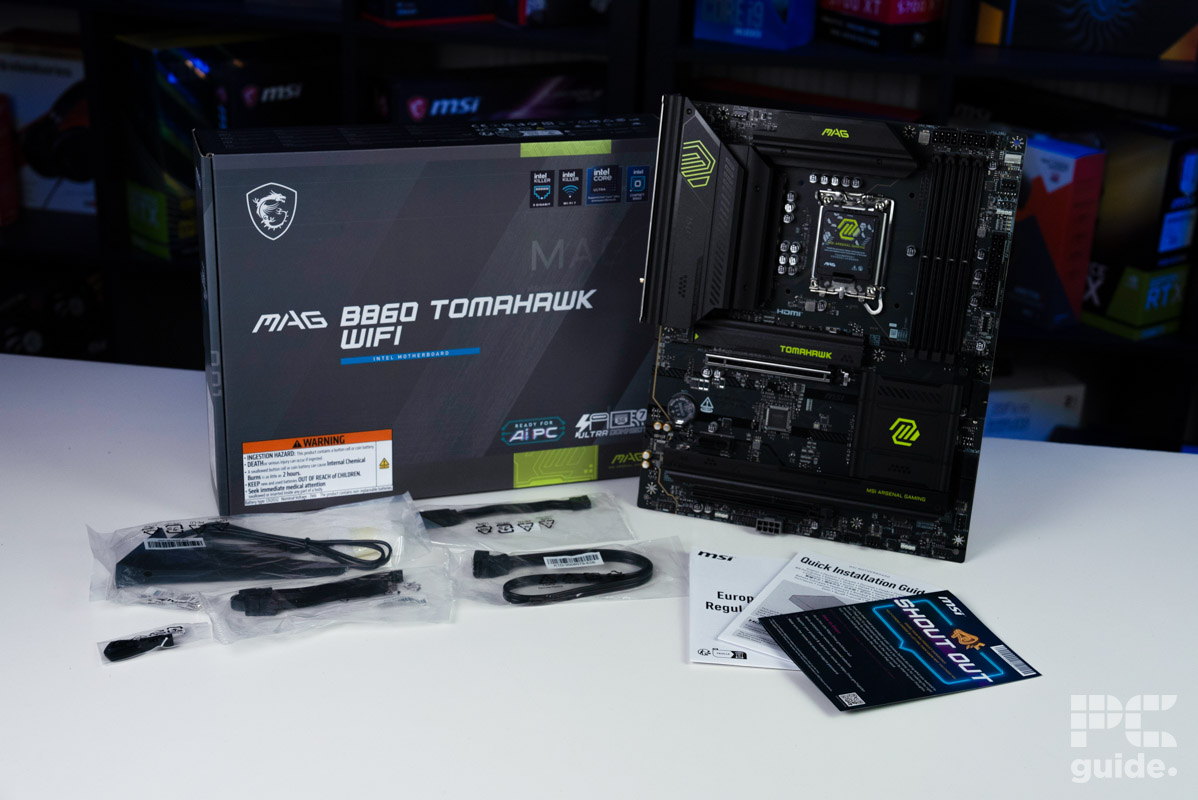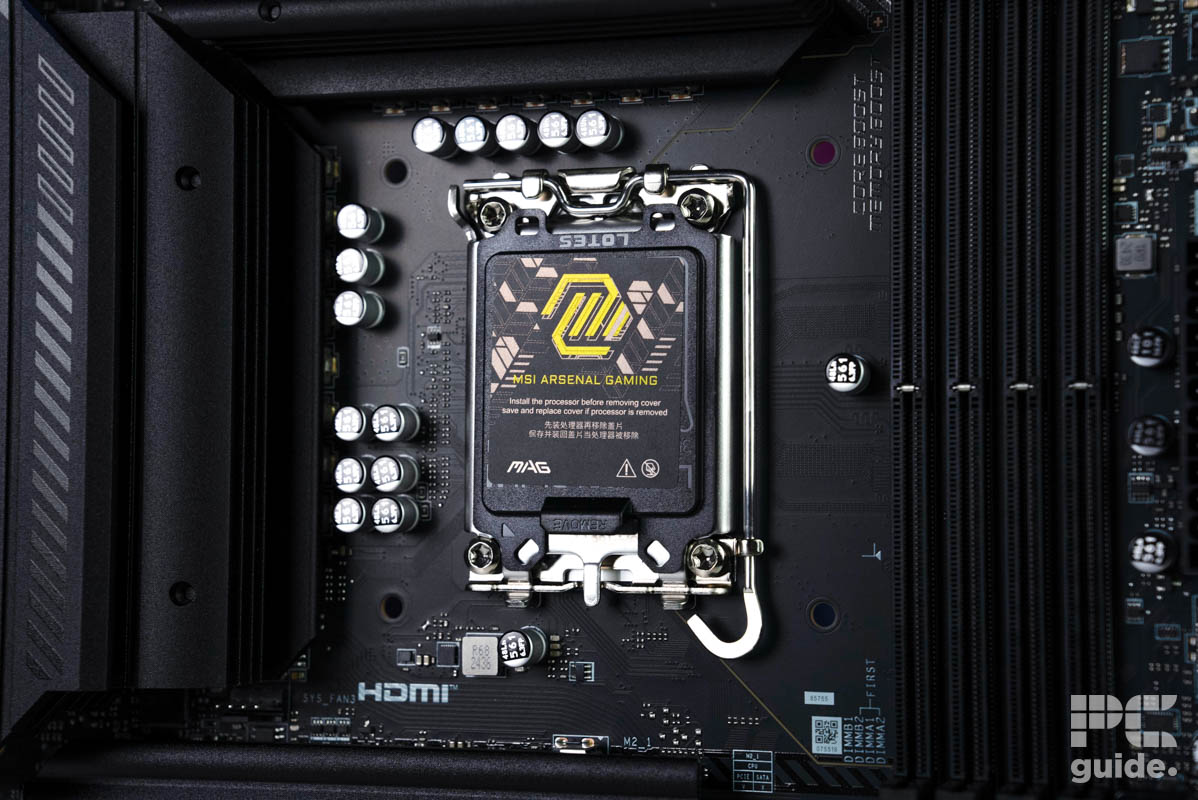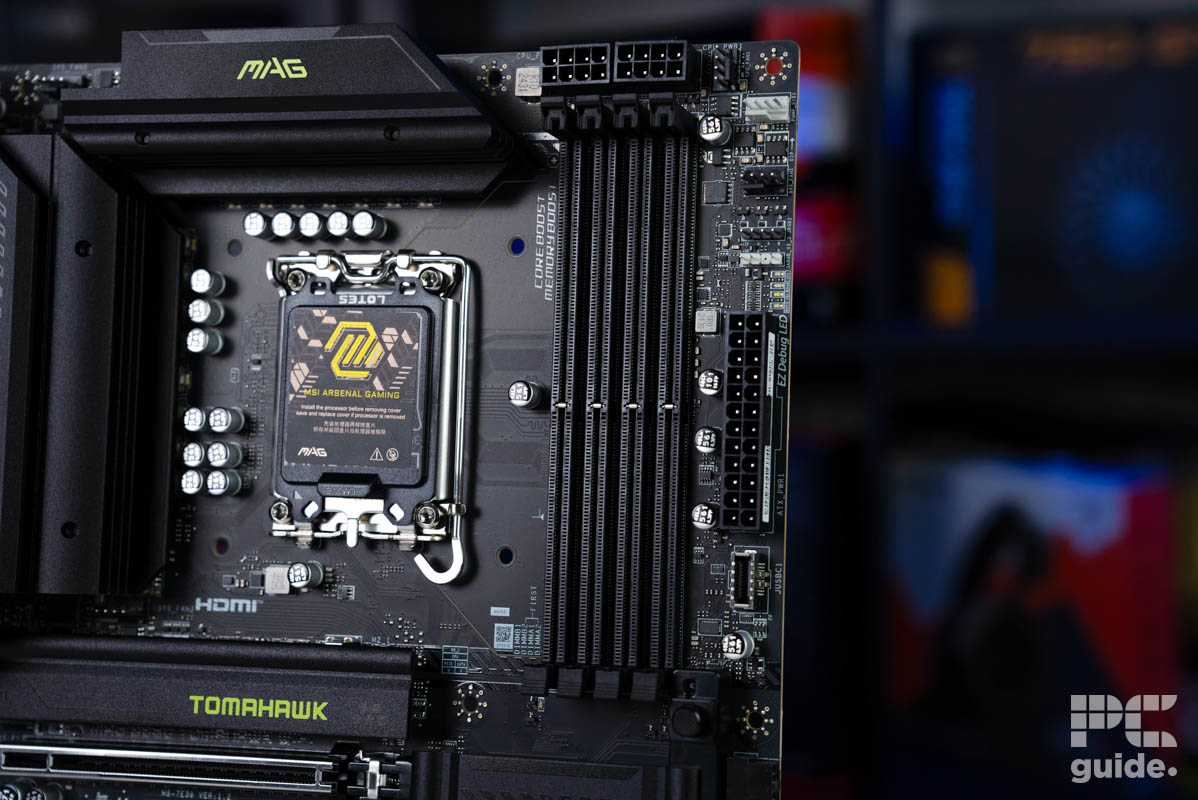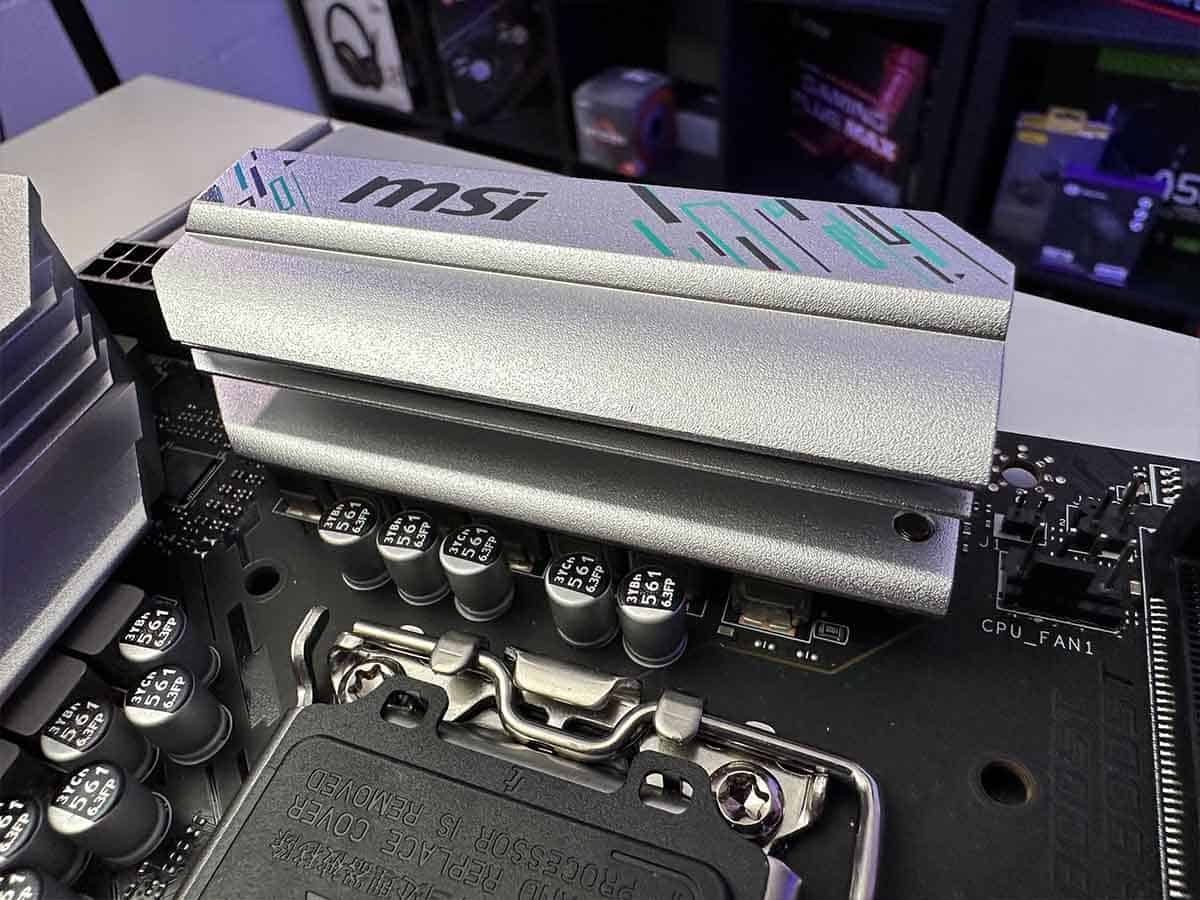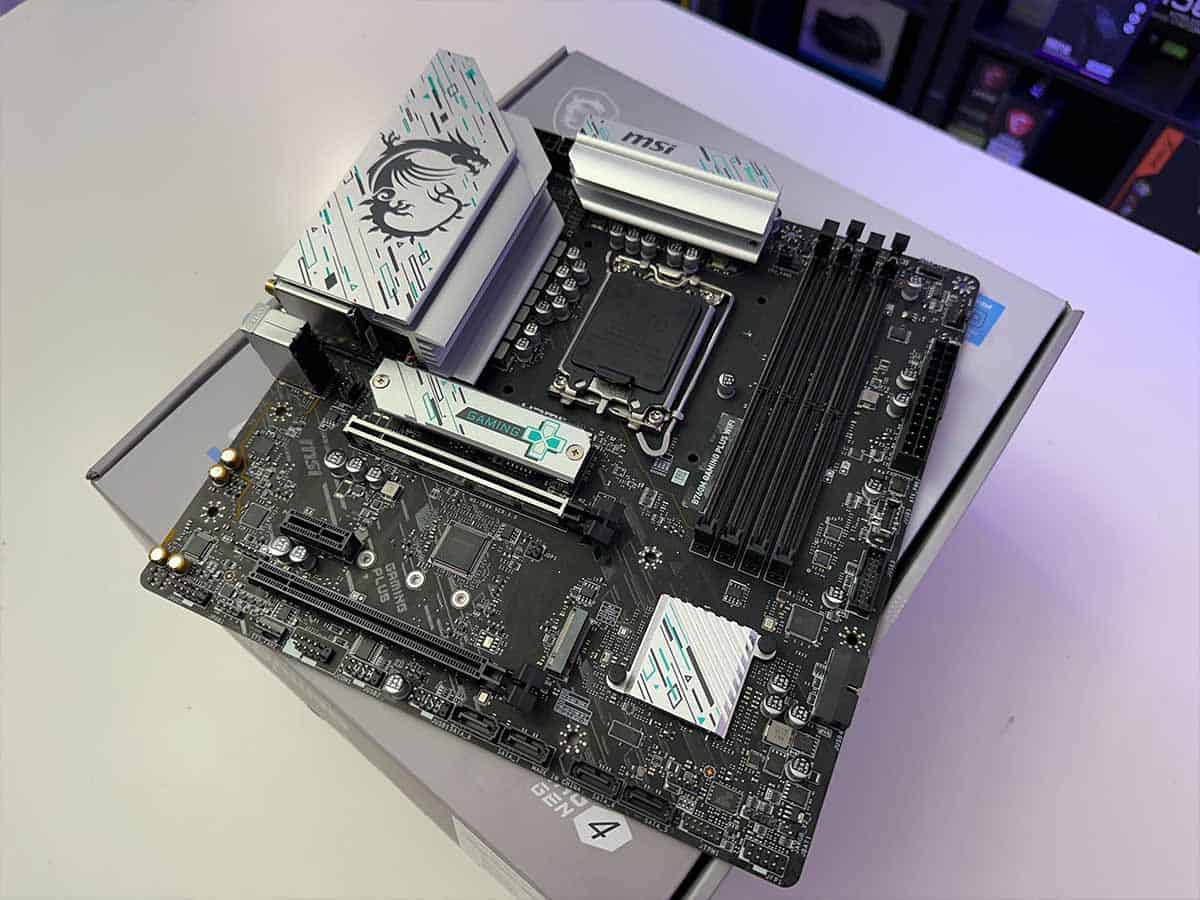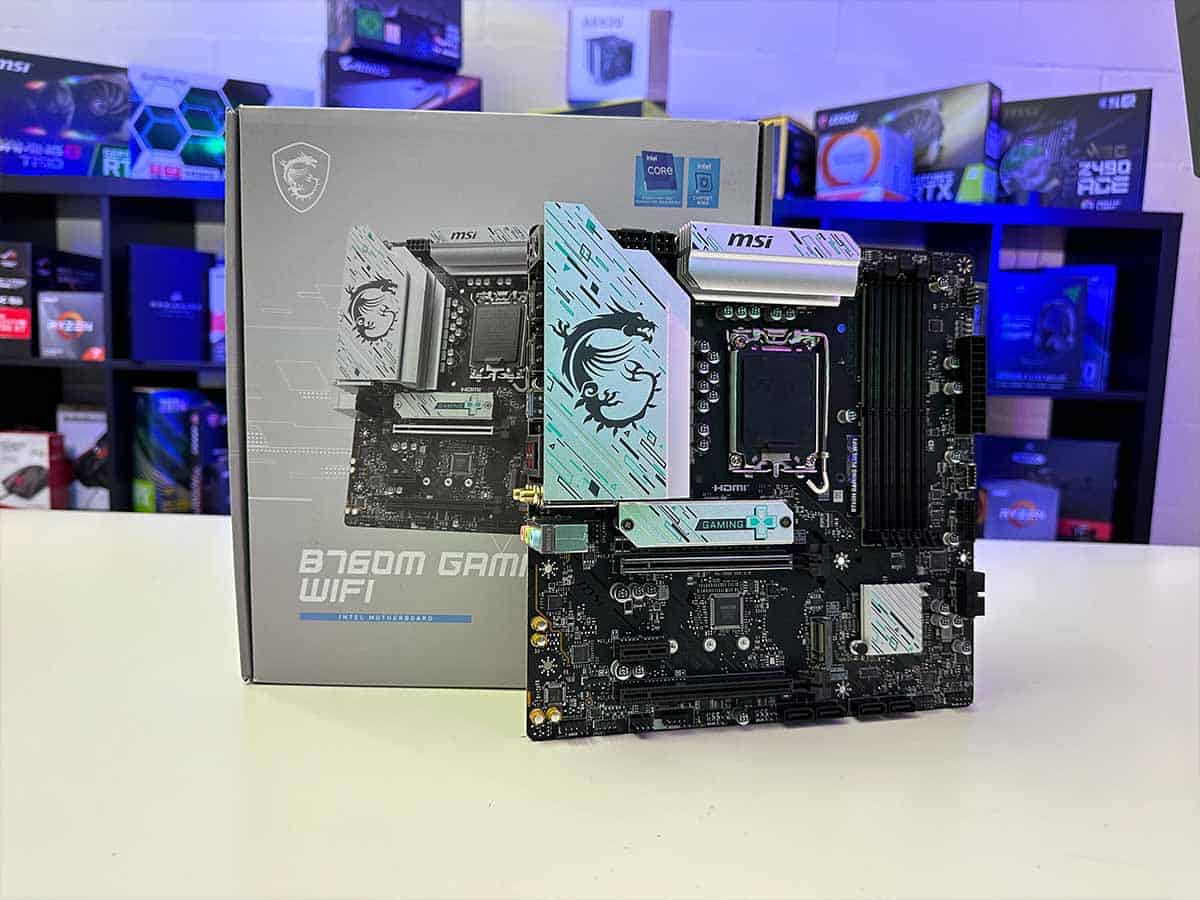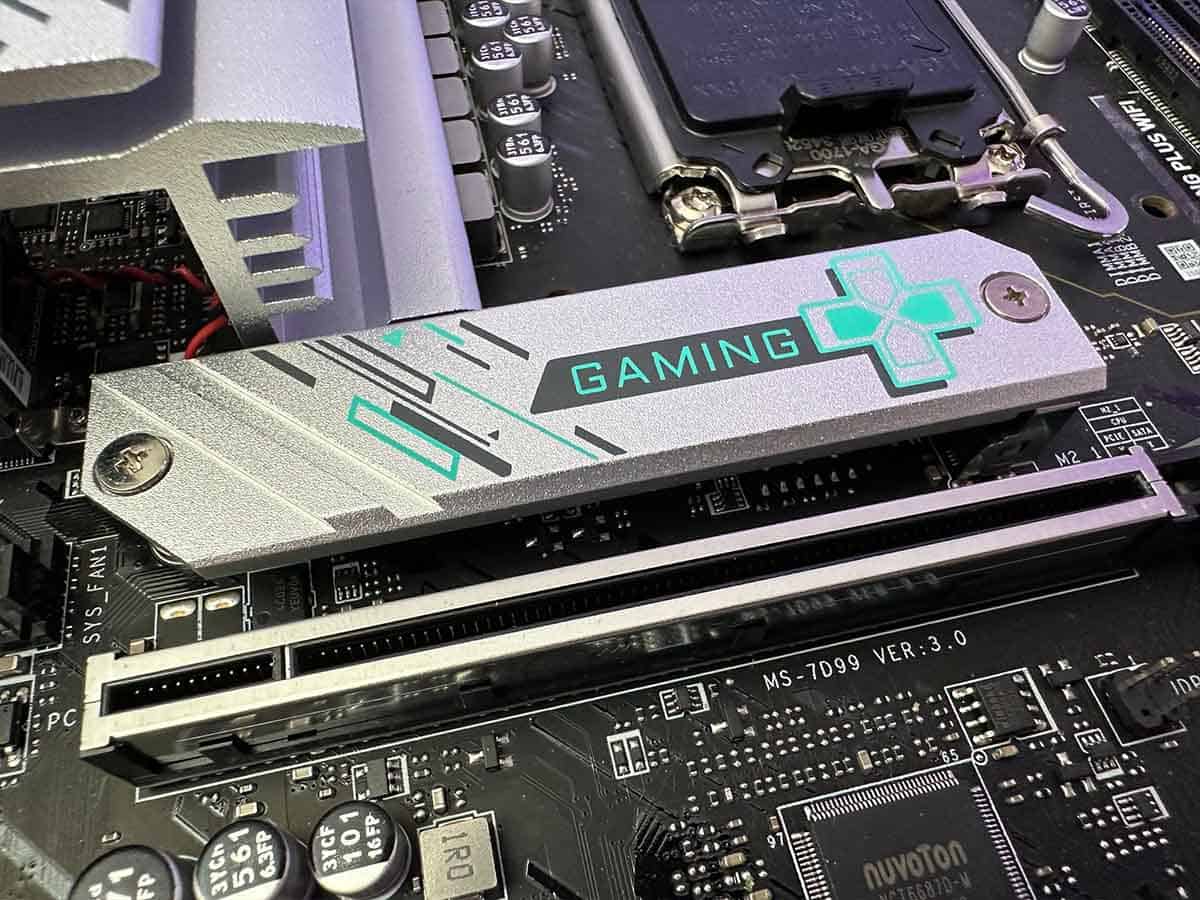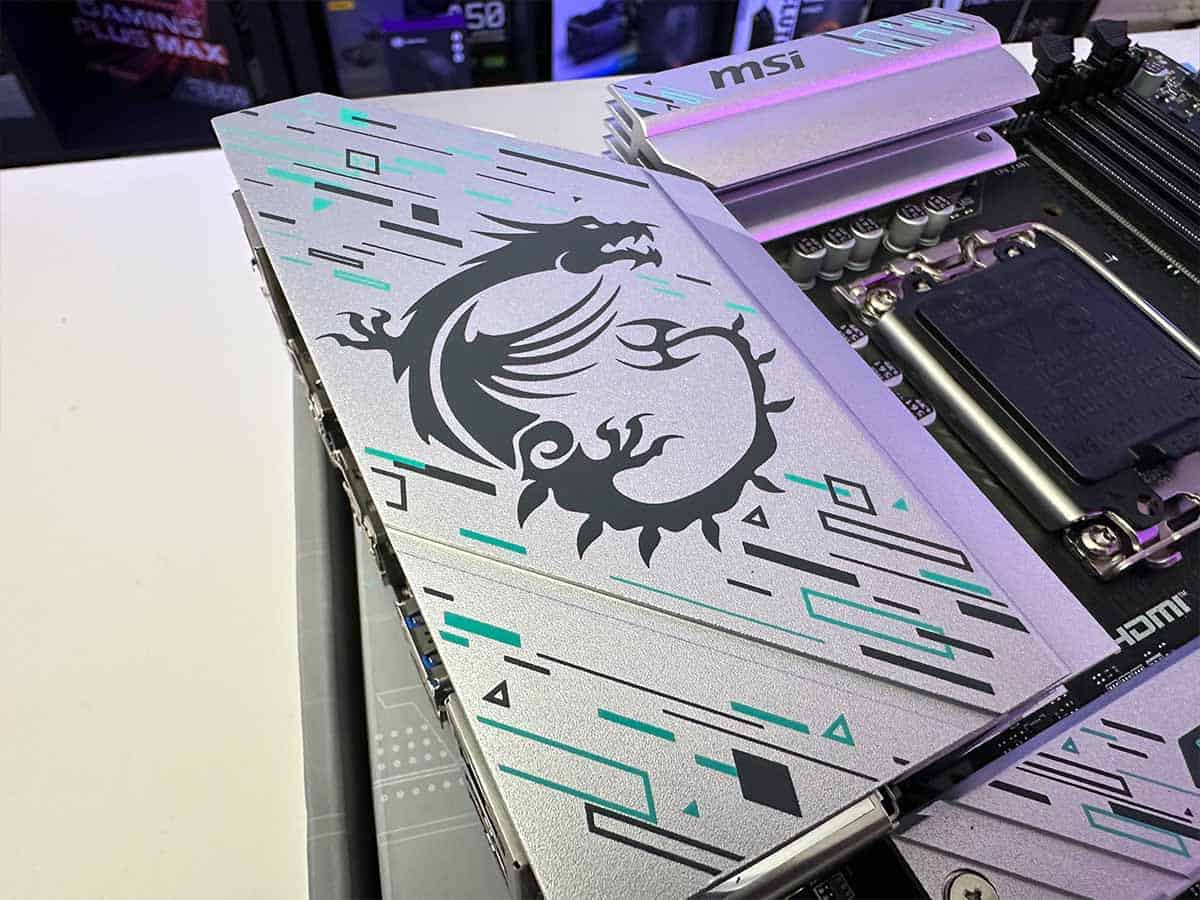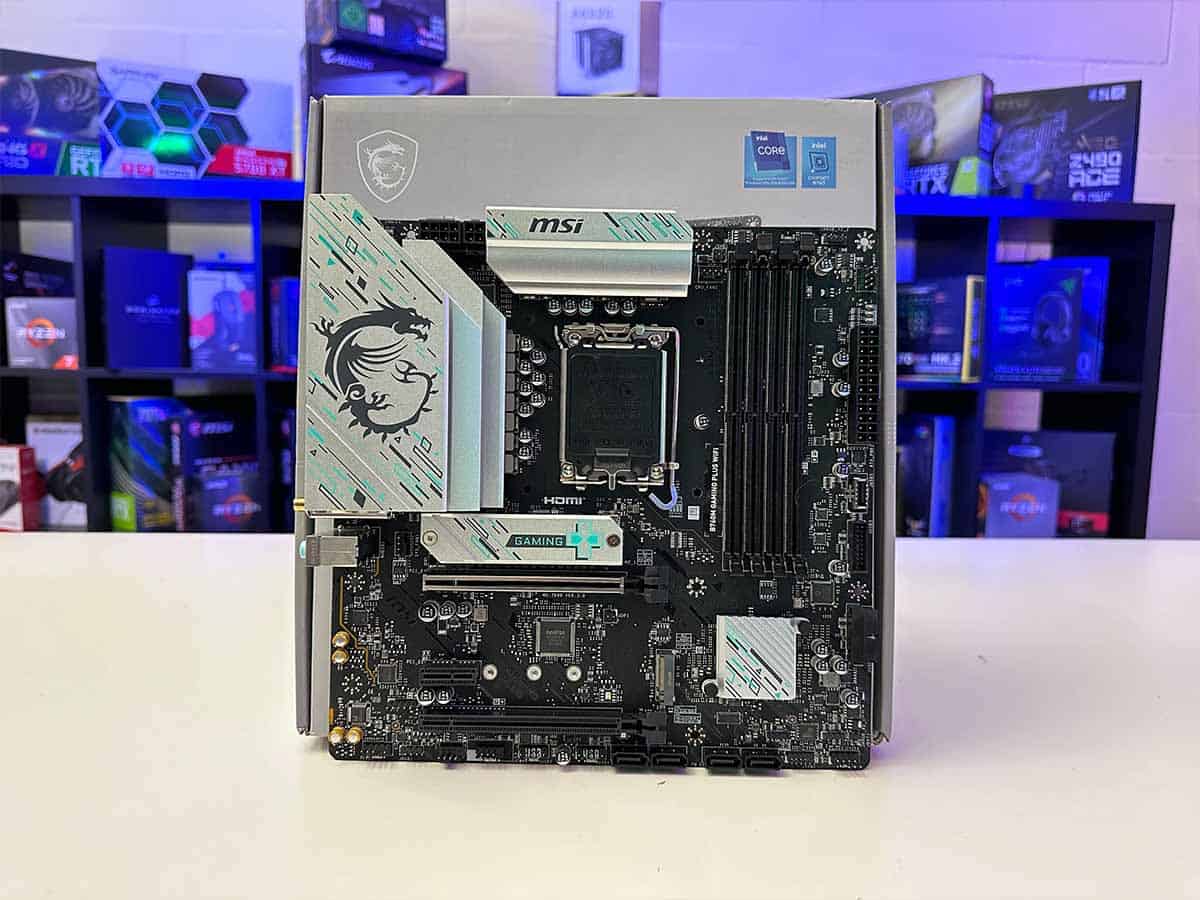Best motherboards for DDR5 RAM in 2025
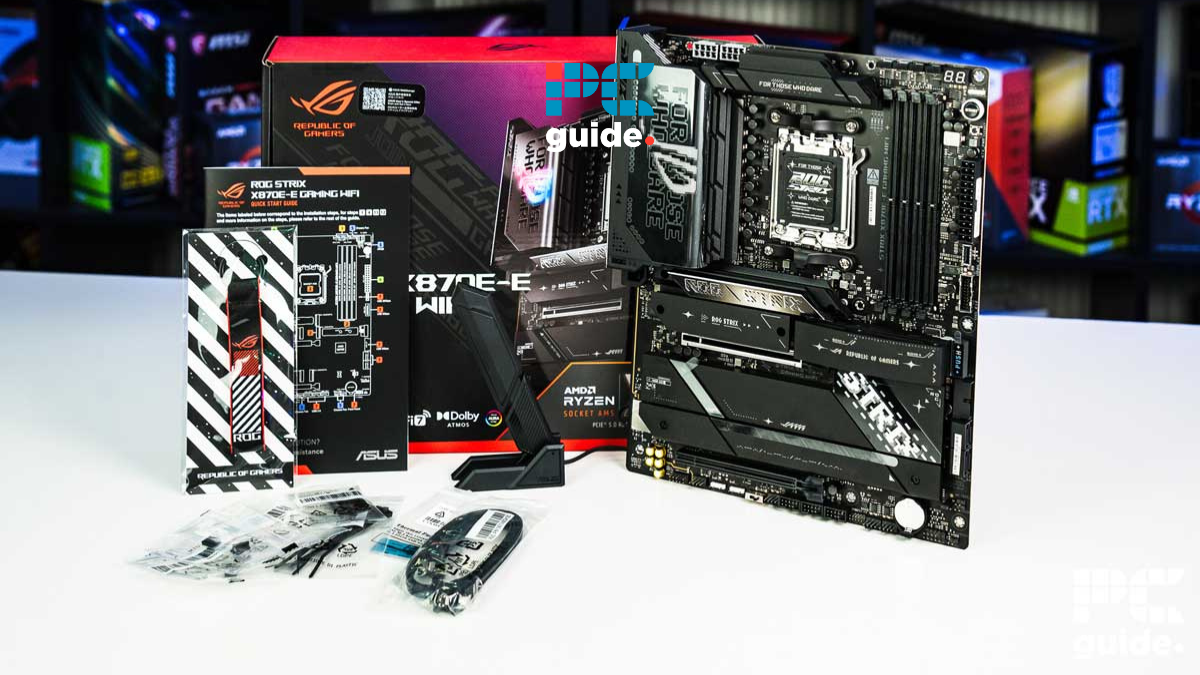
Table of Contents
Efficiency and performance are the name of the game, and with each generation, technology has progressed further, offering more and more of each. The same happened with RAM, DDR4 replaced DDR3, and now we have DDR5, which offers better speed, efficiency, and bandwidth.
That being said, to experience next-gen performance of DDR5 RAM, you'll need a motherboard and CPU that are compatible with it. DDR5 RAM has a different pin layout than DDR4, so you physically can't use DDR4 RAM.
Latest 800 series motherboards from Intel and AMD are all compatible with DDR5 RAM, but if we step back a generation, 600 series boards for AMD and 700 series boards also supported this memory type, meaning you can opt for a cheaper board to save some cash.
Going for a 600 AM5 motherboard might give you better value for money as it is compatible with Ryzen 7000 and 9000 processors, so you can easily install any processor from the two generations.
Here at PC Guide, we've put many motherboards through their paces in our testing lab for our motherboard reviews. This enables us to showcase their real-world performance, and we've selected only the best motherboards that support DDR5 RAM for this guide. So, let's get right to it, shall we?
Products at a glance
-
Best motherboard for DDR5 RAM overall
ASUS ROG Strix X870E-E Gaming WiFi
- Socket: AM5 (LGA 1718)
- Chipset: X870E
- Form Factor: ATX
- PCIe Version: Gen 5 NVMe & Gen 5 GPU
- Memory Speed: 8000+MT/s (OC)
- Memory Capacity: 192GB DDR5
-
Best runner-up
MSI MAG X870E Tomahawk WiFi
- Socket: AM5 (LGA 1718)
- Chipset: X870E
- Form factor: ATX (243.8×304.8mm)
- PCIe version: Gen 5 PCIe and Gen 5 NVMe
- Memory speed: 8400 – 5600 (OC) MT/s / 5600 – 4800 (JEDEC) MT/s
- Memory capacity: 256GB DDR5
-
Best mid-range AMD
MSI MAG B850 TOMAHAWK MAX WIFI
- Socket: AM5
- Chipset: B850
- Form Factor: ATX – 243.84×304.8mm
- PCIe Version: Gen 5 PCIe and Gen 5 NVMe
- Memory Speed: 8400 – 5600 (OC) MT/s
- Memory Capacity: 256GB DDR5
-
Best budget AMD
ASRock X870 Steel Legend
- Socket: AM5 (LGA 1718)
- Chipset: X870
- Form factor: ATX, 305x244mm
- PCIe version: Gen 5 PCIe and Gen 5 NVMe
- Memory speed: Up to 8000+(OC)
- Memory capacity: 256GB DDR5
-
Best previous generation AMD
MSI B650M PROJECT ZERO
- Socket: AM5 (LGA1718)
- Chipset: B650
- Form Factor : Micro-ATX
- PCIe Version : PCIe Gen 4
- Memory speed : 6400MHz + OC
- Memory capacity : 128GB (4 x 32GB)
-
Best Intel
MSI MAG Z890 Tomahawk WiFi
- Socket: LGA 1851
- Chipset: Z890
- Form Factor: ATX
- PCIe Version: Gen 5 PCIe and Gen 5 NVMe
- Memory Speed: 9200+MT/s (OC) / 6400MT/s (JEDEC)
- Memory Capacity: 256GB DDR5
-
Best premium Intel
ASUS ROG Maximus Z890 Hero
- Socket: LGA1851
- Chipset: Z890
- Form Factor: ATX
- PCIe Version: Gen 5 PCIe and Gen 5 NVMe
- VRM: 22+1+2+2
- Memory Speed: 9200+MT/s (OC)
-
Best mid-range Intel
MSI MAG B860 TOMAHAWK WIFI
- Socket: LGA 1851
- Chipset: B860
- Form factor: ATX
- PCIe version: Gen 5 PCIe and Gen 5 NVMe
- Memory speed: 9200 – 6400 (OC) MT/s
- Memory capacity: 256GB DDR5
-
Best budget Intel:
MSI B760 Gaming Plus WiFi
- Socket: LGA 1700
- Chipset: B760
- Form Factor : mATX
- PCIe Version : PCIe Gen 4 storage, Gen 4 GPU
- Memory speed : 6800+(OC)
- Memory capacity : 256GB, DDR5
How we picked
We selected these motherboards by looking at their prices, features, size, and the most important of all, the performance they showcased during our in-house testing. This gives us the complete picture of their real-world performance and helps us recommend only the best options, along with their details and pros and cons, to help you make an informed decision.
Our top picks

- Socket: AM5 (LGA 1718)
- Chipset: X870E
- Form Factor: ATX
- PCIe Version: Gen 5 NVMe & Gen 5 GPU
- Memory Speed: 8000+MT/s (OC)
- Memory Capacity: 192GB DDR5
- Great memory overclock reaching fast transfer speeds
- Quick disconnect NVMe and GPU makes upgrades and installation a breeze
- Improved looks with more sloped edges on heatsinks compared to previous sharpness
- Provides plenty of power to the processor and lets it run at its full potential
- A more premium option with features unnecessary for most
- Does take a long time to memory train for quick boots
After testing a lot of motherboards, we decided that the ASUS ROG Strix X870E-E Gaming WiFi is one of the best motherboards for DDR5 RAM, as it offers a lot more than just compatibility with this memory type.
The performance it showcased in our ASUS ROG Strix X870E-E Gaming WiFi review earned it a 5/5 rating from us. This board has a 192GB DDR5 RAM capacity and can handle it operating at 8,000 MT/s. Besides that, it also features PCIe connectivity for the GPU and storage devices, meaning you can easily pair it with the best DDR5 RAM and Gen 5 SSDs for the ultimate productivity, efficiency, and gaming performance.
To gauge its performance, called in the Ryzen 9000 flagship, the Ryzen 9 9950X, RTX 4070 Ti, and 32GB DDR5 RAM running at 6,400 MT/s. This combination results in Cyberpunk 2077 running at 234 FPS with a 160 FPS 1% low, a 139W power draw, and a motherboard temperature of 37°C.
The ROG Strix X870E-E Gaming WiFi gives you some of the best specs available for the motherboard making it all the pleasure to use and get the most out of the rest of the hardware.
PC Guide
This output is excellent as the 9950X has a 170W TDP and the 18+2+2 VRM design with up to 110A per stage limit did an excellent job of providing it with as much power it needed according to the workload.
We also saw this when we ran the Cinebench R23 multi-core test and Blender, as it pulled 168W and 189W, respectively, without any issues or the motherboard tuning anything down. So, this board is built to handle extreme workflow, and you can easily overclock the RAM, CPU, or GPU without running into performance or stability issues.
There are also plenty of accessibility features like a display that shows what is wrong with the build, such as if there are wrong or loose connections, etc. Besides that, you get plenty of I/O connectivity, PCIe 5.0 support, and three M.2 slots, which should be enough to address any potential storage issues.
Overall, this motherboard is a solid option if you're looking for next-gen performance with DDR5 RAM, Gen 5 SSD, or just extreme performance with any of the Ryzen 7000 or 9000 processors.

- Socket: AM5 (LGA 1718)
- Chipset: X870E
- Form factor: ATX (243.8×304.8mm)
- PCIe version: Gen 5 PCIe and Gen 5 NVMe
- Memory speed: 8400 – 5600 (OC) MT/s / 5600 – 4800 (JEDEC) MT/s
- Memory capacity: 256GB DDR5
- Excellent build quality and design
- Plenty of fast USB options
- Amazing connectivity in general with the latest ethernet and WiFi
- Great EZ DIY features for ease of building
- Top performance and great value
- Only one PCIe Gen 5 slot
- PCIe sharing between USB and NVMe can make usability complicated
- No handy onboard controls
If you want to explore more options before settling on one, we recommend you check out the MSI MAG X870E Tomahawk WiFi motherboard. This board is a great alternative to our top pick and also features the X870E chipset and is compatible with DDR5 RAM.
In our MSI MAG X870E Tomahawk WiFi review, we thoroughly tested the performance and efficiency of this motherboard by pairing it with the Ryzen 7 9800X3D, RTX 3090, and Corsair Dominator Titanium 64GB DDR5 running at 6800MT/s, and the results didn't disappoint us a bit and earned this motherboard a 4.5/5 rating.
To test the gaming output, we ran Cyberpunk 2077 and Counter-Strike 2 and got 230 and 774 FPS, respectively, with a power draw of 86.5W and 69W. As for productivity, the 9800X3D has made leaps and bounds in that domain and delivered excellent results in Blender and the multi-core tests, with 115W power draw, which is great as this CPU has a 120W TDP.
MSI's Tomahawk X870E WiFi offers the top AM5 chipset without the huge price tag. It provides great speeds across a variety of connections and features, and it has plenty of potential.
PC Guide
This means that the 14+2+1 VRM design did its job to provide a clean and stable power supply to the processor, and this combination of the CPU, GPU, and RAM was efficient, as we got good 1% lows of 173 and 271 FPS, respectively.
Besides its performance, it also has great features like WiFi 7, Bluetooth 5.4, 5G LAN port, and PCIe 5.0 connectivity for the graphics card and storage devices. All of these features should allow you to set up your gaming PC nicely without feeling like the performance is lagging in any aspect.
The design is also robust, and the EZ DIY latches should make it easy for beginners to install the SSD, GPU, and other components. Overall, this is an excellent motherboard that features a high-end X870E chipset and can support up to 256GB of DDR5 RAM running at 8,400 MT/s, meaning that you should be good for years to come.

- Socket: AM5
- Chipset: B850
- Form Factor: ATX – 243.84×304.8mm
- PCIe Version: Gen 5 PCIe and Gen 5 NVMe
- Memory Speed: 8400 – 5600 (OC) MT/s
- Memory Capacity: 256GB DDR5
- Excellent ease of use and installation process
- Incredible connectivity speeds in PCIe and networking
- Great VRMs and cooling on them
- Strong price point
- Lacks USB 4 Thunderbolt
- No segment display or onboard power buttons
Generally, mid-range offerings have a good balance of performance and value for money. That being said, if you're putting together a mid-range gaming PC and want an appropriate motherboard with DDR5 compatibility, check out the MSI MAG B850 Tomahawk Max WiFi.
Despite its mid-range label, this motherboard doesn't skip out on anything, and in our MAG B850 Tomahawk Max WiFi review, it delivered excellent performance. We paired it with the Ryzen 7 7800X3D, RTX 4070 Ti, and Corsair Dominator Titanium 64GB DDR5 RAM operating at 6800MT/s.
In Cyberpunk 2077, we got 242 FPS with an average temperature of 31°C and power draw of 67.2W. For comparison, this FPS is more than what we got with the MSI MAG X870E Tomahawk. In CS2, we got 730 FPS with 1% lows of 300 FPS, which is close to what the MSI MAG delivered, but there 1% low is significantly better.
The Tomahawk B850 is a great mid-tier motherboard option which grants you access to the incredible speeds of te AM5 platform, without the price tag of the X870. With top-level Gen 5 performance, the latest connectivity, and EZ solutions for installations, this is a motherboard that ticks practically every box I can think of.
PC Guide
In Blender Monster, this combination delivered 115.24 points with a 67.2W power draw, which is acceptable as it has a 14+2+1 power design, and it should be able to handle much more powerful CPUs with ease.
Once again, there is no shortage of high-end connections in this mainboard, you get WiFi 7 connectivity, Bluetooth 5.4, three USB 10 Gbps Type-C, two USB 10 Gbps Type-A, and plenty more. What this means is that you can easily deck out your system with peripherals such as a gaming mouse, monitor, or portable SSD, without worrying about slow performance due to low bandwidth.
The MSI MAG B850 Tomahawk also has a 256GB DDR5 RAM capacity, and with the help of AMD Expo, you can easily overclock it as it has a max speed support of 8,400 MT/s. So, this board offers the complete package, and it comes at an affordable price point.

- Socket: AM5 (LGA 1718)
- Chipset: X870
- Form factor: ATX, 305x244mm
- PCIe version: Gen 5 PCIe and Gen 5 NVMe
- Memory speed: Up to 8000+(OC)
- Memory capacity: 256GB DDR5
- A more reasonable X870 offering
- Lots of USB ports, including fast USB 4
- Latest spec PCIe and wireless generation spec
- Clean and simple white design
- Lacks a debug code display
- No EZ PCIe latch
- LEDs are not diffused on the bottom so quite harsh when viewed at an angle
Just because technology has advanced doesn't mean you'd need to splurge a huge amount to experience next-gen performance. So, if you've got a strict spending limit but want a motherboard that can handle DDR5 RAM, the ASRock X870 Steel Legend is for you.
This motherboard can handle up to 256GB of DDR5 RAM and a maximum memory speed of up to 8,000+ MT/s (OC). What this means is that you can easily stack a kit or two of 32GB or 64GB modules, and you'll have space for more, meaning future upgrades are possible.
However, realistically speaking, you won't need 256GB or even 128GB of RAM for daily usage or gaming. Even for resource-intensive tasks, 32GB should be fine, and it should also keep your costs low without compromising on performance.
In our ASRock X870 Steel Legend review, we tested its output by pairing it with the 7800X3D, RTX 3090, and the good old Corsair Dominator Titanium 64GB DDR5 @ 6800MT/s.
The ASRock X870 Steel Legend is a great value pick, at least in the X870 range. It still provides a wide range of features and opportunities to get the most out of your hardware, and with next-generation connectivity for wireless and PCIe, it is a future-proof choice, even if it's a minimal showing.
PC Guide
In CS2 and Cyberpunk 2077, we got 585 and 226 FPS, respectively, with a power draw of 57.9W and 66.9W. For comparison, the MSI X870E MEG Godlike managed 229 FPS in Cyberpunk 2077 and 643 FPS in CS2.
It costs over $1,000, and the performance difference in gaming and professional tasks wasn't a lot, as we got 114 and 116 points in Blender Monster with the respective boards so it doesn't make sense to invest so much in a motherboard when you can put together a new gaming PC in the same amount.
It also has an X870 chipset, which should allow for high overclocking with any AM5 processor you pair it with, and if you use the 9800X3D or the 9950X3D, you should get even better results in gaming, especially the 1% lows if you overclock the RAM.
Overall, this motherboard punches above its weight class and delivers exceptional performance at a budget, and that makes it one of the best motherboards for DDR5 RAM.

- Socket: AM5 (LGA1718)
- Chipset: B650
- Form Factor : Micro-ATX
- PCIe Version : PCIe Gen 4
- Memory speed : 6400MHz + OC
- Memory capacity : 128GB (4 x 32GB)
- Good value for money
- Looks good, really like the white
- Thermal armour keeps VRMs cool
- Slight performance loss vs X670E
- Difficult to install if your case doesn't accommodate for the rear connections
- Micro-ATX, so only 1 PCIe slot
The current generation of motherboards isn't your only option, as the 600 series boards also support AM5 processors, DDR5 RAM, and come with a pocket-friendly price tag. So, we recommend you check out the MSI Project Zero B650M.
This is a mid-range motherboard with a mid-range B650 chipset and features a unique back-connect design that gives it a very clean look, as all the connections are on the back, effectively hiding most of the wires from the front.
The only aspect you'd need to pay attention to is to ensure that your PC case is compatible with this design, because if it isn't, you won't be able to make the connection, and you'll have to return it or upgrade your PC case. That being said, in our MSI Project Zero B650M review, it showcased pretty good performance and efficiency.
We paired it with the Ryzen 9 7900X and ran our standard suite for tests. This processor has a 170W TDP, and in some tests, we could see this board supplying more than that to it, depending on how much power it needed to handle the task at hand.
This motherboard is quirky, but perfect if your a user that just needs an AM5 motherboard to get things done. It even features most of the connectivity on the back, for a clean, wireless aesthetic. If that's your thing.
PC Guide
For example, in the Cinebench R23 multi-core test, it was getting 177.67W with a maximum package power of 182.04W with a minimal power loss of 4.37W. So, while its VRM design of 10+2+1 might seem humble, it is more than capable of handling the power requirements of high-end processors.
For comparison, the ASUS X670E motherboard managed 28,204 points in the same test, while with this board we got 27,992, which is only a 0.7% difference, almost negligible.
That being said, this mainboard has a maximum memory capacity of 128GB, which, comparatively, seems less but is more than enough for any task you can throw at your PC. The max memory speed is 6400+(OC up to 7600), and this should keep your system firing effectively as the sweet spot for AM5 processors is 6,000 MHz, so you've got plenty of overhead to work with.

- Socket: LGA 1851
- Chipset: Z890
- Form Factor: ATX
- PCIe Version: Gen 5 PCIe and Gen 5 NVMe
- Memory Speed: 9200+MT/s (OC) / 6400MT/s (JEDEC)
- Memory Capacity: 256GB DDR5
- Great overclocking support for processor and RAM
- Handy and useful easy installation features for multiple items
- Fast and next-gen connectivity in wireless and PCIe systems
- Simple and tasteful design
- Still, a rather expensive motherboard for more budget builds and overkill
- No power buttons unlike BIOS and CMOS so you still have to rely on pins
For those who want to stick with Intel processors for the best productivity, we recommend the MSI MAG Z890 Tomahawk WiFi. This is an LGA 1851 motherboard, meaning it is only compatible with the Arrow Lake processor, but has a high memory capacity and speed.
In our MSI MAG Z890 Tomahawk WiFi review, we gave it a 4.5/5 rating due to the performance it showcased. We paired it with Core Ultra 5 245K, RTX 4070 Ti, and Corsair Dominator Titanium 64GB DDR5 running at 6800MT/s.
This setup delivered a maximum package power of 147.3W when we ran the Furmark 2 test and a maximum CPU temperature of 68°C. What this shows is how efficiently this motherboard can handle the power requirements of the processor in extreme situations.
In general, the MSI MAG motherboard is a great choice for speed and connectivity. It features the latest gen of wireless and PCIe, making it as future-proof as it gets at this time, likely giving you at least a couple more Intel CPU generations of support.
PC Guide
This is courtesy of the 16+1+1+1 90A power delivery design, and you should be able to easily pair it with much powerful processors in the Core Ultra 200S lineup. So, besides a robust VRM design and the ability to deliver great performance, this board can accommodate 256GB of DDR5 RAM with a max speed of 9,200+ MT/s.
That being said, it isn't always recommended to push the memory to its limit, as that can lead to instability issues, and it also depends on how much the CPU can handle. Generally, 8000 MHz is considered the sweet spot for Arrow Lake processors, which is quite fast, and even 32GB RAM should be enough to promote seamless productivity and gaming performance.

- Great EZ release features on PCIe and NVMe slots
- Incredible cooling performance with massive heatsinks across the board
- Plenty of fast connectivity with PCIe Gen 5 and DDR5 support
- Lots of nice to have features for easy troubleshooting and building
- Incredibly expensive, even more than the top CPU that fits it
- Plenty of overkill for most builds with features that won't be used
If you're not held back by your finances and want the best DDR5 motherboard for Intel processors that money can buy, check out the ASUS ROG Maximus Z890 Hero. This motherboard also has a Z890 chipset, which comes with a robust VRM design, resulting in excellent performance and a hefty overhead for overclocking.
The RAM capacity and speed are the same as our Intel pick, but what puts it above it is the 22+1+2+2 VRM design with a 110A, 90A, 90A, and 80A power limit, respectively. This means that it can further clean and stabilize the power supply before it reaches the CPU, memory, SoC, and other miscellaneous aspects.
This also enabled it to easily handle the demands of the Core Ultra 9 285K, as we found out in our ROG Maximus Z890 Hero review. This test bench also consisted of the Corsair Dominator Titanium 64GB DDR5 6800MT/s, and the performance was great as we were able to hit 236.7W of power during the Furmark 2, which is great as the 285K maxes out at 250W.
The ROG Maximus Z890 Hero ticks all the right boxes for both experienced and first-time builders. It's packed with features that make for easy installation, offers incredible cooling performance, and plenty of ports and connectivity.
PC Guide
Despite that, the board remained at a cool 38°C, meaning the onboard thermals and cooling solutions did a great job of keeping it cool. Being a high-end motherboard, it comes with all the latest technologies such as WiFi 7, meaning you can work, stream, or game via a wireless connection, but to make use of that you'll need a WiFi 7 router.
In addition, it has PCIe 5.0 connectivity, a good amount of fan headers, plenty of M.2 slots, two Thunderbolt 4 USB Type-C ports, and more. Everything you'll need to build an enthusiast gaming PC, and the RAM capacity should ensure that you're on top of your game.

- Socket: LGA 1851
- Chipset: B860
- Form factor: ATX
- PCIe version: Gen 5 PCIe and Gen 5 NVMe
- Memory speed: 9200 – 6400 (OC) MT/s
- Memory capacity: 256GB DDR5
- EZ DIY solutions make installation and troubleshooting a breeze
- BIOS is simple and easy to use, with great overclocking capabilities
- Fast connectivity with PCIe Gen 5, WiFi 7, 5G RJ45, and Thunderbolt
- Great performance in temps and scores
- No debug segment display
- No power and reset buttons on the mainboard
- Basic and simple design that might not be to everyone's taste
If you want a build with an Arrow Lake processor with DDR5 RAM for maximum productivity and efficiency, but don't want to spend a huge amount, the MSI MAG B860 Tomahawk WiFi is for you.
This mainboard features the mid-range B860 chipset, which gives it good performance at a relatively affordable price. In addition, it also sports 256GB of DDR5 RAM with a 9,200 MT/s memory speed, just like the high-end 800 series Intel boards.
So, from that perspective, you're not missing out on anything. However, when it comes to the VRM design, it has 12+1+1+1 60A, which is perfectly fine for a mid-range offering, but also means that you won't get the same level of performance as you'd get with a high-end board, which is a fair trade-off.
The MAG Tomahawk B860 generally provides a great lower-tier option on the LGA 1851 socket. It features super fast connectivity, excellent performance, and has both an easy to use BIOS, in addition to physical EZ solutions across the board that make installation a joy.
PC Guide
Besides that, all the latest technologies and features are part of the package, and it has excellent performance as we paired it with the Core Ultra 9 285K in our MSI MAG B860 Tomahawk WiFi review.
In Cyberpunk 2077 and Counter-Strike 2, we got 211 and 599 FPS with a 135.5W and 90.1W power draw, respectively. While the gaming performance isn't the best compared to the Ryzen offering, the productivity is great, as we got 41,318 points in the Cinebench R23 multicore test, which is exceptional.
Overall, despite having fewer VRMs to work with, it was able to deliver a stable power supply to the 285K, resulting in this output. So, you're getting excellent value for money if you choose this board.

- Socket: LGA 1700
- Chipset: B760
- Form Factor : mATX
- PCIe Version : PCIe Gen 4 storage, Gen 4 GPU
- Memory speed : 6800+(OC)
- Memory capacity : 256GB, DDR5
- Inexpensive
- Very good performance
- lightweight, small
- Aesthetically pleasing
- Not as many features as other motherboards in price range
- No protective backplate
- Gets hotter than some motherboards
- Only 2 M.2 slots
Just like how the previous generation of AMD boards are still alive and kicking, it is the same with Intel boards, and one of the best out there is the MSI B760M Gaming, as it supports DDR5 RAM and has a very pocket-friendly price tag.
In our MSI B760M Gaming Plus WiFi review, we paired it with the Intel Core i5-14600K and the RTX 4070 Ti Super, and it showcased pretty decent performance. This board was able to supply the 14600K with 194.4W during Blender Classroom and delivered 24,688 points. The PL1 of the 14600K is 181W, so this shows that this board has no issues going above that if there is a need for it, without running into stability issues.
This motherboard is a fantastic pick for those looking for performance on a budget, it doesn't offer a lot in terms of features but it makes up for that in terms of power. The cost is low and the potential is high, what's not to love?
PC Guide
For comparison, the ROG Z790 Dark Hero and ASUS Prime Z790, both of which we've reviewed, delivered 24,388 and 24,314 points in Blender Classroom. These boards have a high-end Z790 chipset, a more robust power delivery design, and cost more. Despite that, the B760M outperformed them in all tests, which is simply incredible and gives it exceptional value for money.
The only downside is that this board only has PCIe 4.0 for the GPU and storage devices, but that means that you'll need Gen 4 SSDs, which have good performance but also cost less. Overall, this board should serve you well and deliver good performance as it supports 256GB DDR5 RAM with a 6800+(OC) speed.
How to select the best motherboard for DDR5 RAM
When it comes to selecting the best motherboards compatible with DDR5 RAM, there are only a couple of factors that you need to consider. We've laid out a few below.
Compatibility
The first and most important aspect is compatibility. You can choose any motherboard from any brand featuring any chipset and of any size, but it'll all be for nothing if it doesn't support DDR5 RAM modules.
So, check out the manufacturer's product page of any particular motherboard to confirm whether a mainboard is compatible with that memory type or not.
Expansion slots
Depending on the size of the motherboard, you'll get two or four RAM slots, meaning the maximum memory capacity of that board could be 128, 192, or 256 GB. So, it is important to take that into consideration, as having more of an overhead for future upgrades means that you can install more RAM to boost your system's efficiency a bit.
Does DDR5 need a special motherboard?
DDR5 needs a motherboard that is compatible with it, as the physical design of the modules is different, so the slots need to be designed to cater to that. So, the short answer is, yes, DDR5 RAM needs a special motherboard.
Is it worth getting a DDR5 motherboard?
DDR5 RAM offers better performance, speed, and efficiency. So, getting a motherboard that can support this memory type means that you'll get to experience next-gen performance, and even 16GB or 32GB of DDR5 RAM should be enough for most productive and gaming tasks.
Is DDR5 good for gaming?
DDR5 is good for gaming as it runs at a faster frequency compared to DDR4, which means it can help process data faster. A faster system memory means that the CPU and GPU can efficiently access data, resulting in better gaming performance, specifically the 1% lows in demanding titles.
Verdict
We chose the ASUS ROG Strix X870E-E Gaming WiFi as the best motherboard for DDR5 RAM because it has excellent features, a high-end chipset, showcases excellent efficiency and performance, and most of all, is built on the AM5 platform, meaning you can pair any Ryzen 7000 or 9000 processor with it. Besides that, it has a high memory speed and capacity, but its performance puts it above the others.
